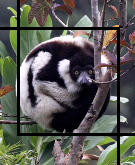A spectacular Lion-tailed Macaque meeting us along the main road in Valparai, Western Ghats, Kerala, India!
Expedition to the Western Ghats
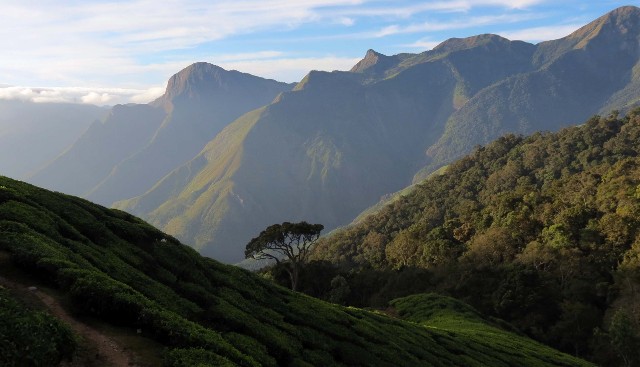
India's spectacular Western Ghats range (also known as the Nilgiri Range) as seen in Pampadum Shola National Park.
Check out our Pbase galleries (Click Here) for more images from the Western Ghats!
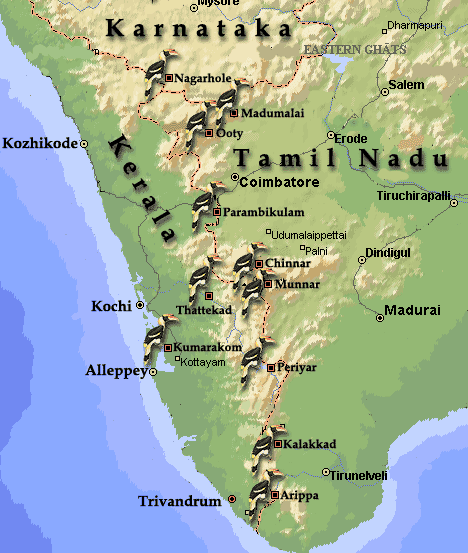
(Linked From: http://www.birdskerala.com/UserFiles/map(1).gif)
Been living in Thailand now for some four months and we were already itching to get out and see some wildlife! Now we find ourselves in the Western Ghats of southern India sitting on the veranda of our spectacular old British tea estate bungalow in Valparai, Tamil Nadu. We’ve been in southern India now for some five days and we’ve accumulated a nice list of twenty-plus mammals, at least twelve of which are lifers for us. We have a few more days to go but most of the region’s endemics are already on our list.
This is my fifth trip to the sub-continent. I keep telling myself that every trip is my last, but somehow I keep finding myself back in India. I’ve always found travel in India to be somewhat of a chore, with virtually any conceivable inconvenience and bureaucratic mishap being a reality, but the species list is so spectacular here, and with all of the amazing trip reports I keep finding on Jon Hall’s website (check here), I am continually enticed to come back again and again. That being said, I am quite sure this is my last trip to India! But then again, there is that pesky Snow Leopard trip in Ladakh calling my name….I am sure I will be back....
I started planning this trip back in the winter of 2012, just after accepting my contract with the International School Bangkok. I started contacting various tour operators in India and was having zero luck finding anyone to respond to my queries. At the same time I was contemplating doing a similar trip down to Sri Lanka during the same break so I also contacted Bird & Wildlife Team (Website Here), who responded very positively that they could handle a trip to the Western Ghats region of southern India as well as Sri Lanka, which is where they are based and have a stellar reputation for producing record-breaking species lists. After a bit of back-and-forth with Deepal, their representative, we committed to a trip to both the Western Ghats and Sri Lanka for our winter break 2013-14! And now here we are.
Our Western Ghats expedition started after an overnight flight from Bangkok with a brief stay at the hotel from hell in Colombo. I decided that since we had a nine hour layover in Colombo that we would be wise to try to catch some zzz’s in a hotel rather than try to crash inside the transit lounge. Mistake! With two all-night thrashing techno-parties along with a really and a filthy hell-hole of a room, our night less than desirable. But it was only a few hours and we were then on our way to Kochi, India.
In Kochi, the capital of Kerala state, we were met by our guide, Lester, one of the partners of Bird & Wildlife Team. Lester was our amazing guide throughout our entire Western Ghats expedition. Lester is mainly the birding guide/expert for Bird & Wildlife Team, but there is little doubt that he is a state-of-the-art mammal guide as well. Lester has a wealth of natural history information and is quite an expert on the culture and geography of the region as well. We all very much enjoyed his company and expertise during the trip. He was also extremely successful in finding us our species of interest! I would without reservation recommend Lester over any local guide in India to take one on an expedition to the region.
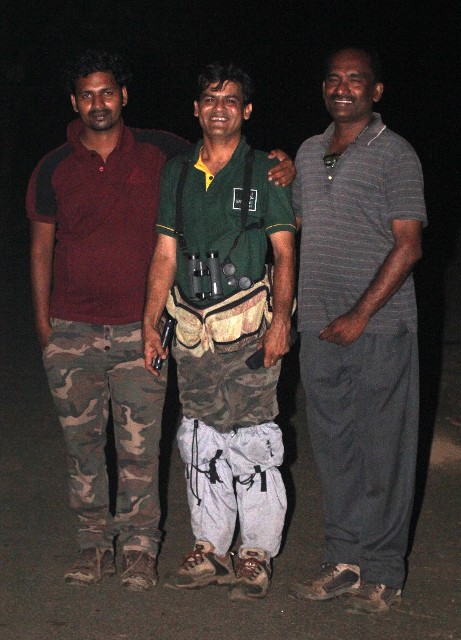
Our man Lester! (center) Without Lester this trip would have been impossible to accomplish to the degree we did. A true naturalist in ever sense. Lester was able to make a difficult expedition sail smoothly and got us a very impressive species list! I can highly recommend Lester and his company "Bird and Wildlife Team" for a great mammal expedition to the Western Ghats and Sri Lanka. (See their website here)
Thattekad Wildlife Sanctuary, Kerala
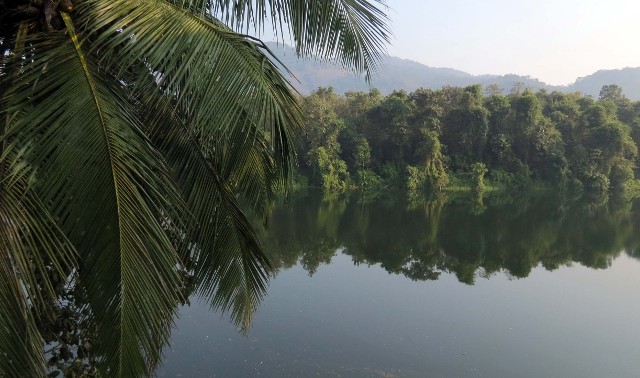
Thattekad is a spectacular place situated on the Periya River in Kerala. Most nature lovers go there for the birds, but it is also a great mammal destination.
Our first destination was the Thattekad Wildlife Sanctuary, situated a couple hours outside of Kochi, in Kerala state, arguably one of India’s more spectacular regions. The drive was nice, although we were a bit tired from our sleepless night in Colombo the night before. However, being in a fresh new place made it easy to stay awake and alert. Our leisurely drive through the countryside of Kerala was both very scenic and by India standards, clean and orderly. While in Thattekad, we stayed at the new Hornbill Camp, situated right on the banks of the Periya River, that courses its way from the Western Ghats range through Kerala state out to sea. Hornbill Camp is a nice place with tented rooms, some of which face the river and offer outstanding views of the magnificent rainforest of Thattekad. Unfortunately it was also near a Hindu temple that belted out VERY high volume music pretty much all night until 8AM! Sadly, we were denied sleep once again….
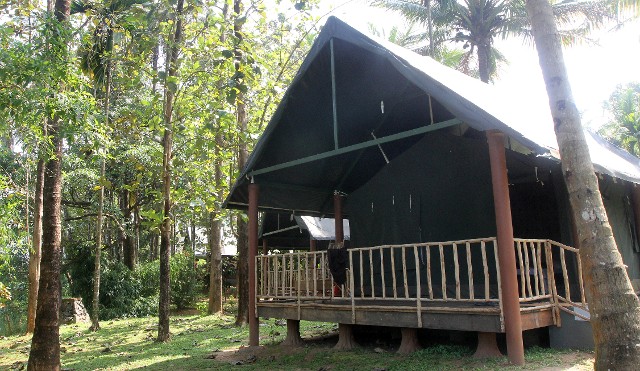
Our tented accomodations at Thattekad.
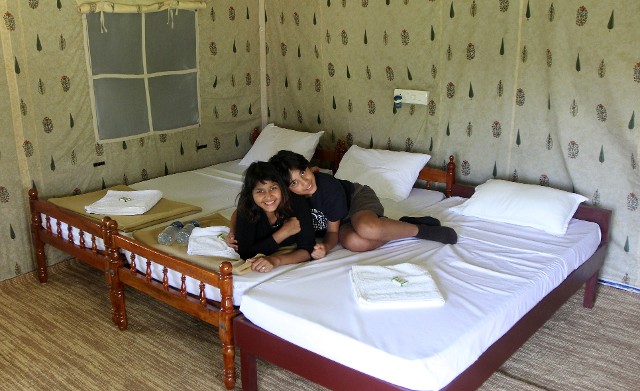
Kinda' reminded us of some of the safari camps we spent time in in Africa over the years.
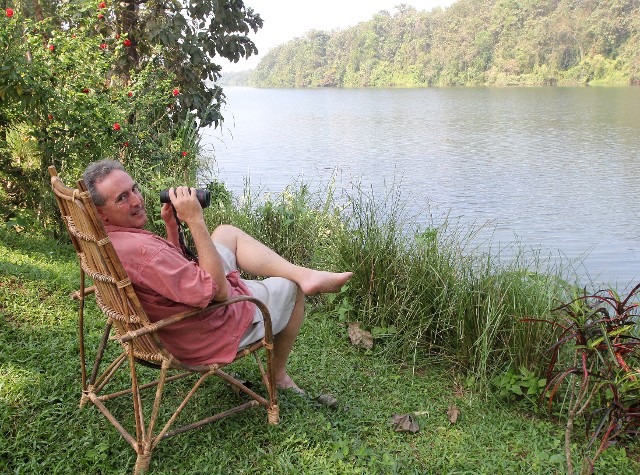
Relaxing on the banks of the Periya, looking for Indian Giant Squirrels in the primary forest on the other side....
Our main goals for Thattekad were the Grey Slender Loris and Travencore Flying Squirrel, only one of which would we be successful locating. We arrived in the mid afternoon, which allowed us to trek for a few kilometers in the forests along the eastern edge of the river. The forest was outstanding for birding and we even nailed a couple of our first targets – Malabar (or Indian) Giant Squirrel and Southern Bonnet Macaque (Macaca radiata radiata). But our main objectives here were the nocturnals. For some reason, the core area of the park is actually closed to the public and tourists can only visit a small area just outside the park boundaries on the lake. Evidently the superintendent of the park has a very large ego and has arbitrarily decided to deny entry to "his" park. At least this was the sentiments we detected locally.
Lester had some local contacts that knew of some good locations outside the reserve to try for the lorises and flying squirrels, so after it became dark we headed deep inside the forests in search of our prey. It would be silly for me to even try to give specific locations to these sites as we made so many twists and turns on dirt tracks getting there, I could never remember well enough to even begin….Needless to say, these dudes knew exactly where to take us!
After a 45 minute or so drive through some monoculture forests, we found ourselves a small dam in the middle of nowhere to park at and begin a small 1km trek in to a small patch of what seemed to be secondary or simply low-canopy forest. Lester’s buds told us we were now in search of Grey Slender Loris. It took us about five minutes or less to find our first one! Actually – our guides were the only one to see it, as during the 15 or so seconds it took us to reach it, the loris had traveled deeper in to the thicket out of sight. I was very bummed! I was convinced this would be our only opportunity for this rare and very elusive species.
Grey Slender Loris (Loris lyddekerianus lyddekerianus)
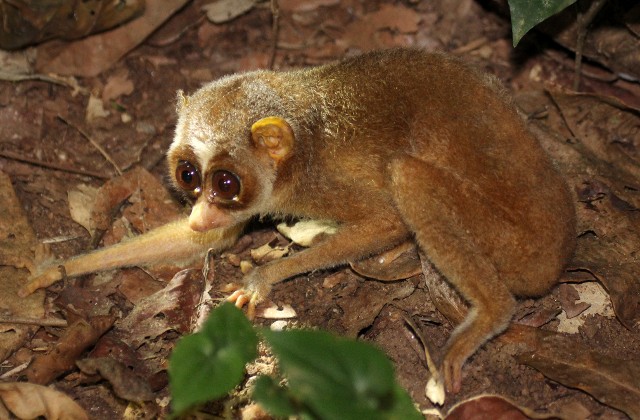
Our third Grey Slender Loris for the night! This one strangely "found" his way to the forest floor. Great photo-ops but why he was on the ground will forever remain a mystery...
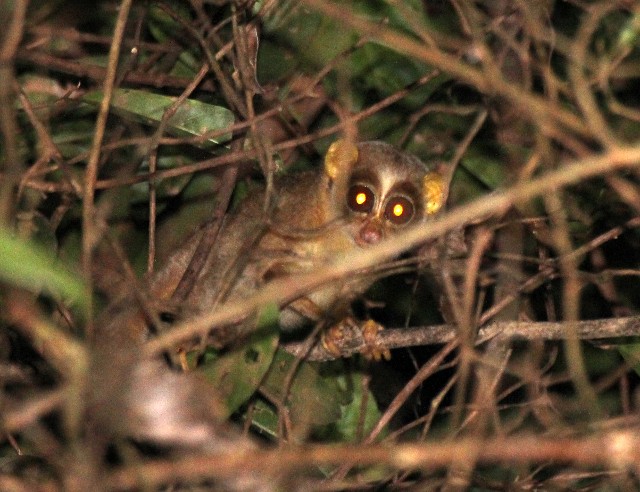
Most of our views of the species this evening were more like this - filtered through dense thicket.
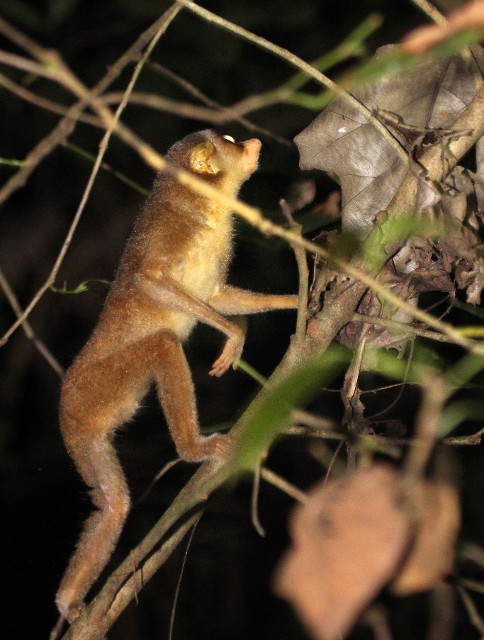
Fascinating appendages on this little primate.
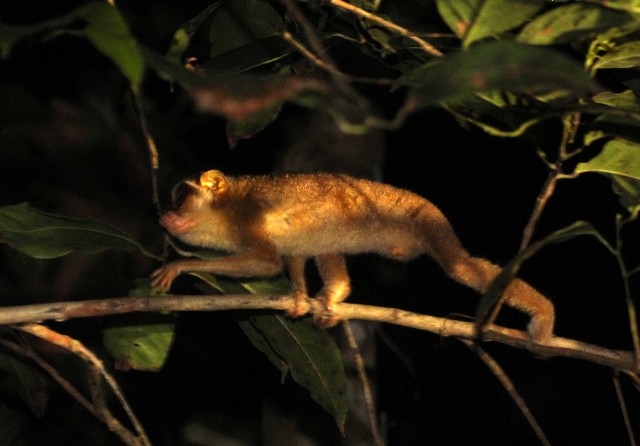
We spotted several Grey Slender Lorises this evening.
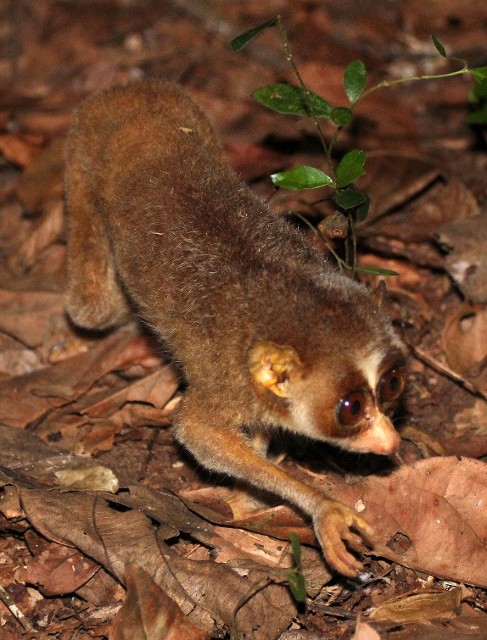
Finding his way to a tree no doubt.
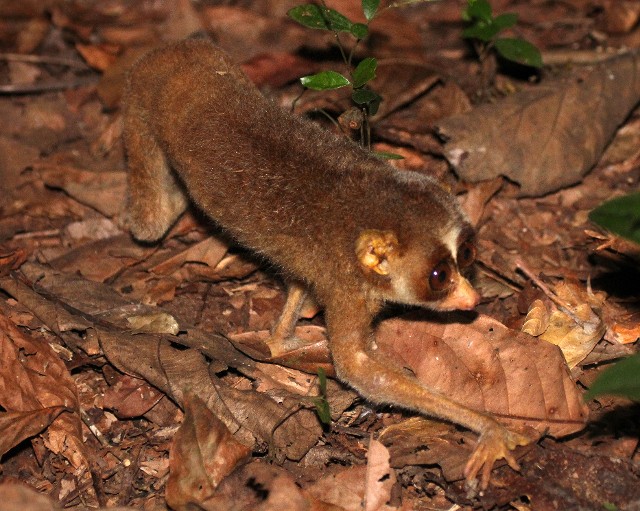
Grey Slender Loris
Well, about 10 minutes later, they found us another! And another and then yet another! Within about an hour we had sighted and heard at least four to five Grey Slender Lorises, at least three of which gave us pretty good views. We were very happy indeed. The density of the lorises in this small forest patch was very impressive, although this situation would not necessarily be indicative of the overall situation for the species as a whole. Due to extreme habitat fragmentation and poaching pressure, both for the tourist and pet trade and who knows what else, the species is in deep doo-doo.
After our success with the lorises, we drove deeper in to the forest to a location that will forever be a mystery to me, to search for flying squirrels. The region was an excellent primary gallery forest that would be prime for the Indian Giant and Travancore Flying Squirrels. After about an hour of searching, we heard and Indian Giant Flying Squirrel in the distance, and with some easy trekking, we found it high above in the forest canopy, just outside of my flash’s range….But it was still nice to see this spectacular giant flying squirrel again and for the first time finally in India.
Indian Giant Flying Squirrel (Petaurista philippensis)
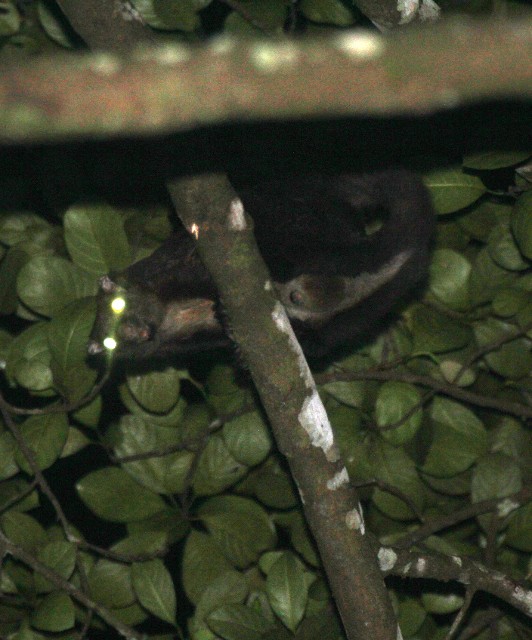
Indian Giant Flying Squirrel. The variety seen here was distinctly different from the ones we found further north and down in Sri Lanka. This is a species in need of revision in my humble opinion.
Southern Bonnet Macaque (Macaca radiata diluta)
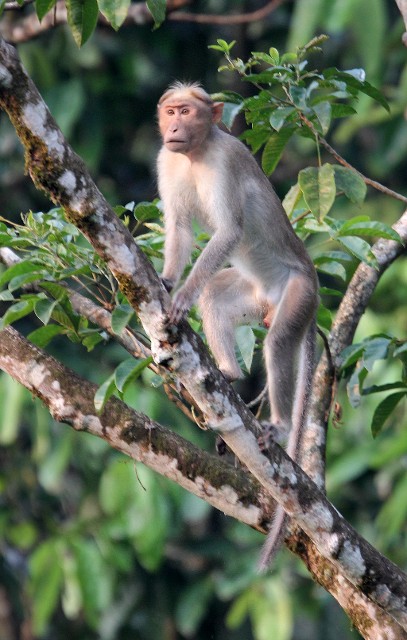
Southern Bonnet Macaques were pretty easy to spot at Thattekad along the main road.
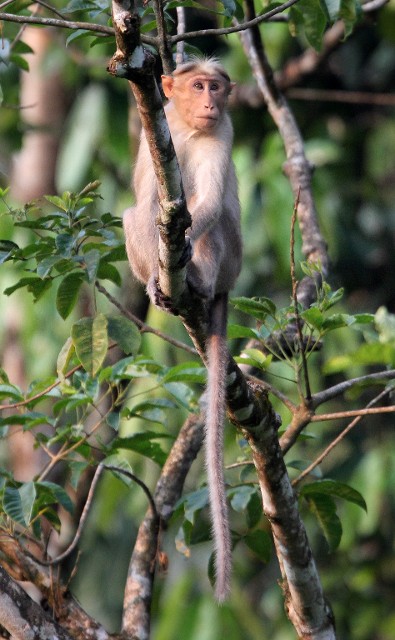
Southern Bonnett Macaque
Pampadum Shola National Park
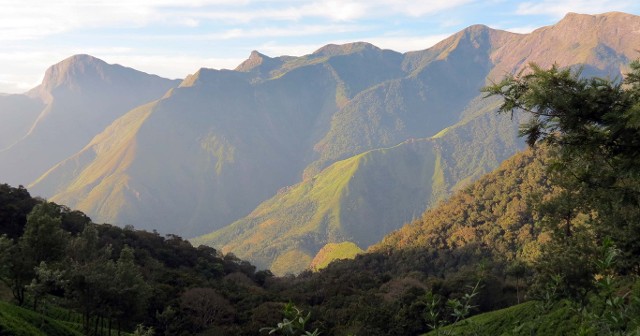
Pampadum Shola, in the heart of the Western Ghats, is absolutely stunning.
Our next destination was Pampadum Shola, about a two hour drive outside of Munnar, Kerala. We were definitely heading up in elevation for this section of our expedition. What should have been a two to three hour drive ended up being about five to six, due to the Christmas holiday traffic jams along the way. I was a bit shocked by the hundreds of tourists that made the journey out of Munnar to view an old dam and shop at some shacks selling Salmonella on a stick. We were caught a bit by surprise with all the traffic along this small windy road, but we finally made it to the park and to our lodging at Noel Camp, situated about 30-45 minutes outside the park’s opposite side.
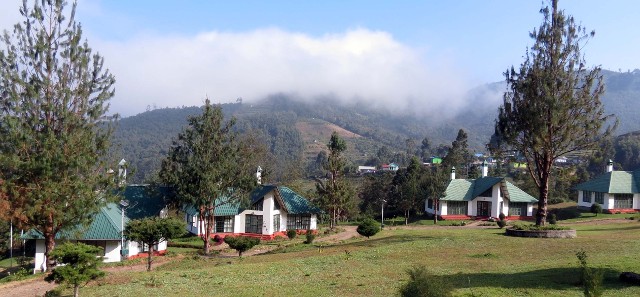
Noel Lodge, situated just north of the park, served as our basecamp while exploring Pampadum Shola. Great place! Just plan your meals well in advance (they take a long time to prepare...BUT they are very delicious).
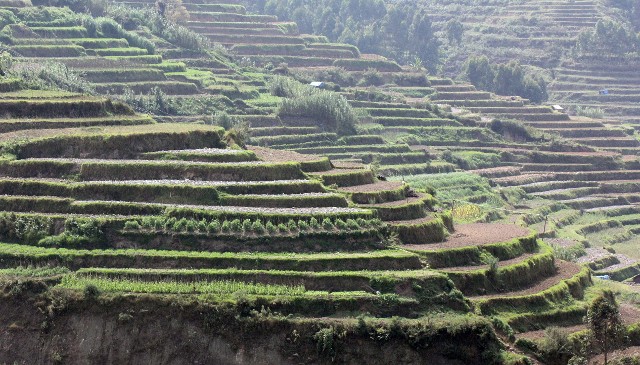
The terraced landscape on all sides of the park was spectacular. We enjoyed our time exploring the villages and area here as well.
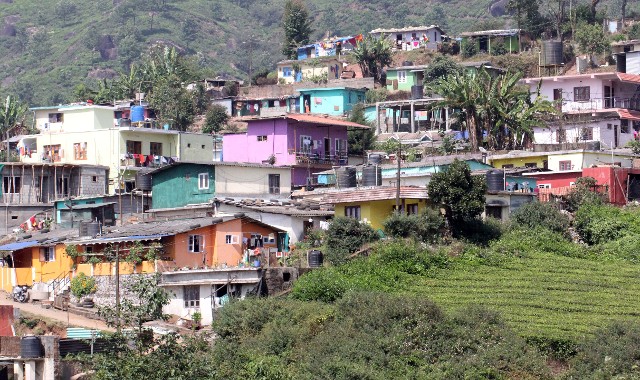
A small, colorful village just outside Pampadum Shola.
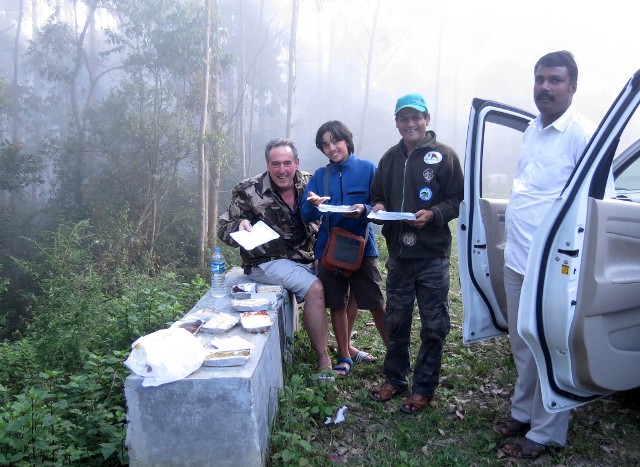
Enjoying a nice picnic lunch in the misty forest of Pampadum Shola. I was hoping the sent of our food would attract the rare and elusive Nilgiri Marten....nope...
At Pampudum Shola, we were reminded of just how bureaucratic and inept the national parks in India can be. The simplest of activities can require special permits and hours of discussion in India’s parks so prepared if you are planning a trip for nothing to go according to plan. I really felt bad for Lester and our driver, Sandeep, having to troubleshoot so much during our trip. Virtually every activity and objective we had inside all of the national parks in India was met with bureaucratic hassles, the likes of which I cannot recall anywhere else we’ve traveled. From getting booted out of our reservations at Top Slip to having rangers (required for all hikes in parks) fail to show up at the designated times…and then abandoning us during the treks for hours at a time…and then demanding higher tips…returning drunk.... or refusing to open park gates until we bribed them, even though it was one full hour past opening time….India’s parks left us with a really bad taste. Not one activity during our entire trip there was smooth, and poor Lester and Sandeep had to deal with all of this, and they did it very well indeed. Thank goodness we had such a professional and strong-willed team like them! But I am absolutely in no hurry to return to India in the near future….Damn snow leopards! I am sure I will be back soon of course!
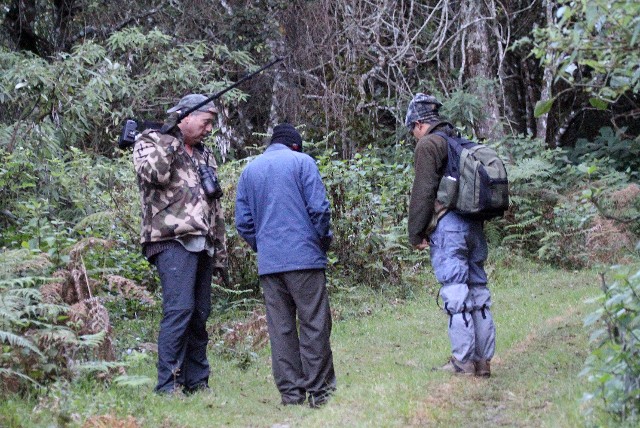
Killing time waiting for some bureacratic BS in Pampadum Shola. After waking up at 4:30 to get a good start for wildlife trekking, our guide never showed and we had to spend TWO hours searching for him and waking him up....
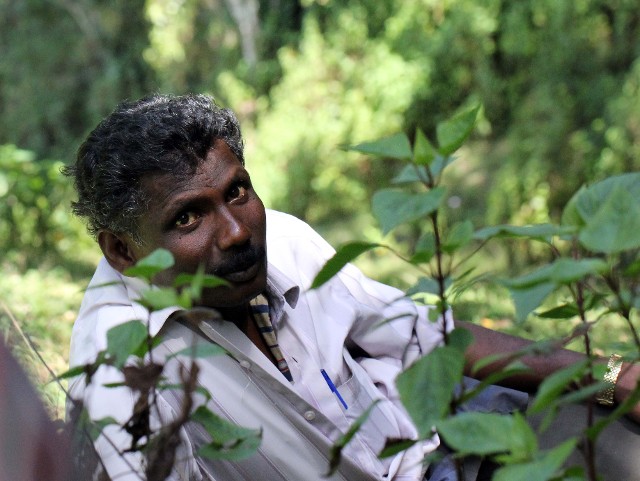
The world's worst guide lounging in the trail of Pampadum Shola. After sleeping in two hours while we waited at the trailhead, he showed us absolutely nothing (thank goodness we had Lester!!! and our own good spotting abilities), ate our lunch, disappeared in to the forest for two additional hours, came back with alcohol on his breath AND then demanded a bigger tip! I mean seriously demanded it! If you go to Pampadum Shola, avoid having this dude as your guide.
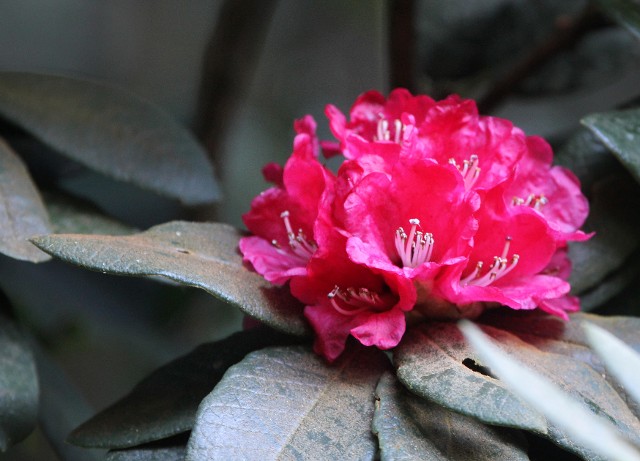
The mountainsides of Pampadum Shola were in full bloom with species such as Rhododendron arboreum var. nilagiricum
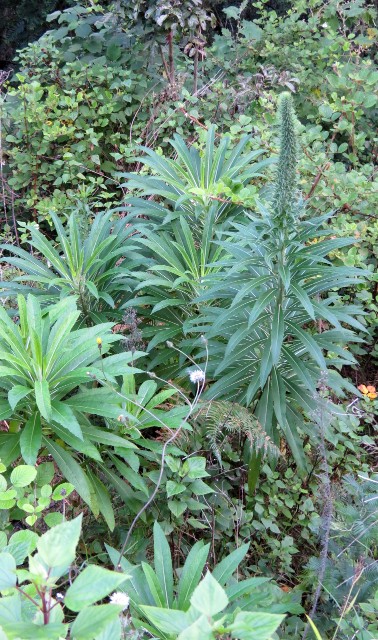
Lobelia nicotianaefolia was also a common species seen at Pampadum Shola as well.
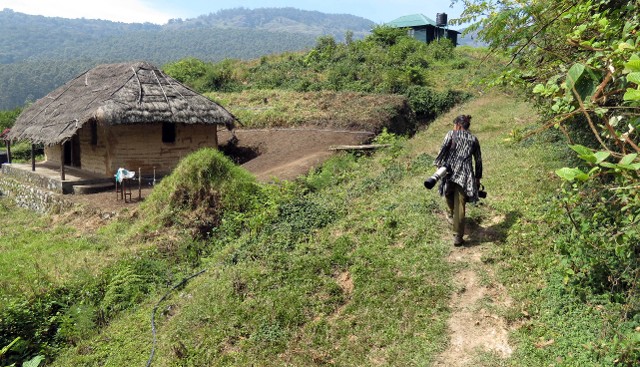
Trekking Pampadum Shola was spectacular.
Sadly we were denied a chance to spotlight Pampadum Shola, so spotting the Travencore Squirrel was impossible there. We did try for some diurnal species there during our treks on the main trail in the park. Pampadum Shola is absolutely spectacular protecting a significant amount of southern Nilgiri Western Ghats forest ecosystem. Rife with birds, the forest his home to many species of interest for birders. Our main target there was the even more elusive Nilgiri Marten. Although we did see ample sign of the recently spotted martens, we were unlucky with that species. We did however spot dozens of endemic Nilgiri Langurs, Gaur, Malabar Giant Squirrels and even the rare endemic Dusky Striped Squirrel for a brief un-photographable moment in a bamboo thicket.
Gaur (Bos gaurus gaurus)
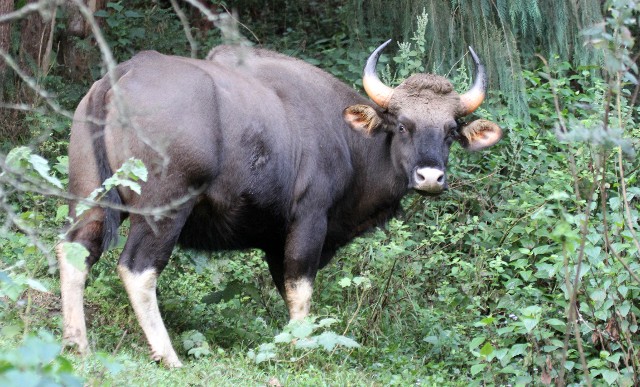
Gaur were very common at Pambadum Shola.
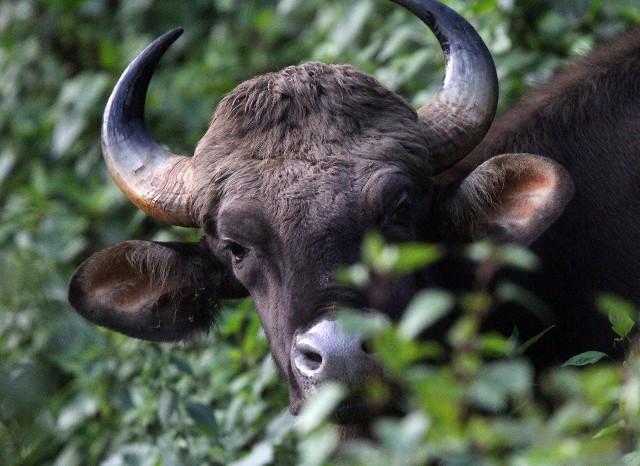
Gaur!
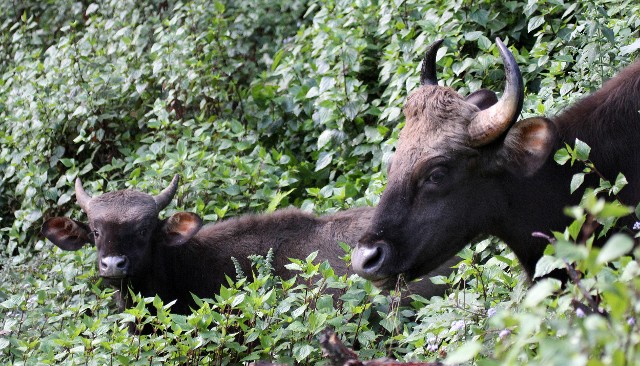
Mother and young
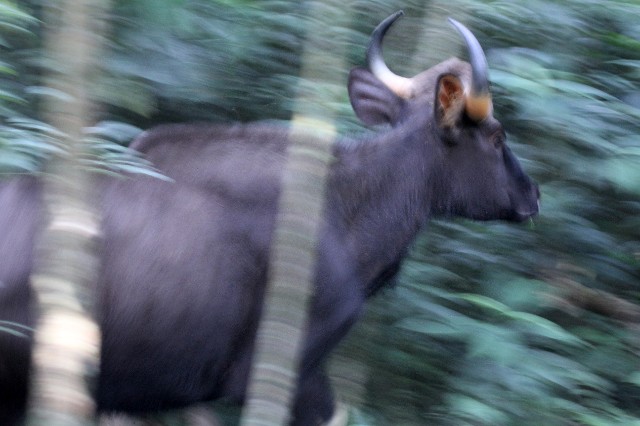
We both shocked eachother!
Nilgiri Langur (Trachypithecus johnii)
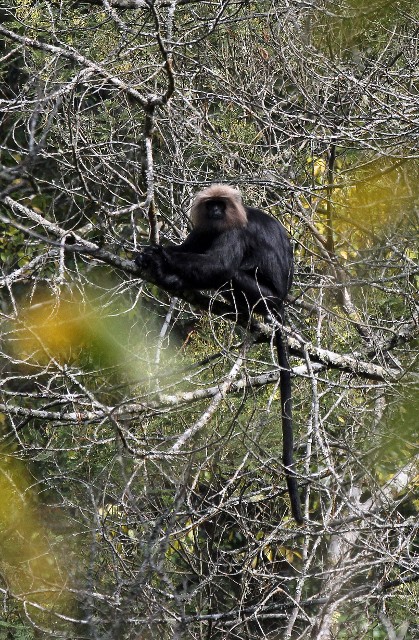
Great photo-ops were tough to come by at Pampadum Shola for pretty much all the critters we spotted. Poaching is definitely a serious issue there. Seeing how ineptly the park was managed, it is easy to see why.
Malabar Indian Giant Squirrel (Ratufa indica maxima)
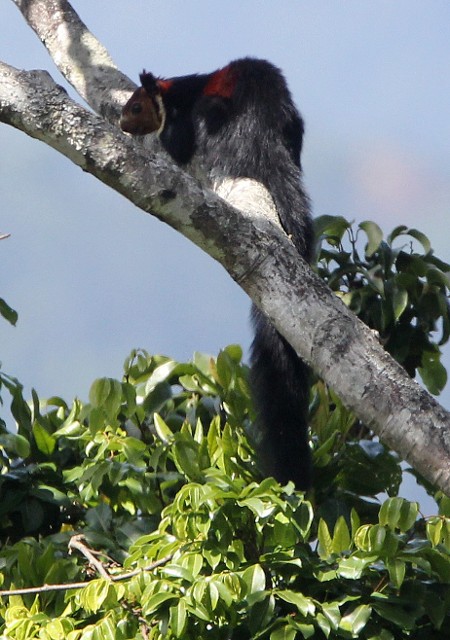
Indian Giant Squirrels were very common in Pampadum.
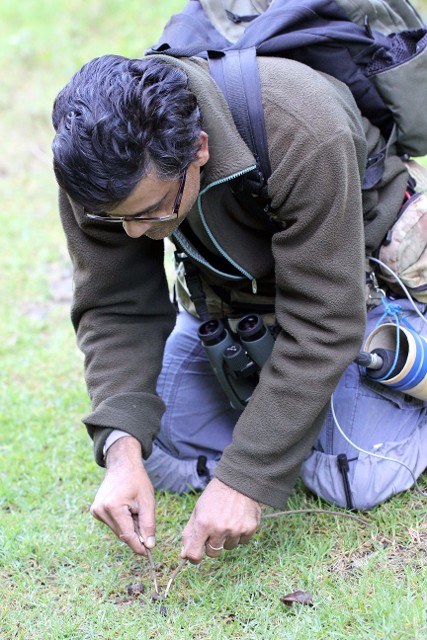
Pretty much our entire time in the park we felt we were close to our elusive target, the Nilgiri Marten. Here Lester is inspecting some fresh scat along the main trail of the park.
Brown Mongoose (Herpestes brachyurus)
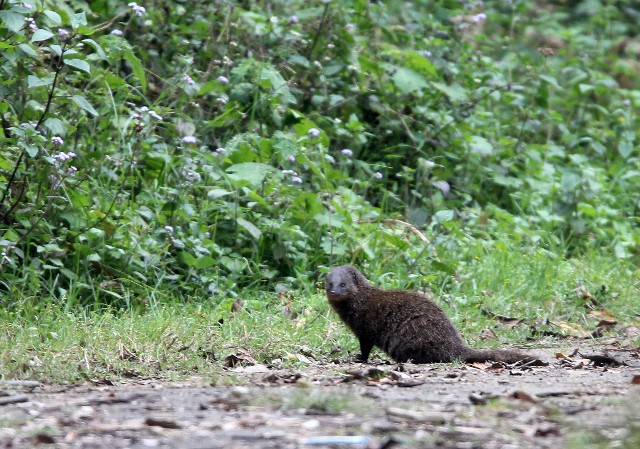
This Indian Brown Mongoose was not our only Viverrid during our stay at Pampadum Shola.
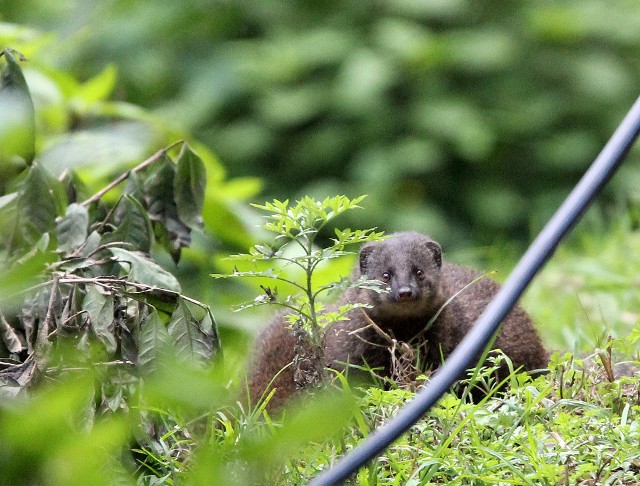
There was a nice family of them living near the ranger station at the summit of the pass.
Stripe-necked Mongoose (Herpestes vitticollis)
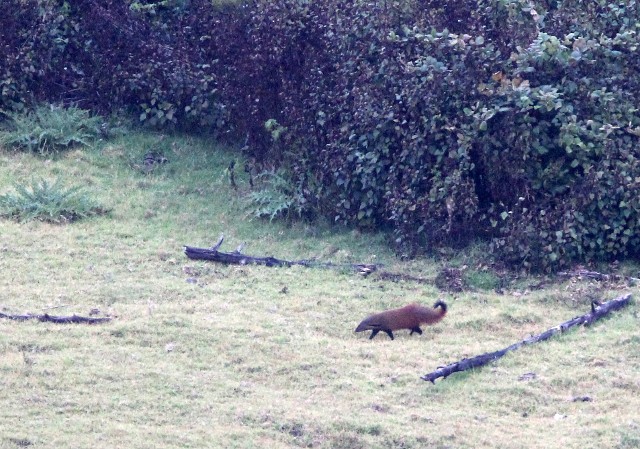
We did get a good albeit distant view of a very large Stripe-necked Mongoose at Pampadum Shola as well.
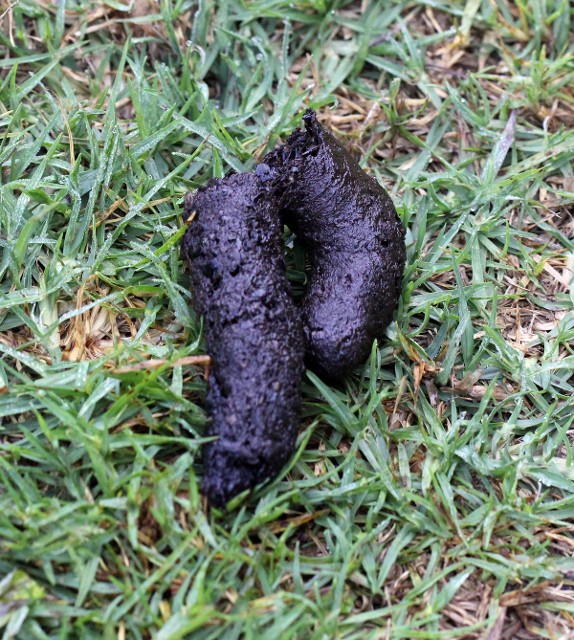
The main trail was filled with sign of various species. We believe this was Leopard scat.
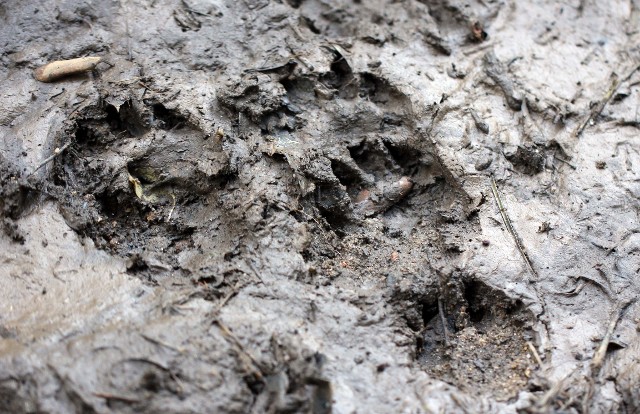
We thought this might be a Small-clawed Otter working its way along the trail at Pampadum Shola.
We also caught good sightings of the mountain race of the Bonnet Macaque (not sure if it is a subspecies or not….) as well as both the Stripe-necked and Indian Brown Mongooses, and some sort of mystery shrew (perhaps Day's Shrew?) that kept darting across the trail in many locations. There were some micro-bats flying about at night too, but their ID will always remain a mystery, but I am putting my money on Indian Pipestrelle.. Although we were not to spot our Nilgiri Marten, we enjoyed our time in the park nonetheless. It was great to be in such a spectacular part of India.
Northern Bonnet Macaque (Macaca radiata radiata)
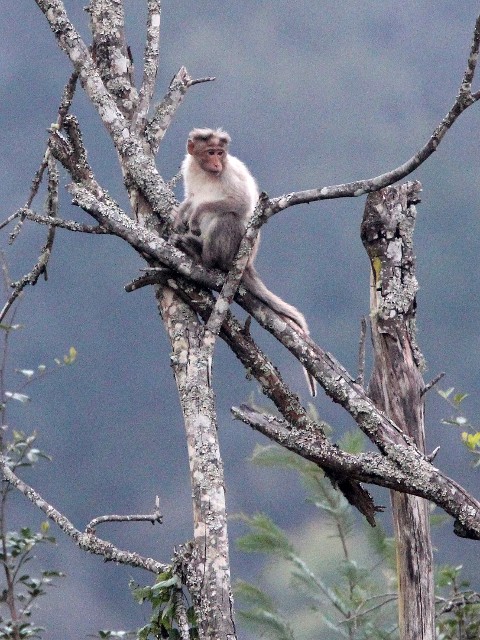
Not sure if this is a valid subspecies or not but the Montane Race of the Bonnet Macaque was found in Pampadum Shola with little effort.
Eravikulam National Park
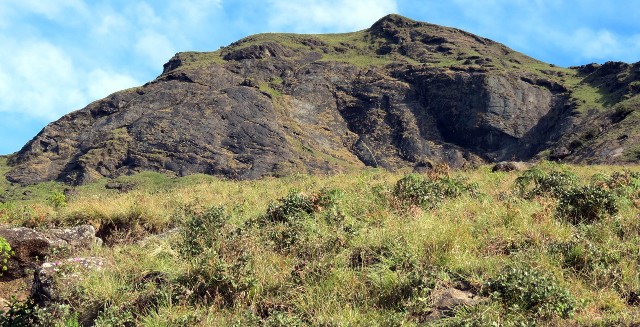
Eravikulum National Park, home of the Nilgiri Tahr!
There is little doubt that one of the more charismatic endemics to the Western Ghats is the Nilgiri Tahr, the southern cousin to the Himalayan Tahr. The best place to spot this species is no doubt Eravikulam National Park, located just to the other side of Munnar and about a three hour spectacular drive from Pampadum Shola. We arrived on Christmas day so the crowds were pretty intense. Although we did manage to leave Pampadum Shola very early, we were still greeted by some significant lines at the bus stop (you need to take a national park bus up the mountain in order to see the Tahr). Somehow Sandeep was able to score some tickets that made it possible for us to skip the lines, so luckily we were on one of the earliest buses up the hill. Evidently it is very wise to get up to the top earlier rather than later as the Tahr tend to work their way up the hill out of reach as the day proceeds.
Nilgiri Tahr (Hemitragus hylocrius)
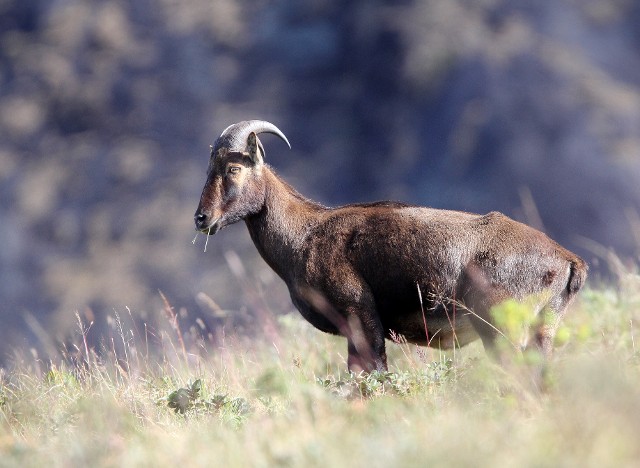
A stunning Nilgiri Tahr at Eravikulam National Park.
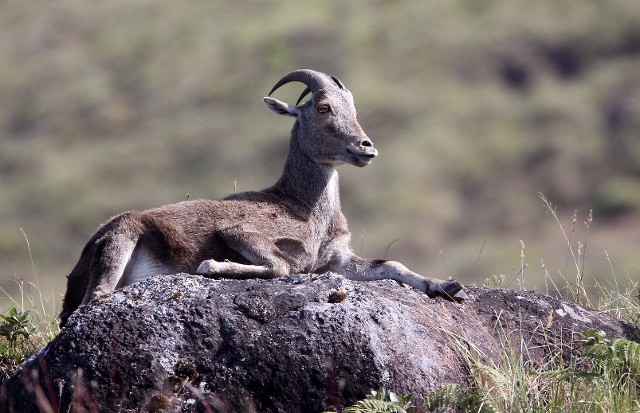
Enjoying an early morning sun bath at Eravikulam.
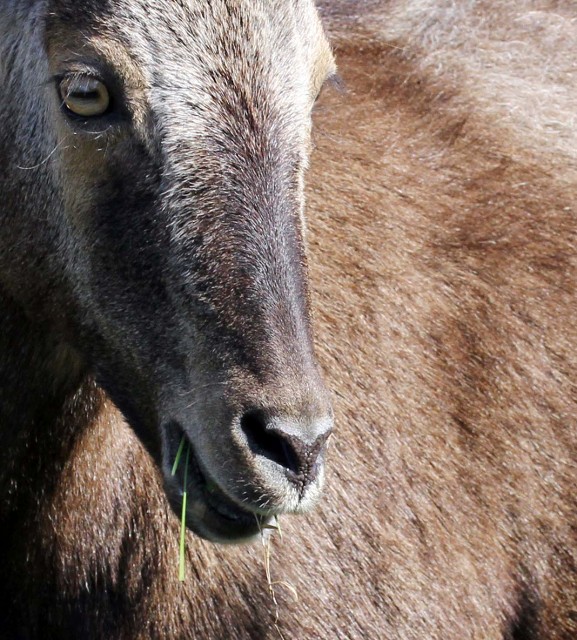
Cokie's amazing image of a Nilgiri Tahr!
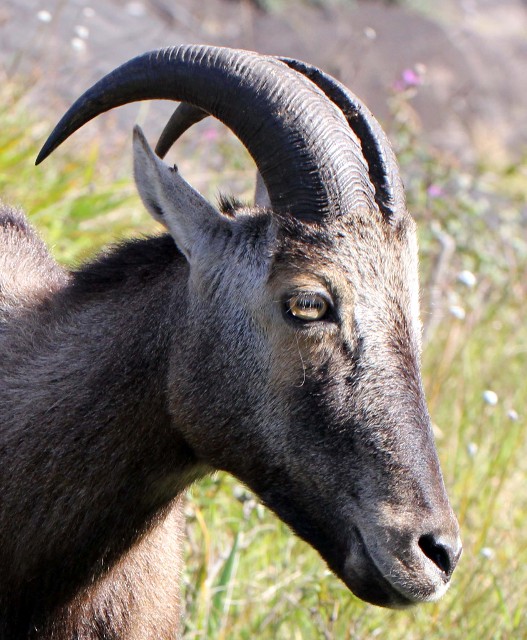
Cokie's really getting a knack for this wildlife photography-thing!
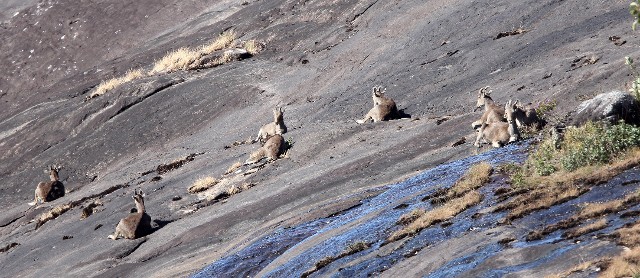
Altogether we spotted about 18-20 tahr this morning at Eravikulam.
Eravikulam is absolutely stunning. Reminiscent of Table Top Mountain or Wawu Shan in Sichuan, Eravikulam is an impressive geologic feature as well as a treasure trove of rare, endemic flora as well as being home to the rare Nilgiri Tahr. The Tahr were relatively easy to spot on the mountainside from the bus, so we had a very easy time finding about 20 of them. But I could imagine that on the wrong day with a spat of bad luck it would be just as easy to get completely skunked on the species. Our day was a gloriously sunny day with golden morning light, but as we were leaving, we noticed the daily thick blanket of fog coming in, which, if thick enough, would surely obscure the views of the Tahr we were lucky enough to have.
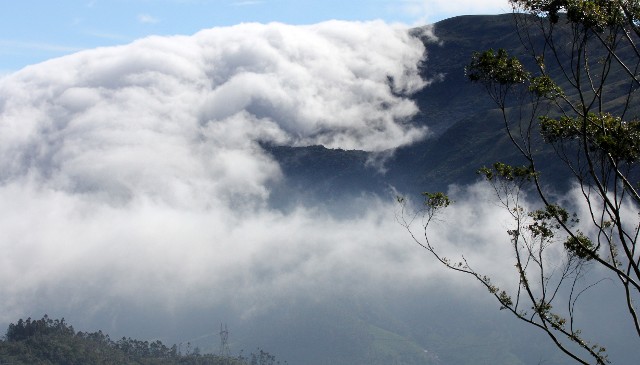
The fog rolling in to Eravikulum. Had we arrived any later we would have missed the Tahr...
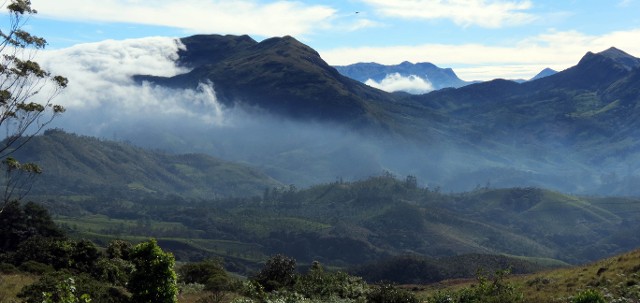
The views from Eravikulum were spactacular.
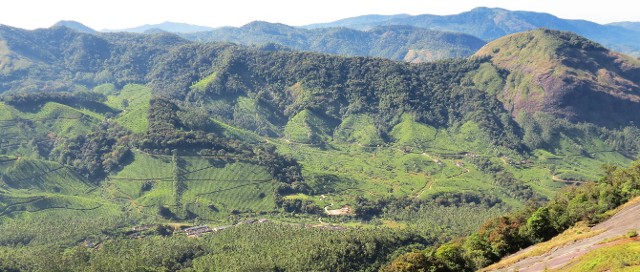
Once again, we found ourselves in Tea Country.
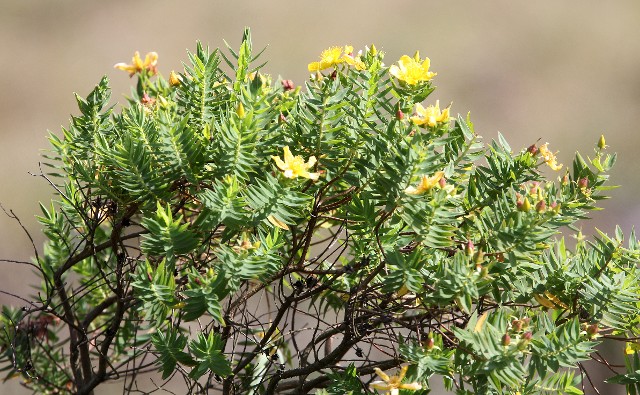
The flora of Eravikulum was very interesting. Here we have one of the dominant shrubs in the range, Hypericum mysurense.
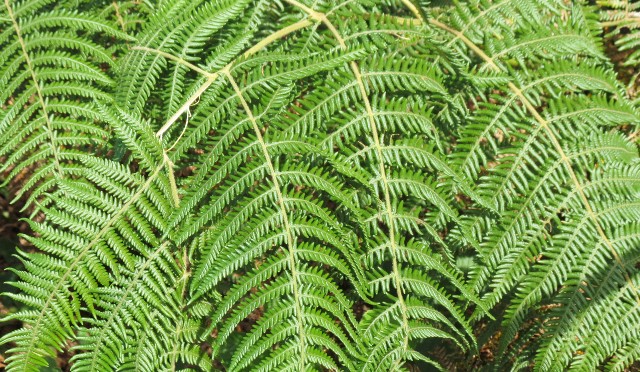
Massive Pteridium aquilinum ferns populated the mid-elevation hillsides of Eravikulum.
Chinnar National Park
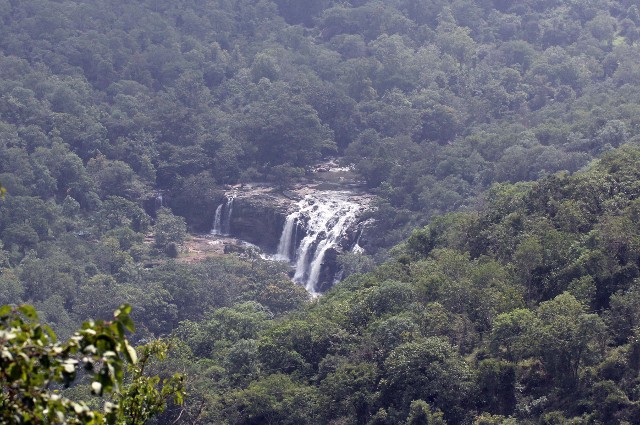
Chinnar National Park was a nice place to spend an afternoon.
Chinnar was a park we simply passed through on the way to Top Slip. We did see Bonnet Macaques, Tufted Langurs as well as Gaur during our drive, but the park itself may be worth exploring. Its massive size and relatively inaccessible interior make it a bit daunting but it is a world class tiger reserve and the ease as which we could locate the three species we did see might indicate other species would be possible as well. The scenery itself is worth a picnic stop at the very least! That is if the rangers leave you alone ….As soon as we arrived and laid out our picnic supplies, the feds swooped down on us so fast we didn’t have time to swallow our stash…. Interesting how they loved to pick on the foreigners who were politely having a small bite to eat, but completely left alone the locals eating, taking dumps and littering well within sight of the same rangers harassing us….One has to wonder….
Northern Bonnet Macaque (Macaca radiata radiata)
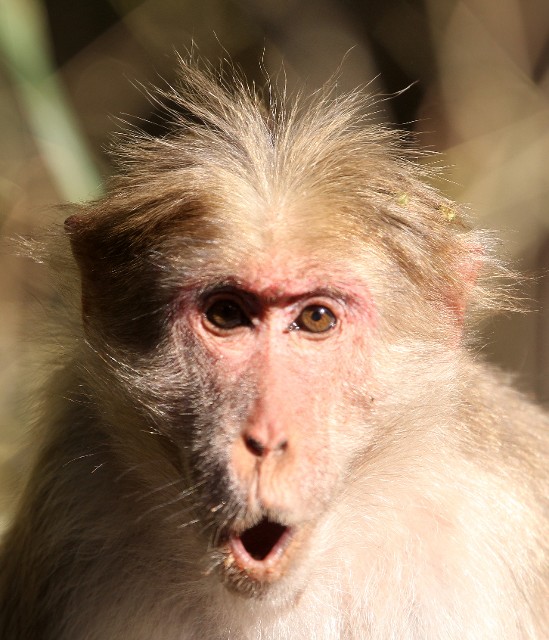
Northern Bonnet Macaques were seen along the main track of Chinnar.
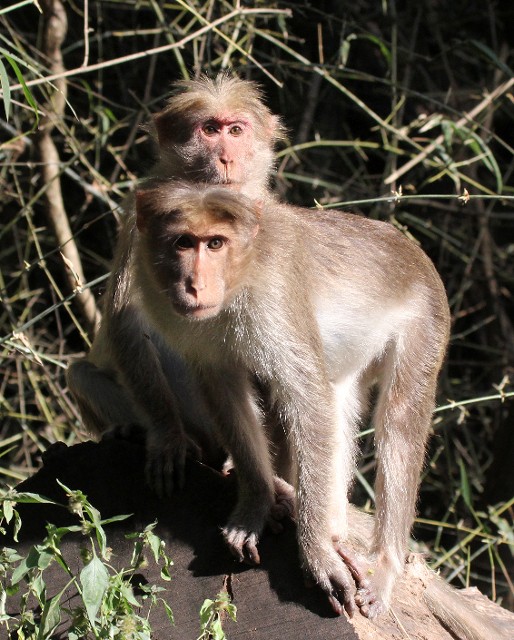
Northern Bonnet Macaque
Tufted Langurs (Semnopithecus priam priam)
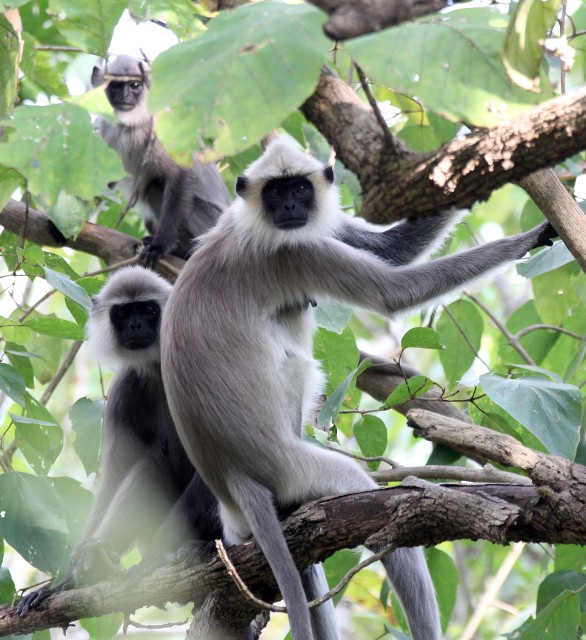
Somewhere north of Chinnar, we came across this troop of what we originally thought were Southern Plains Langurs but they ended up being the Indian subspecies of Tufted Langur!
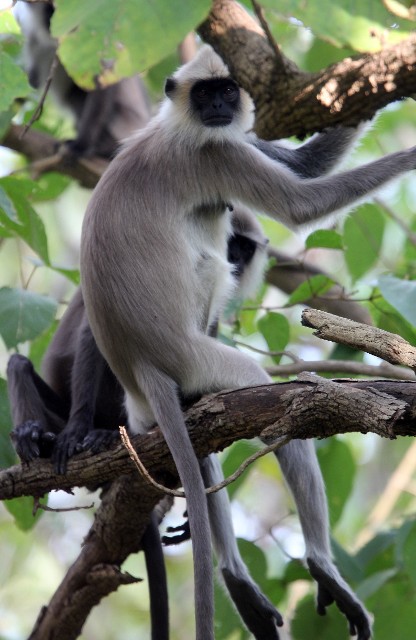
Indian Tufted Langur
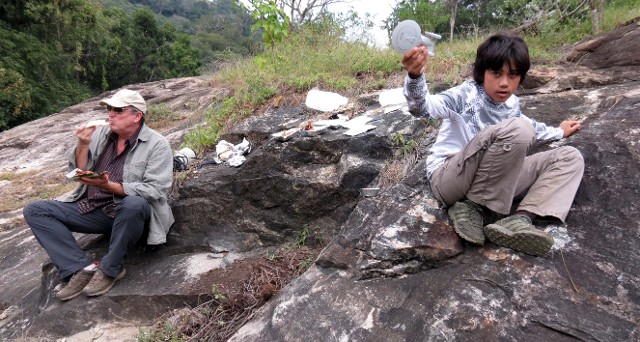
Enjoying a picnic lunch stop in Chinnar...
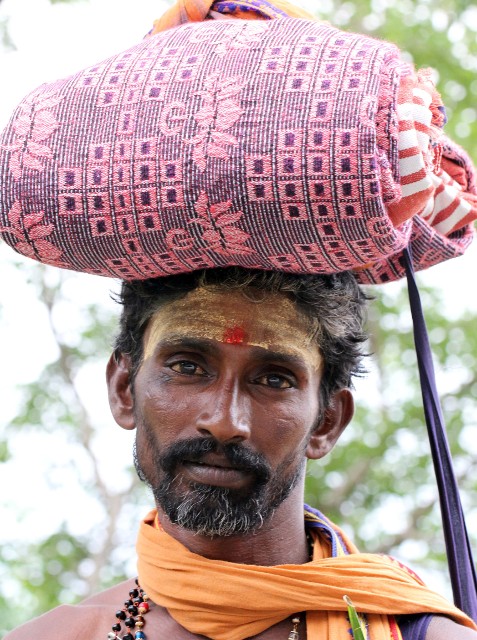
Pilgrim on the long trek to a famous temple in Chinnar.
Indira Gandhi (Topslip) Wildlife Sanctuary
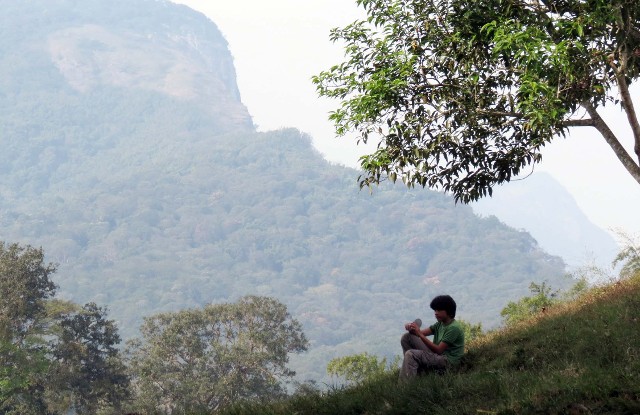
Topslip was one of the more peaceful and spectacular stops on our trip for sure.
Along the way to what was to be one of our top destinations for our trip, we found that our reservations to Top Slip had been canceled due to visiting government officials taking all of the available lodging options there. Evidently this happens often in India, the country where national parks are very clearly (based on our experiences from this trip and all previous ones) FOR corrupt government officials and the well-connected wealthy, who from time to time, allow by their good graces, common folk like us and the middle class Indians to come in when the rich and politicians don’t want to use the parks themselves….! Actually I am really not exaggerating that much.
Well, thankfully Lester and Sandeep were able to wrangle up some lodging on Christmas day of all times, just outside Top Slip at a nice enough lodge situated inside a scenic palm plantation. We scurried to make alternative plans to re-arrange the rest of our tour but eventually we were somehow able to score one night inside the park at the Chital House for the next evening. We were all very happy that all of Lester’s and Sandeep’s efforts paid off and we were allowed to eventually stay inside the park and not have to move on a day early. Top Slip ended up being one of our most special places on the entire trip. The pin-drop silence of the park after the tourists left was refreshing. Listening to the cool breezes blow and the sounds of the forests were uplifting for us weary travelers.
We did score a few new species, most of which were Indian safari classics, like Sambar, Chital (Spotted Deer), Indian Giant Squirrels, Wild Boar and ample sign and sounds of species like Leopards, Asian Elephants, and others. Even a tiger had been spotted a few days before our arrival. And we even nailed a few other species like Woolly Horseshoe Bats (in a culvert along the main track), Jungle Squirrels, and Indian Hare. There were repeat performances by Gaur, Nilgiri Langurs, Southern Plains Langurs, Bonnet Macaques and others.
Southern Indian Wild Boar (Sus scrofa affinis)
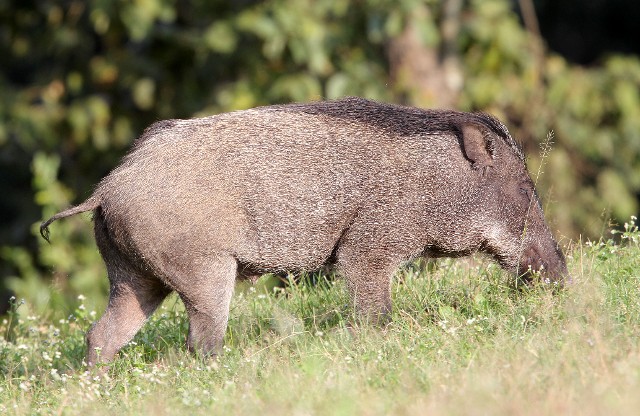
India Wild Boar were very common throughout Topslip.
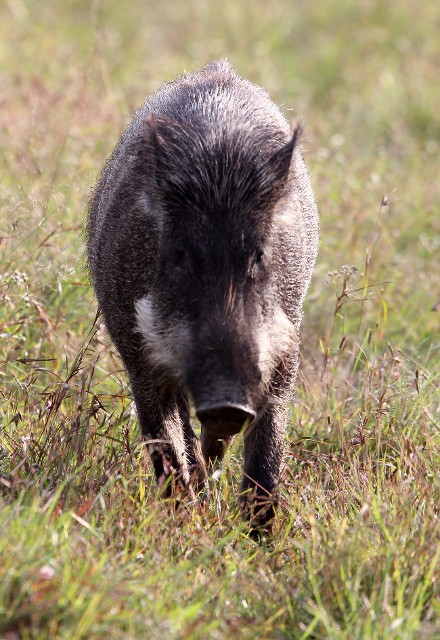
Indian Wild Boar
Northern Bonnet Macaque (Macaca radiata radiata)
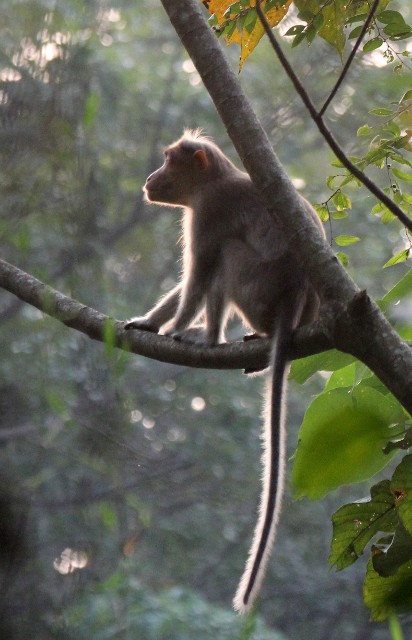
Northern Bonnet Macaques were also very common throughout Topslip.
Nilgiri Langur (Trachypithecus johnii)
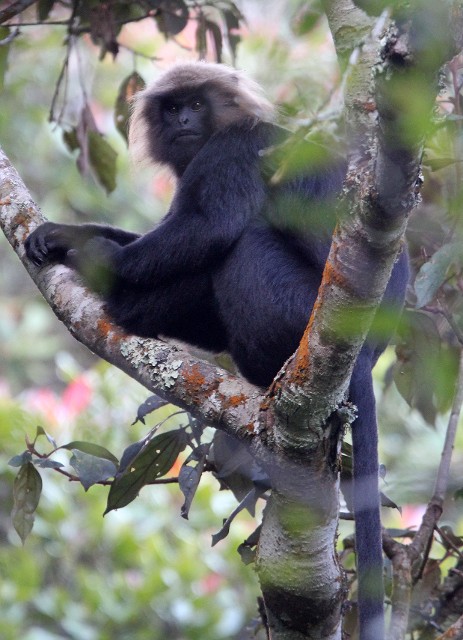
Topslip was a great place for good views of the beautiful Nilgiri Langurs which hung out in good numbers near the HQ.
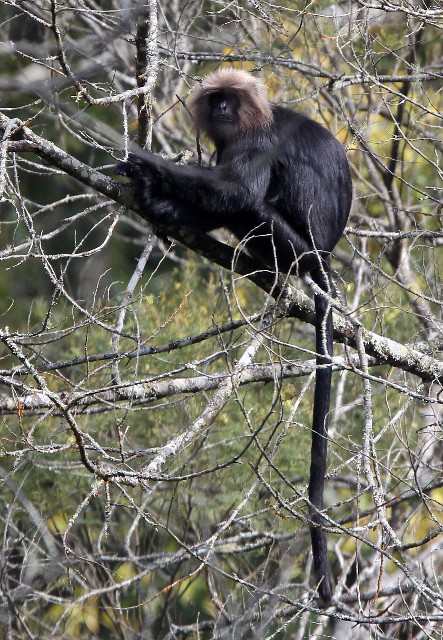
Nilgiri Langur at Topslip.
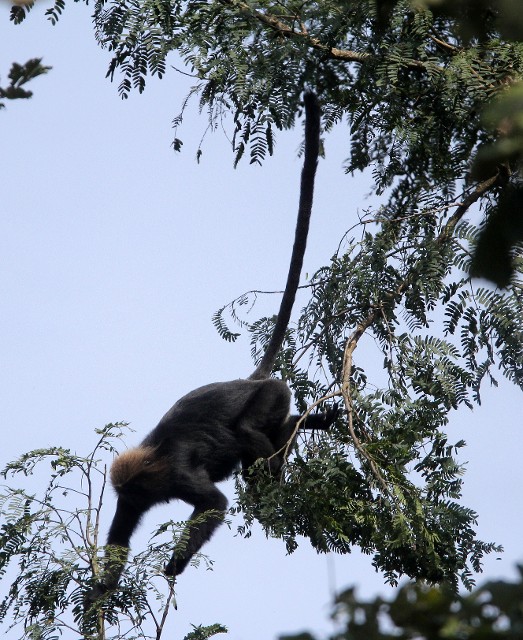
Nilgiri Langur leaping through the canopy at Topslip!
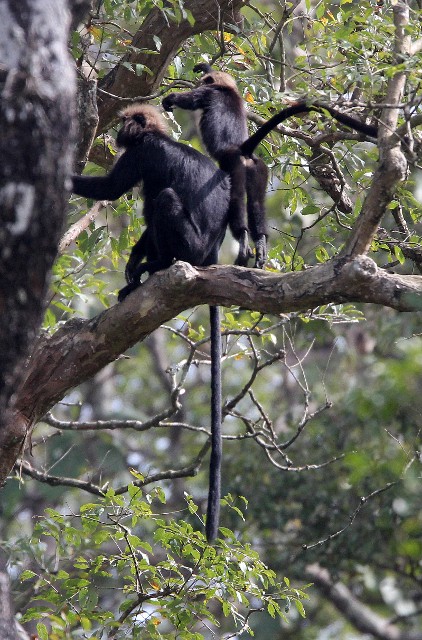
Deep in the core area of Topslip, we came across this pair of Nilgiri Langurs playing in the canopy.
Southern Plains Langur (Semnopithecus dussumieeri)
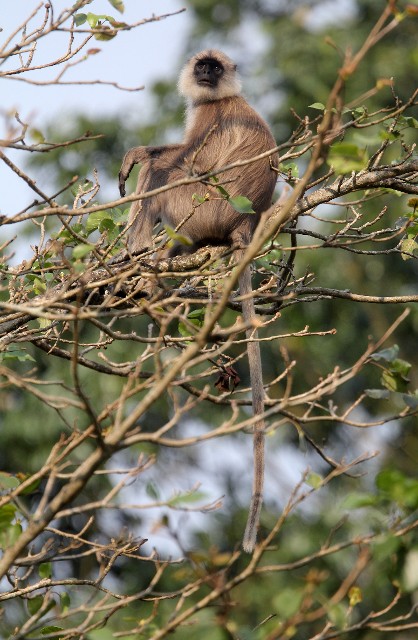
Southern Plains Langurs were also very common at Topslip.
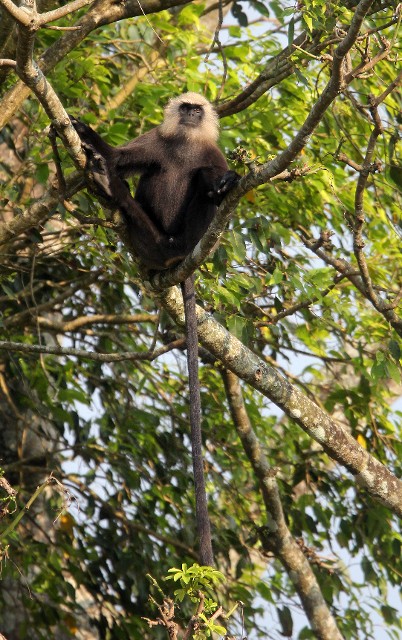
Interestingly, Topslip seems to be one of the only places where the Nilgiri and the Southern Plains Langurs hybridize fairly regularly.
Indian Spotted Deer (Axis axis axis)
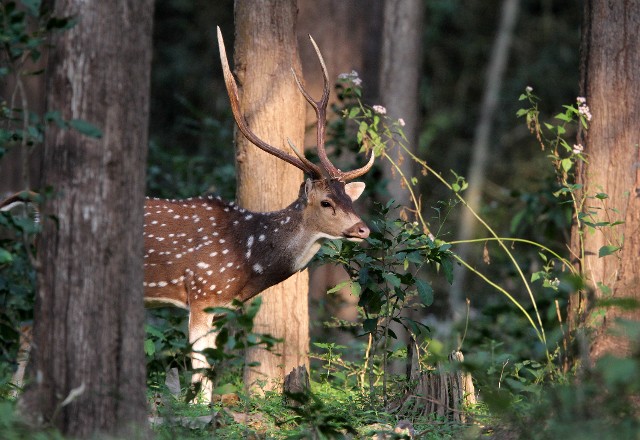
Indian Spotted Deer were common at Topslip. This stag was watching his impressive herom.
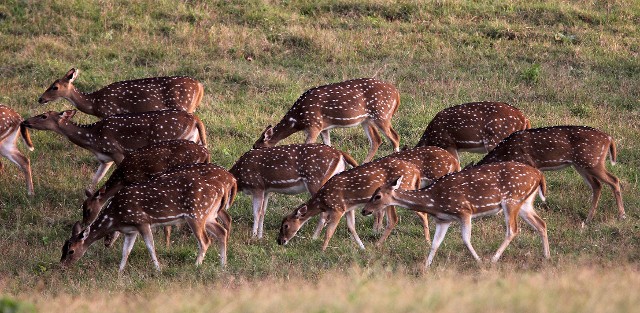
His herom....
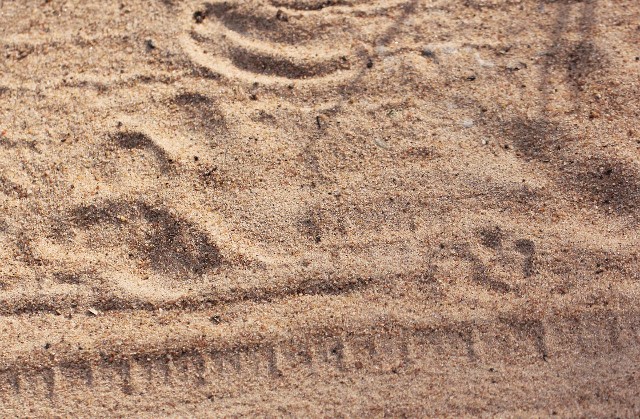
This morning's cat sign at Topslip - a Leopard and perhaps a Junglecat?
Woolly Bat (Rhinolophus luctus)
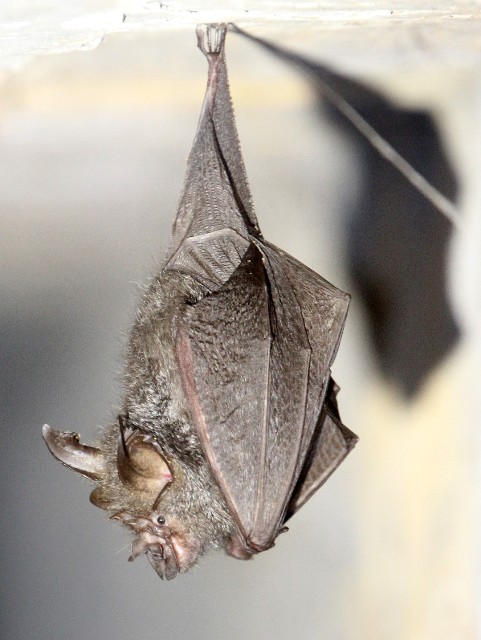
Som's eagle eyes spotted this very large Woolly Bat in a culvert along the main track near the HQ of Topslip.
Jungle Squirrel (Funambulus tristiatus)
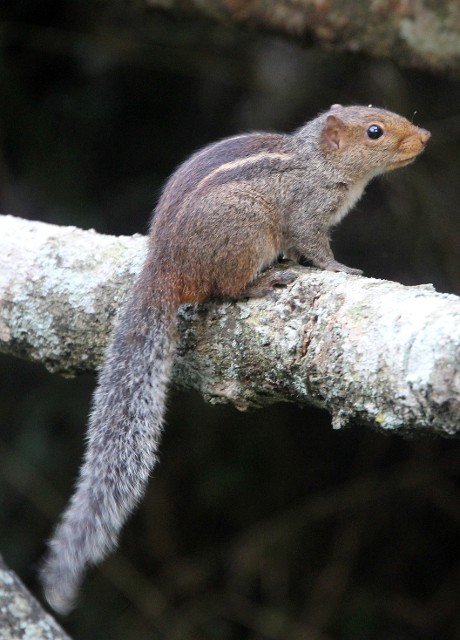
Topslip was full of Jungle Squirrels and finally one slowed down enough for me to photograph it!
Our main activity was a great trek through heart of the forests of Top Slip. Our ranger guide told us we trekked about 16 kilometers but we all agreed it was more like seven or eight in the end. We didn’t add any new mammals to the list but we did improve our sightings of the langurs and squirrels, yet the best part of the trek was the trek itself. Our journey took us through some outstanding stands of remnant forest with patches of teak and giant bamboo as well as many other species, both native and invasive (sadly). The trek was punctuated with outstanding vantage points that provided us views of the vast expanse that is Top Slip. The cool breezes made all the up and down trekking bearable and even enjoyable. All in all it was a truly spectacular day in the wilderness of the Western Ghats. And the birding was amazing – all of the valleys and ravines were swarming with bird species, many of which were the spectacularly diverse endemics of the region. Our trek was to conclude with a view up the hollow trunk of an ancient mango tree to see some bats but none of us remembered our torches so…..
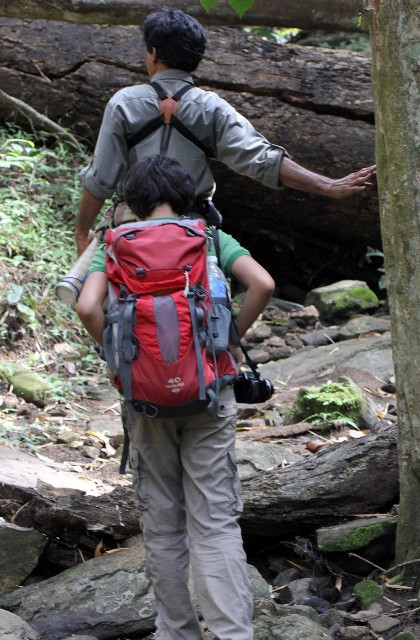
Our off-trail trek through Topslip. Great wilderness.
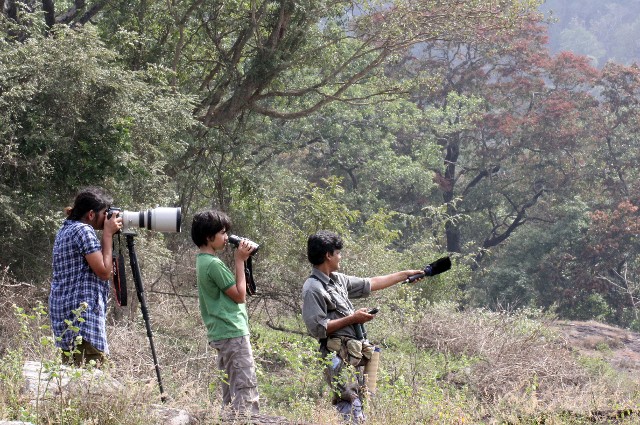
Lester making bird call recordings in Topslip. Som taking pics of the bird making the calls and Cokie simply trying to spot it.... I cannot imagine a better moment for me and my family.
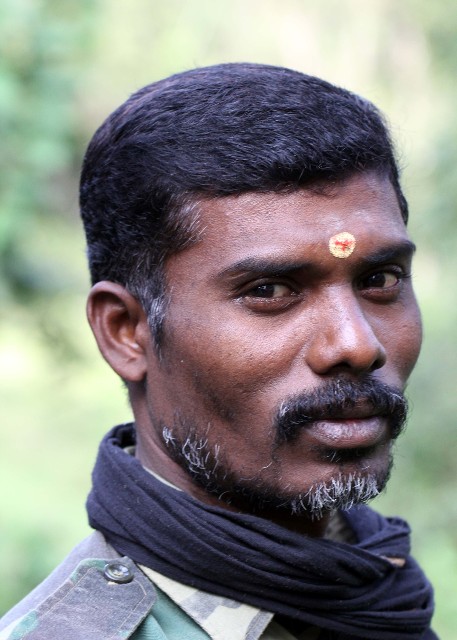
Our handsome ranger-guide at Topslip.
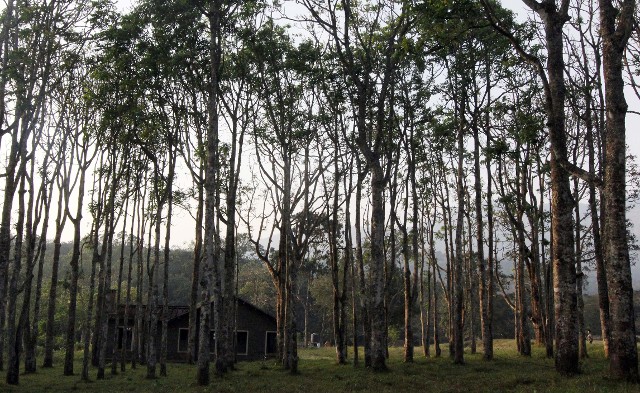
The view from our cabin (Pitta) at Topslip.
Perhaps the best part of the stay at Top Slip, aside from getting harassed at GUN POINT by the park superintendent and his armed escorts because one of us dared to flash a torch at a chital to see that the hell it was standing next to us on the road…..was the amazing star-studded evening spent chatting outside the Chital House on a cool, breezy winter evening in Top Slip. Absolutely sublime.
Valparai & Anamalai Hills National Park
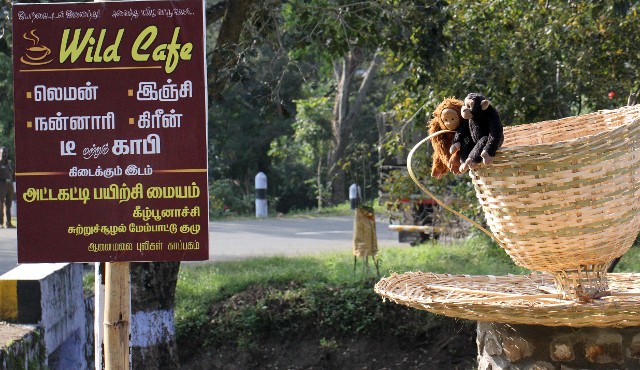
Once again back in Tea-country! Valparai is definitely the king of tea in India. And it is a great wildlife destination as well.
We were hoping for an early morning drive in Top Slip, but of course, the park decided not to open up its gates at the designated 6AM time, so we were met with locked gates once again. At this stage, we decided to B-line it to our next destination, Valparai, in hopes of spotting our final major mammal endemic, the Lion-tailed Macaque. The trip to Valparai from Top Slip is not all that far, but the roads are very slow going, so the 60 or so kilometer trip took about 3.5 hours.
Valparai, an old British colonial tea-producing region, is situated just outside of Anaimalai Hills Tiger Reserve and is evidently THE place to see the macaques. We found a nice troop very easily on the side of the road which allowed very good prolonged views. Although we had an easy time finding them, one could come up empty with a bit of bum luck as we found out on our way out of the region when we failed to spot the troop. We spent all-tolled a couple hours observing, photographing and simply enjoying the macaques at two different locations at two different times of day in hopes of improving the lighting for photography. Watching these phenomenal primates go about their daily lives was a great way to spend our day. What a strange looking species….
Lion-tailed Macaque (Macaca silenus)
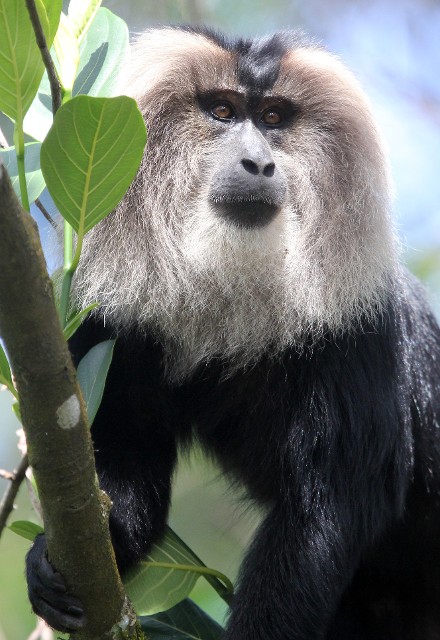
The macho alpha-male of our Lion-tailed Macaque troop at Valparai!
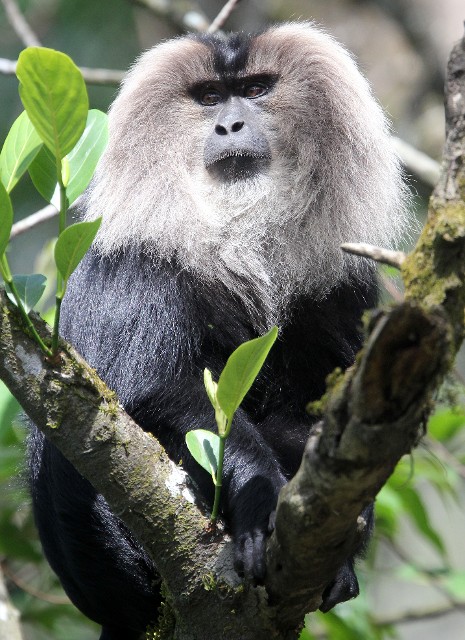
I think these rank up there with the Gelada as some of the coolest primates on the planet!
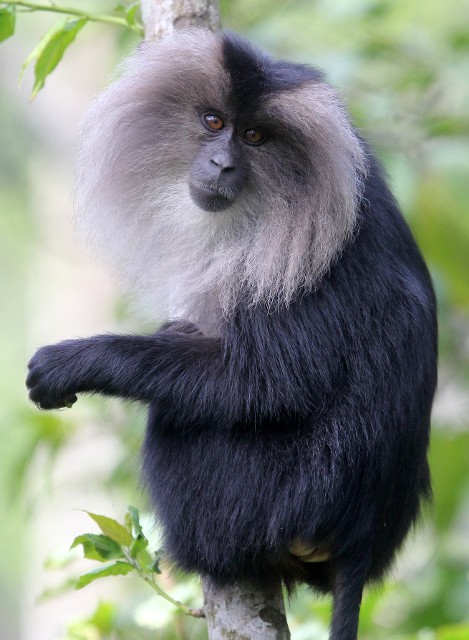
Lion-tailed Macaque
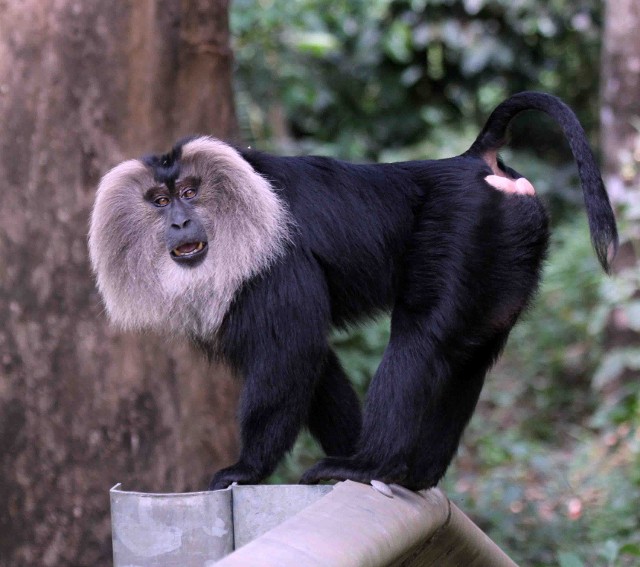
Hangin' out on the main road of Valparai hoping for handouts. WWF actually has a traffic guard on duty to try to limit road kill incidents which are evidently fairly common.
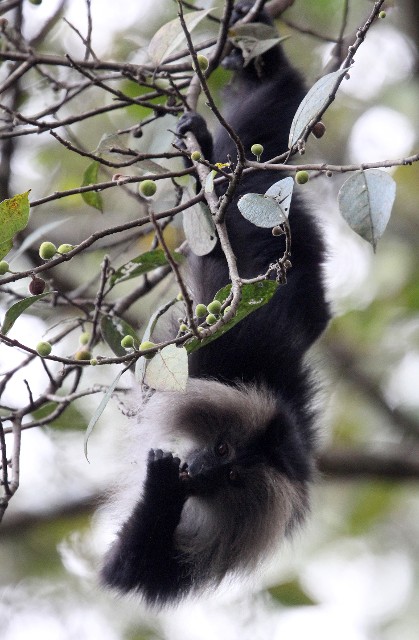
Just hangin' out dude...
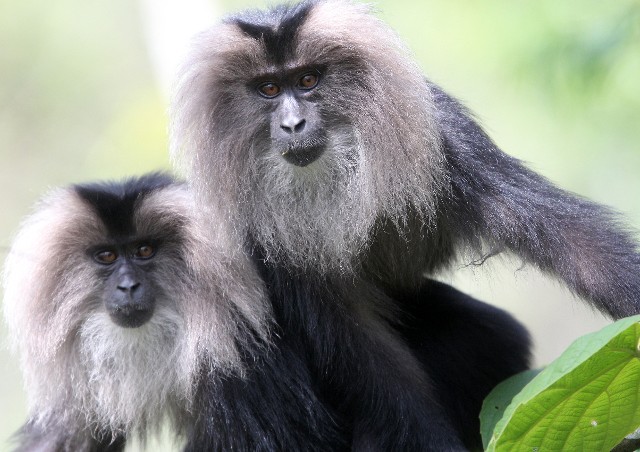
A curious pair of Lion-tailed Macaques at Valparai.
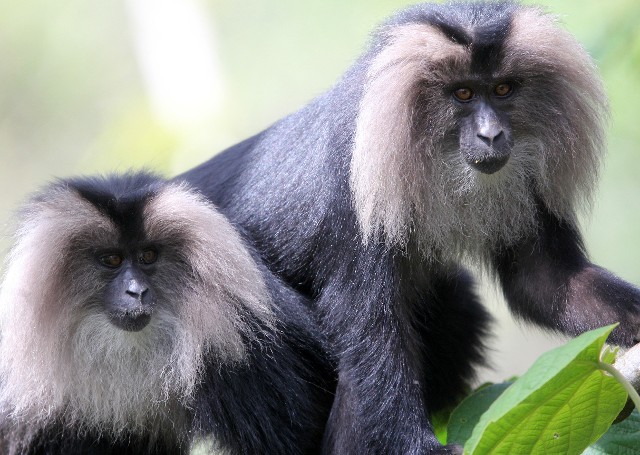
Lion-tailed Macaques
Our evening was spent doing some pretty impressive spotlighting along the main road in Valparai. We spotted both Brown Fish and Brown Hawk Owls hunting in the same location in the heart of the tea estates, but the highpoints were the numerous Indian Giant Flying Squirrels seen often along the route. And the Brown and Indian Small Civets and a Small Indian Field Mouse were good additions to our sightings list. Great day!
Indian Giant Flying Squirrel (Petaurista philippensis)
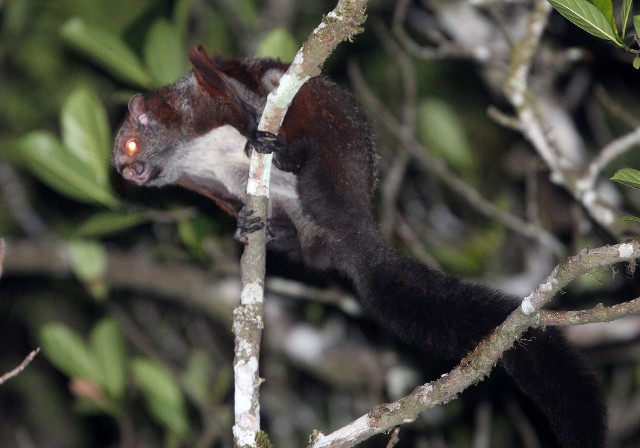
Grey Giant Flying Squirrels were extremely common at Valparai.
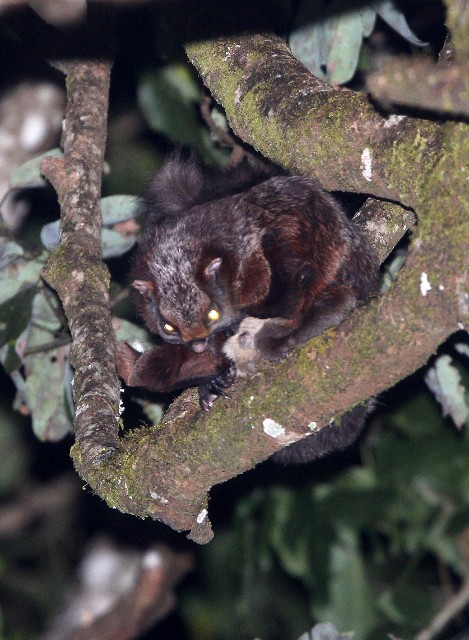
The grizzled-grey fur of the Grey Giant was very different compared to the Indian Giants we saw down in Thattekad. They are still classified as the same species but I wonder...
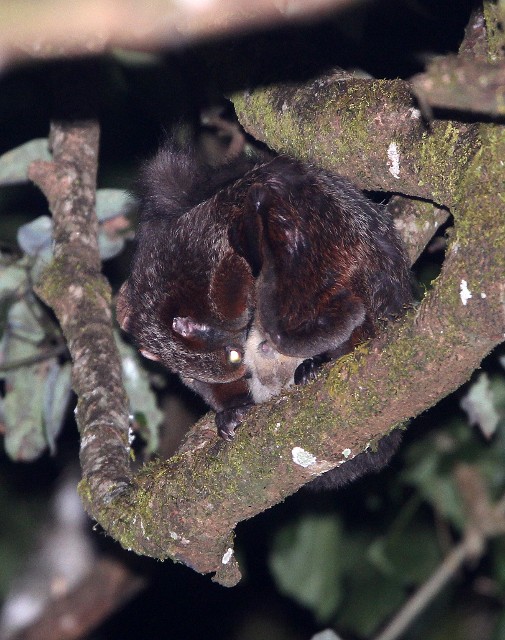
Grey Giant Flying Squirrel
Brown Civet (Paradoxurus jerdoni)
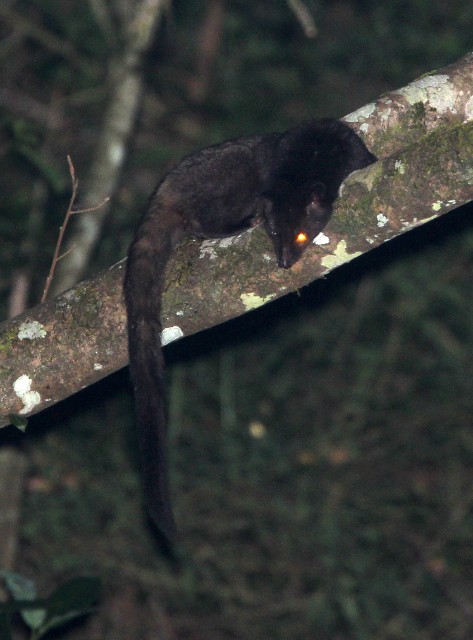
There is little doubt that the mammal highpoint of Valparai was this spectacular Indian Brown Civet that crawled gracefully out on this limb at Valparai at the end of our night safari.
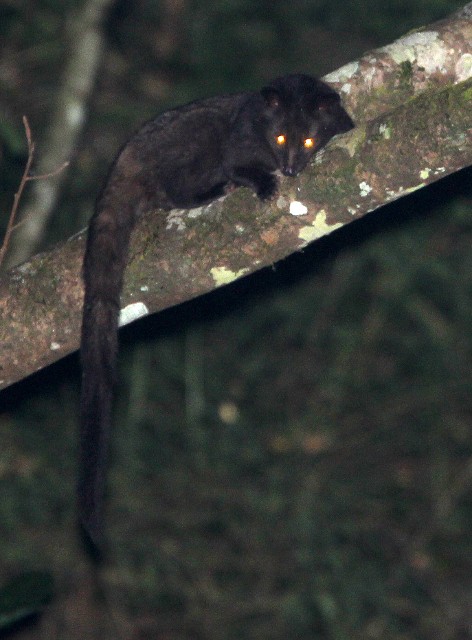
Indian Brown Civet at Valparai!
Malabar Indian Giant Squirrel (Ratufa indica maxima)
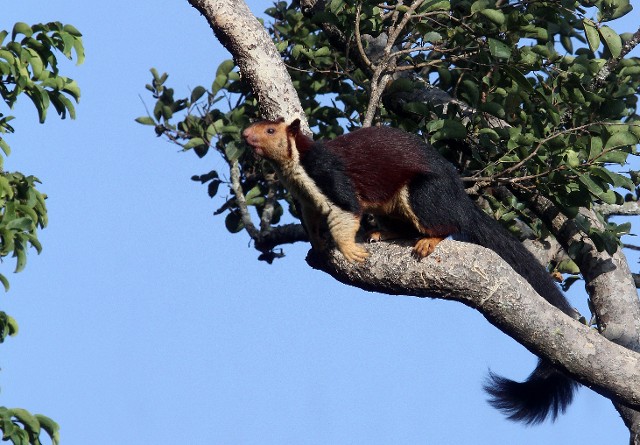
Finally we had an Indian Giant Squirrel give us a good view at Valparai.
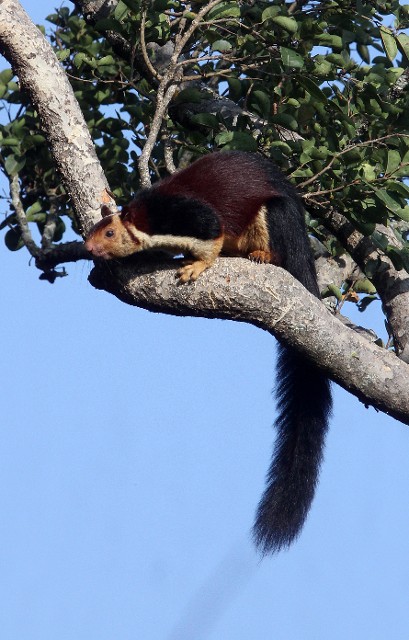
The Indian Giant Squirrel is simply in my opinion the most spectacular of all!
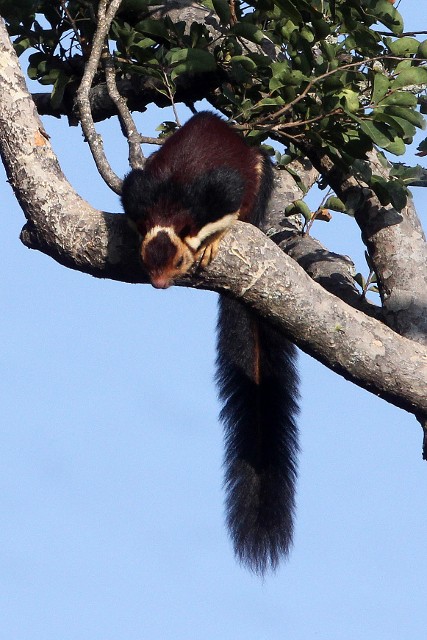
Indian Giant Squirrel
Ruddy Mongoose (Herpestes smithii)
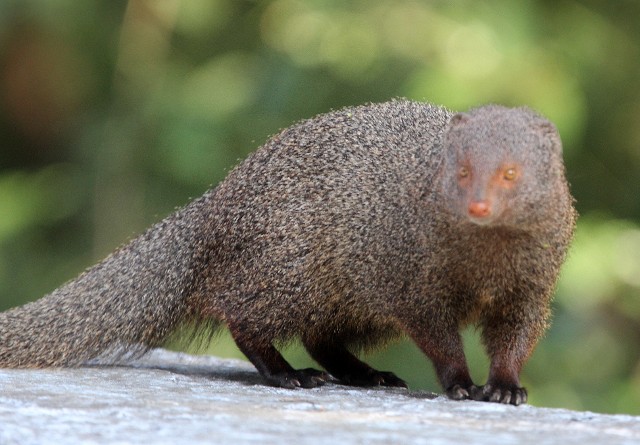
Got a Ruddy Mongoose on the way out of Valparai too!
Sahyadris Forest (House) Rat (Rattus satarae)
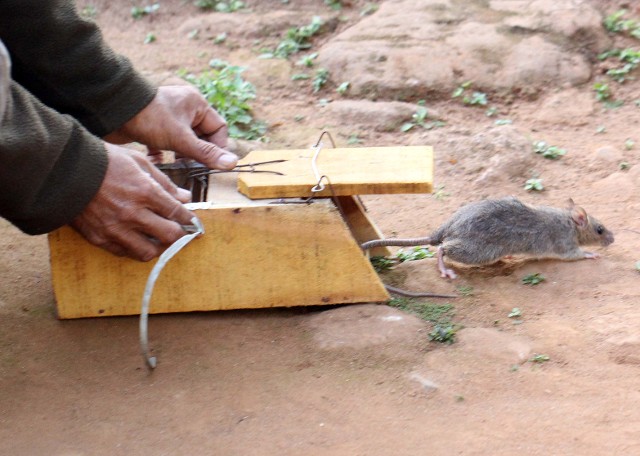
The only mammal trapped on the trip was a Sahyadris Forest (House) Rat (Rattus satarae) in Valparai. Evidently this is a recently described species that is now split from the Black Rat (R. rattus).
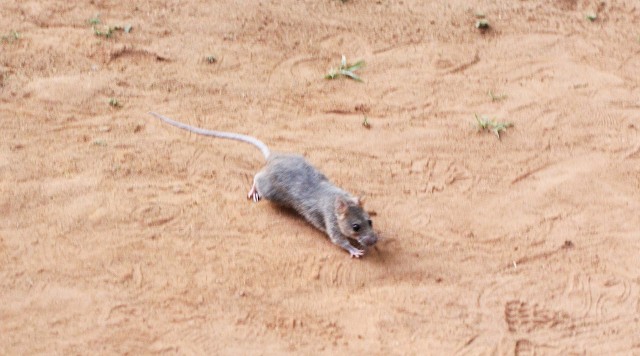
"I am outta here!"

Enjoying one of the great meals we had at Valparai.

We all agreed that the best food of the trip was at Valparai.
Silent Valley National Park, Tamil Nadu
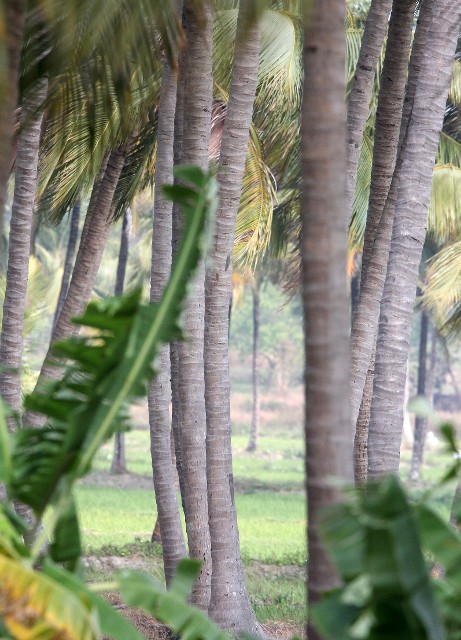
The logistics of the park itself actually made visiting the core area impractical for this trip so we attempted wildlife spotting in the rural setting outside in the palm and teak groves.
Presently we are “resting” at the Treetops Lodge located about 18 kilometers outside of Silent Valley National Park. So far all we can tell you is the name is a misnomer for sure, as this lodge is perhaps one of the noisiest lodges I’ve ever visited. Packed with holiday tourists from Bangalore, it’s more like staying in the middle of a town square than a nice resort next to one of Kerala’s wildernesses. We’re contemplating only staying one night instead of two….we’ll see.
Well, as it ended up, in true India fashion, our second night’s reservation was cancelled and we were forced to leave the “luscious” Treetops Resort after all. Lester was apprehensive breaking the news to us (I guess I had given him the impression I have a temper…go figure…), but was relieved to know we were not upset at all with the news – in fact we were absolutely thrilled with the thought of getting the hell out of this awful place. Treetops is the only lodging option for the park but it is not exactly a nice place. Surrounded by armies or yelping dogs, car stereos belting out Hindi techno beats….Yes, getting out was the best choice for sure.
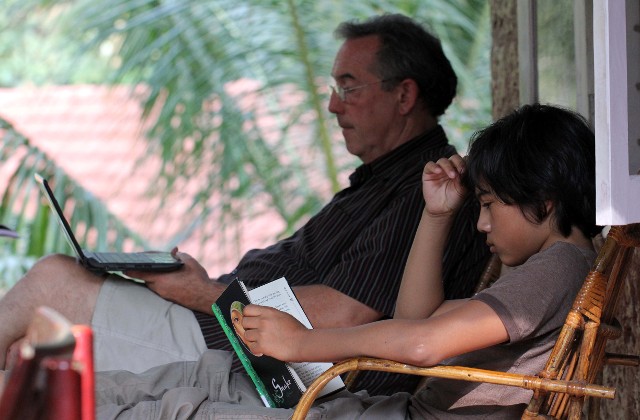
Due to the logistical mishap in Silent Valley, we were able to get in some needed down-time. Much appreciated actually...
We managed one night-trek netting us more Indian Giant Flying Squirrels and a mysterious fruit bat pair, but due to the cancellation and the distance to our next destination, we were denied a diurnal experience in the core area of Silent Valley. The spotlighting was limited to a degraded forest patch near the river coursing the valley as well as the banana, palm, spice plantations in the densely inhabited portion of the valley. There were many villagers and dogs about so I was not surprised to find that the spotlighting was not so productive. The track in to the core area is a very rocky 4X4 goat path that would take hours to traverse with the jeeps needed for entry, so we opted to get out early and put our chips on the table in Tholpetty instead. It was a pity as the region in Silent Valley was very beautiful, with steep batholithic granitic peaks and ridges, but our options were limited. But if one were to ask if adding Silent Valley to a mammal tour was a good idea, my answer would range from “I have no idea” to “give it a pass”. Logistically it seems pretty challenging at the very least, and I am not sure what species it would add to the list at the end anyway. Who knows though, perhaps we missed the sighting of a lifetime! We'll never know for sure.
Indian Giant Flying Squirrel (Petaurista philippensis)
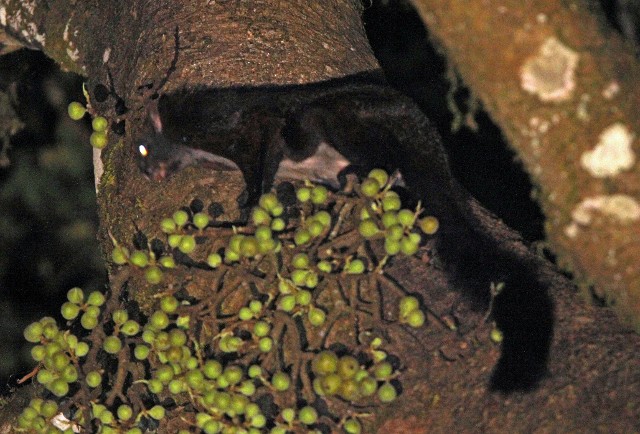
Back to a less grey coat, the Giant Flying Squirrels here were yet another morph...
Hill Shrew (Suncus montanus)
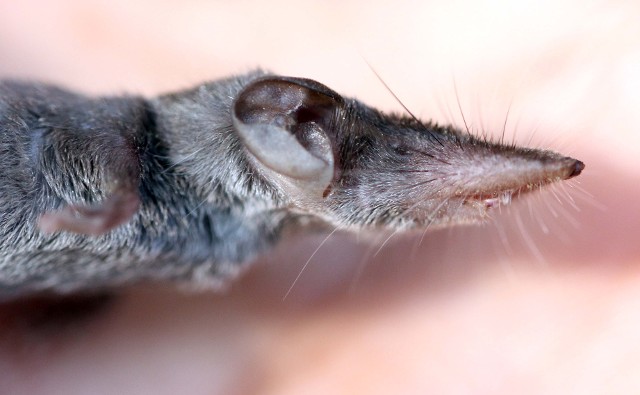
Although it was a goner by the time we found it, this tiny Hill Shrew was the only other mammal we spotted in Silent Valley this day. I guess you could count the Common Palm Squirrels as well...
Tholpetty Wildlife Sanctuary & Nagarhole National Park
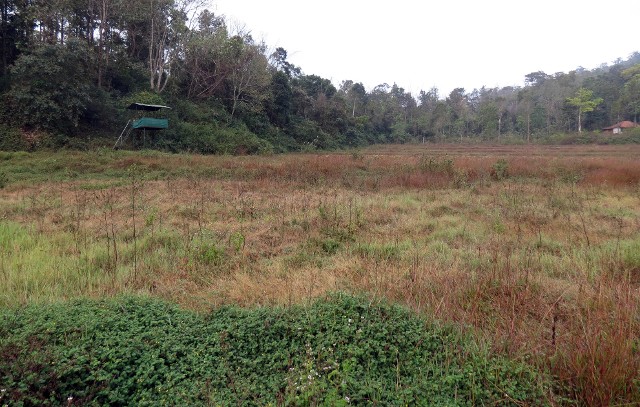
Our view from the Jungle Retreat Lodge situated a few kilometers outside of Tholpetty. Elephants frequent this open space.
Now I know why our time at (Not So) Silent Valley went belly up – we were supposed to spend more time in Wayanard, Tholpetty & Nagarhole. The Wayanard region is in the far north of Kerala state, even dipping in to Karnataka state for a bit. From Silent Valley, it was estimated to be a three to four drive but ended up being about a 7-8 hour drive with lots of holiday traffic, curves and potholes. One of the things we learned during our time in India, what ever estimate people give you for the length of a drive, double it or triple it to give you a better indication of the actual time required.
But it was a fortuitous sequence of events that cut our stay in Silent Valley short and brought us to Tholpetty a day earlier. Tholpetty is a very special area indeed. We spent our nights at the lovely and quiet Jungle Retreat Wayanard situated about 14 kilometers outside of the park itself, but the lodge is situated smack dab on an “A-1” wildlife migratory pathway, and it is possible to spot all sorts of wildlife from the lodge itself. While there we saw Asian Elephant, Chital, Wild Boar, Dusky Squirrels and it is rumored to have regular visits from Fishing Cats, Smooth-coated Otters and Dhole. Who knows, we have one more night, maybe we’ll catch some of these to add to the list.
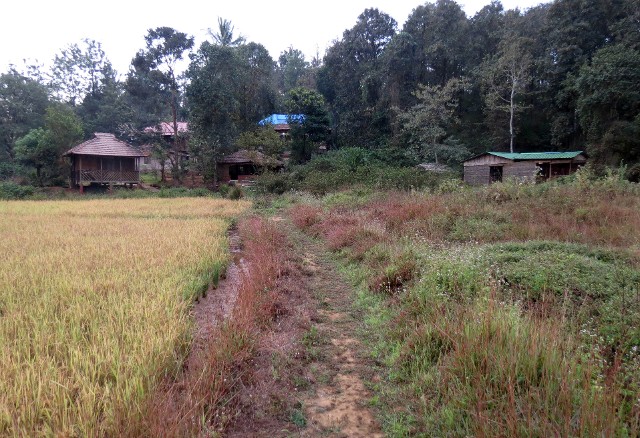
The very nice Jungle Retreat Lodge in Wayanard.
The highpoint of our stay was the night drive offered by Aniil, the owner and operator of Jungle Retreats Lodge. Basically the drives operate on the main road buffer zone, where we came across multiple sittings of Chevrotain, Gaur, Asian Elephant (a brilliant tusker way too close for a photo!), Indian Hare, Spotted Deer, Sambar, and Indian Porcupine. There was at least one set of eyes on the drive that looked suspiciously like a cat but the ID eluded us… Although it was a nice ride for us having added four more species to our list, Aniil mentioned that it was a very mediocre evening for him. He told us that at least twice a week he comes across tiger and leopard on the drives as well. The daytime activities basically involve driving the same track, trekking the forest and taking the forest department jeep rides in to the core area.
Black-footed Langur (Semnopithecus hypoleucus)
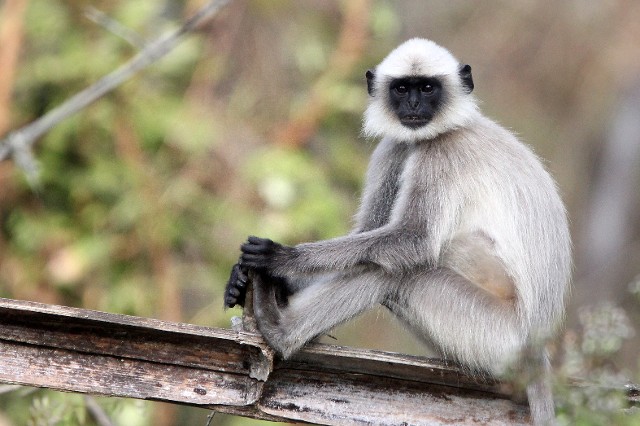
Our main target for Tholpetty was the Black-footed Langurs which is most likely the best place to spot this species.
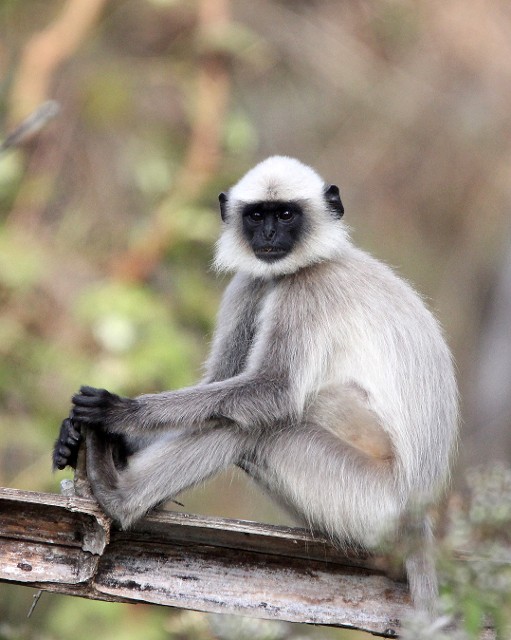
Black-footed Langur at Tholpetty.
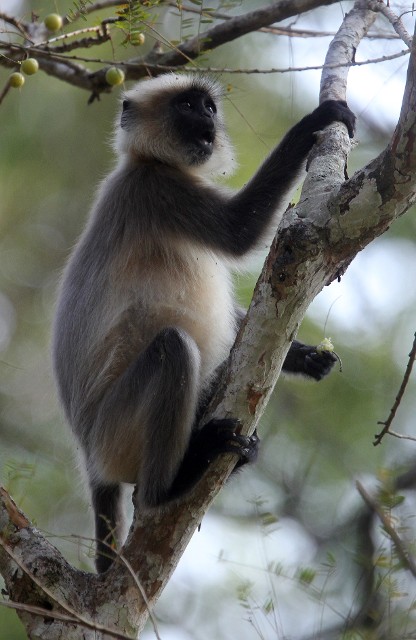
Great looking langur!
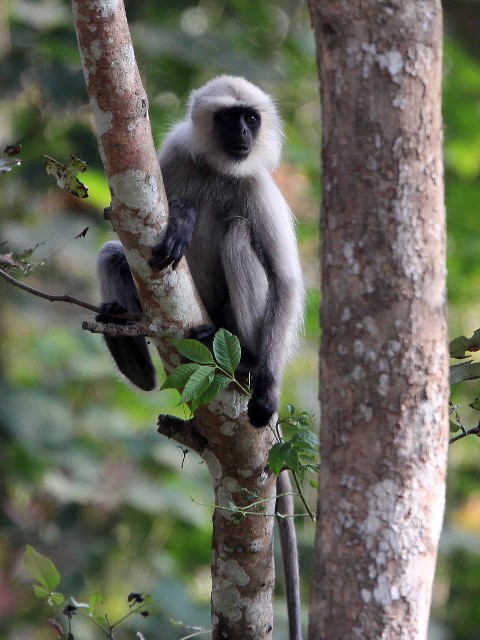
Black-footed Langur
Spotted Deer (Axis axis axis)
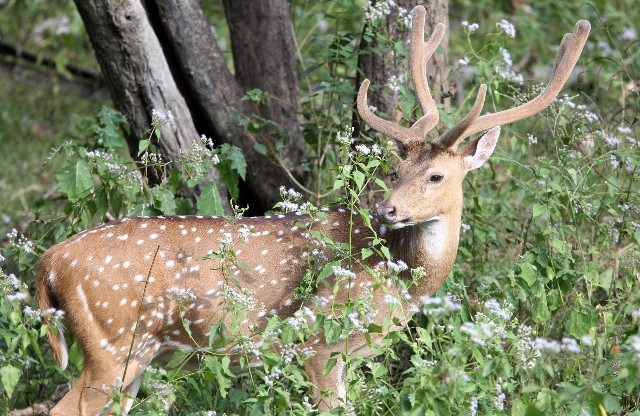
Chital were very common at Tholpetty.
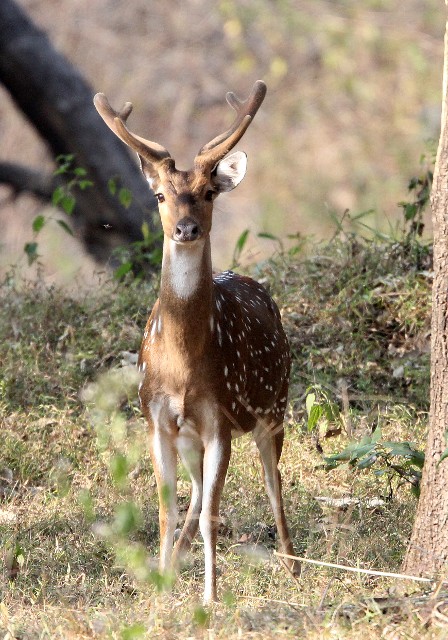
Indian Spotted Deer
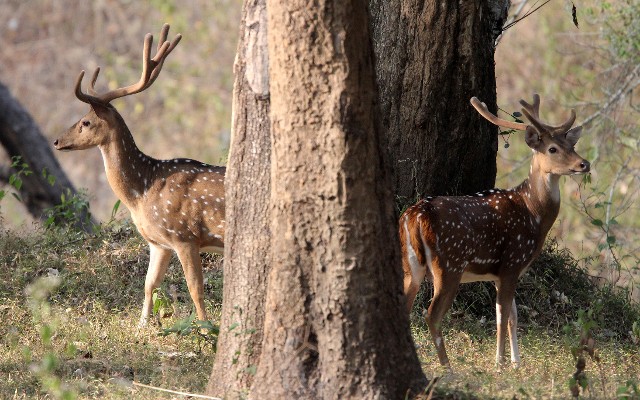
Great light this afternoon at Tholpetty
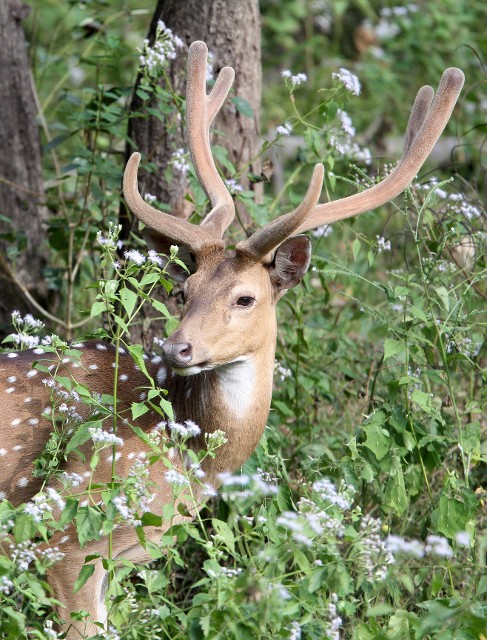
Chital at Tholpetty
Sambar (Cervis unicolor unicolor)
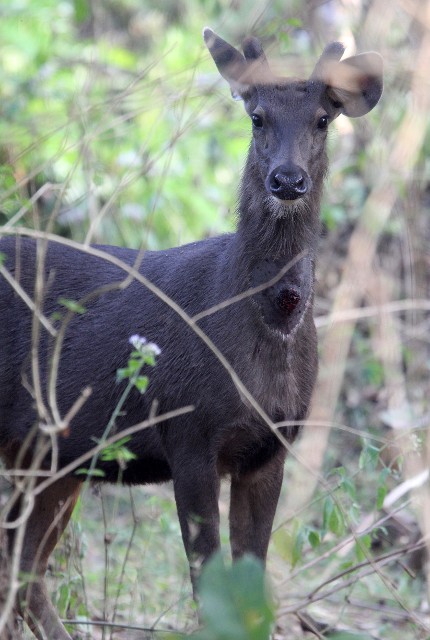
Our only Sambar for the trip.
Indian Elephant (Elephas maximus indicus)
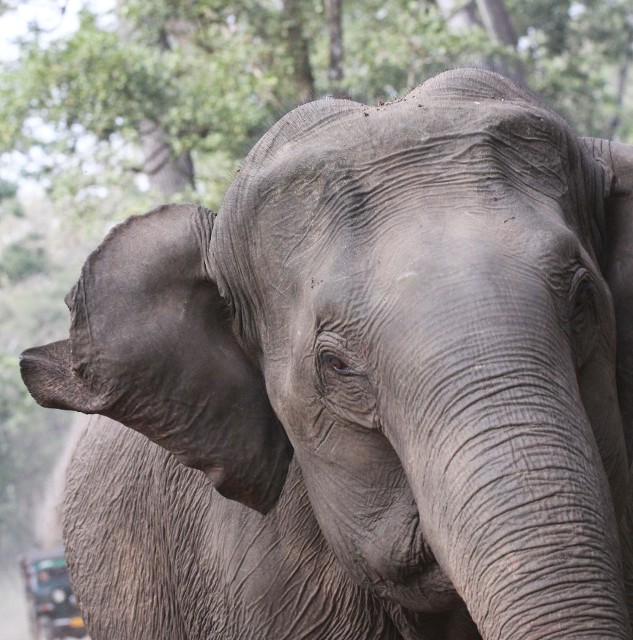
Our first sighting of an Indian Elephant was kind of a surprise. This bull came charging out of nowhere and gave us a bit of a scare...
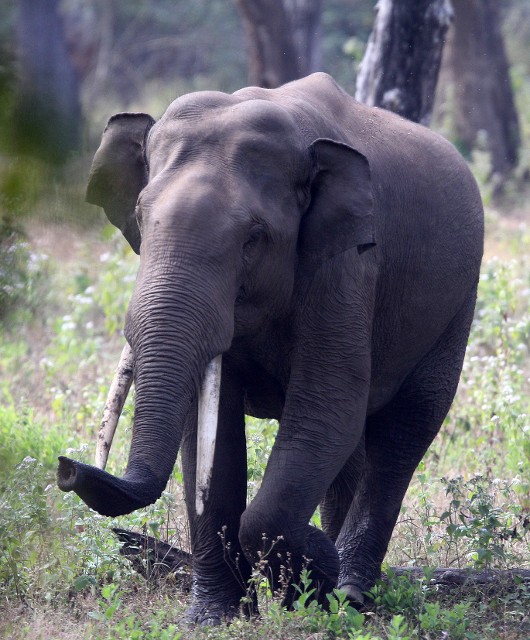
A calmer bull with some nice tusks was spotted a bit later.
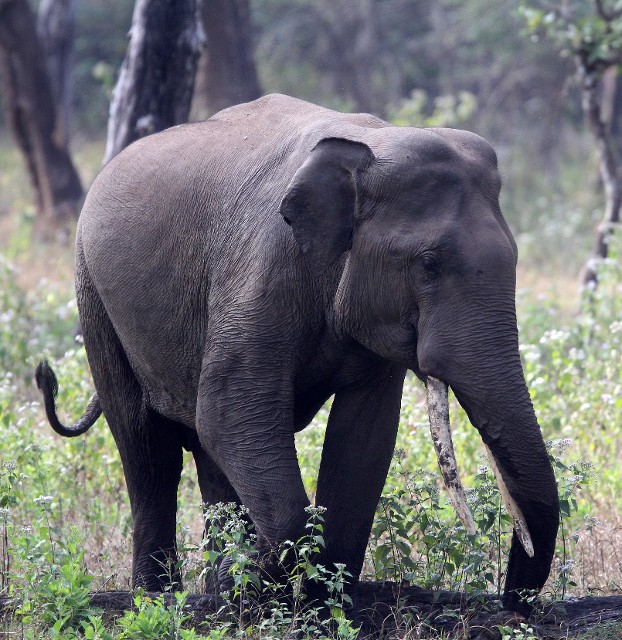
Spectacular tusker Indian Elephant!
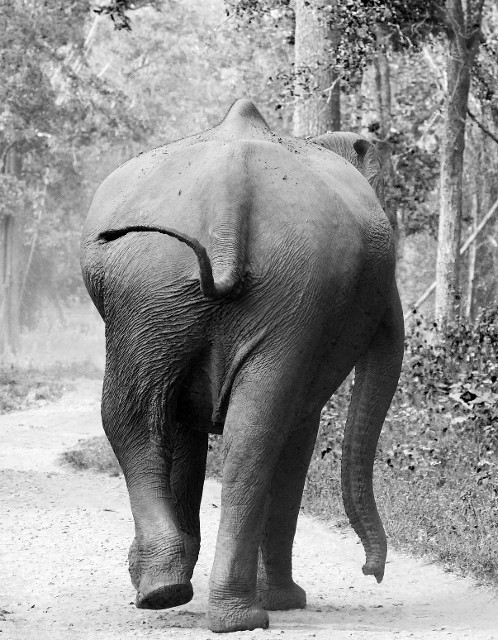
Nice shot Som!
Gaur (Bos gaurus gaurus)
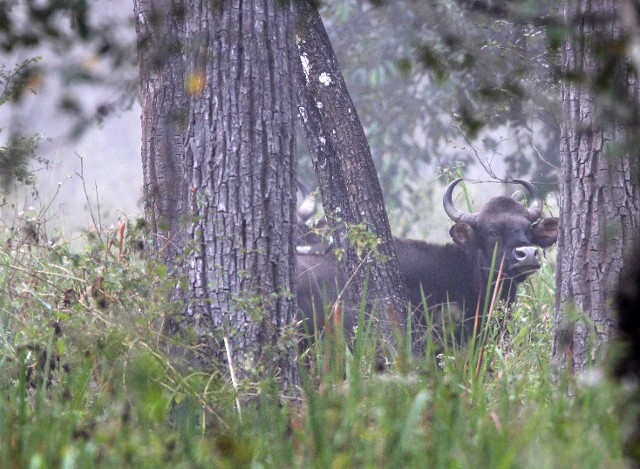
Just for the sake of completeness I suppose more than anything else, we took an early morning drive over to Nagarhole National Park, the much larger protected area near Tholpetty. We spotted some of the normal players, including this nice Gaur in the mist.
Indian Flying Fox (Pteropus giganteus)
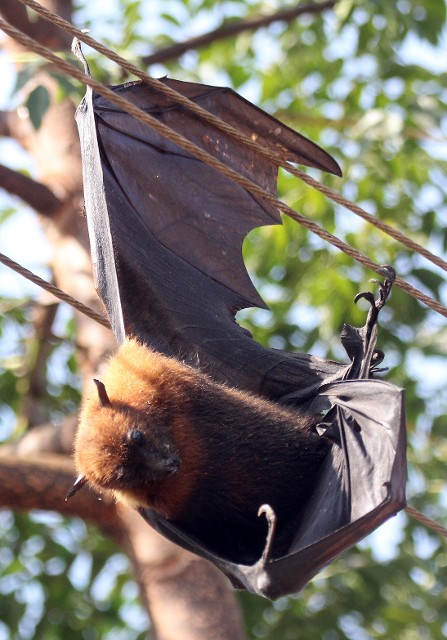
Indian Flying Foxes were seen everywhere - by the hundreds. Unfortunately they were ALL hanging DEAD from powerlines. There is a serious mortality issue with the bats and powerlines.
Chevrotain (Moschiola meminna)
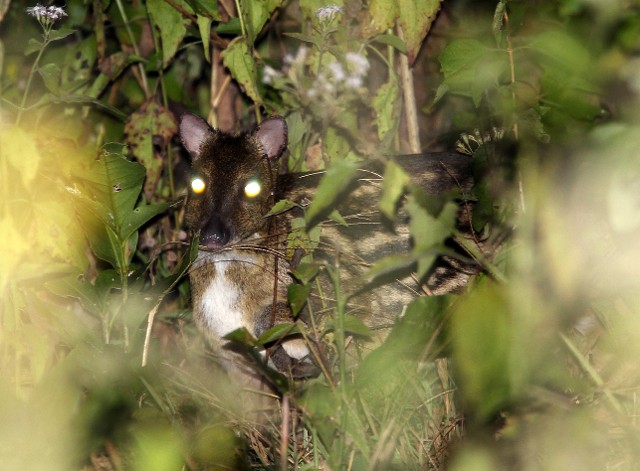
Tholpetty offers some world class spotlighting opportunities. Along with Rusty Spotted Indian Porcupines, Civets and other critters, one can see good numbers of Indian Chevrotain like this one.
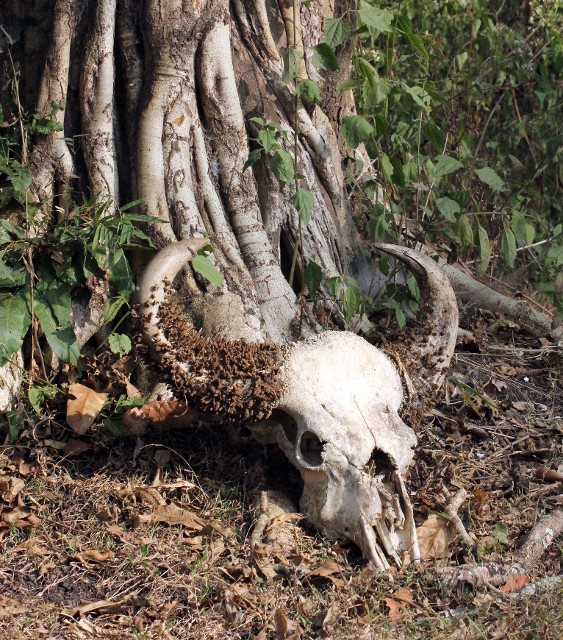
A Gaur skull with Ceratophaga vastella, the horn moth. Initially I thought it was a fungus but now I know!
Our final day in Tholpetty was outstanding. We opted for a relaxing morning followed by a very interesting visit to a local ancient Hindu temple in Thirunelly, where we were not-so-politely told to leave immediately... Strangely this same thing happened to us elsewhere in India as well. Anyway it was not a very impressive temple anyway....So we returned for a late afternoon safari at Tholpetty Reserve. After waiting hours in line, fighting the cutters who kept trying to take your place in line (the only allow 20 vehicles in the park for the afternoon drives), we went on a nice game drive which netted us some nice images of elephants, more chittal and some other species. It was a nice drive and definitely worth it, but the stress for Lester to stand in line all that time and the impossibly tight and dangerous park jeeps made it a, let's say, interesting experience.
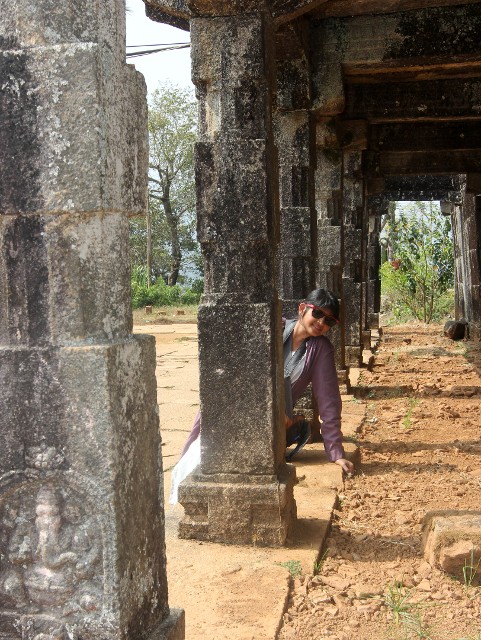
Som at the lovely and ancient Thirunelly Hindu Temple (before we got kicked out...).
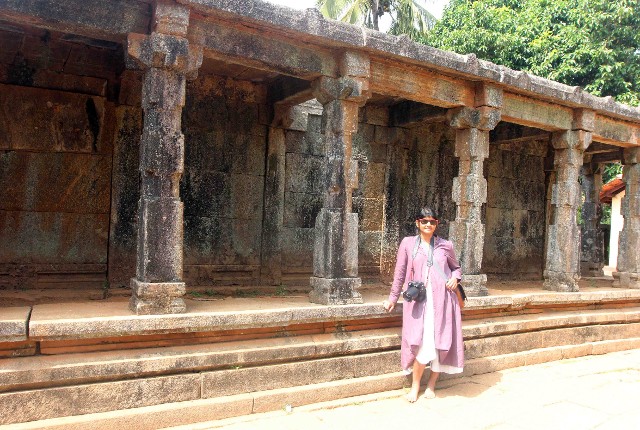
Thirunelly Temple
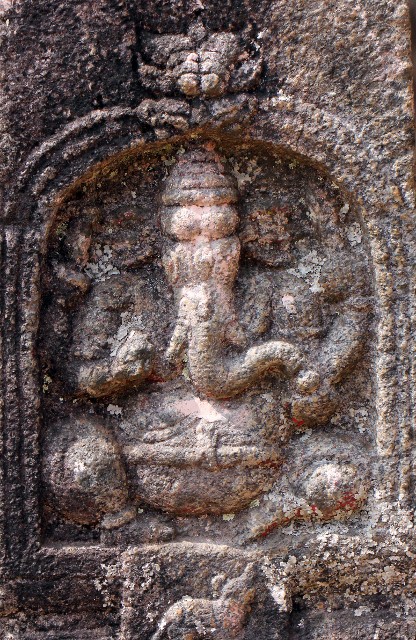
Thirunelly
Our last night drive was outstanding. On top of seeing the normal nocturnals, we finally got a good look at a spectacular Rusty Spotted Cat, who gave us very nice and prolonged views. Sadly, due to my ineptness, my camera was not set up correctly and I missed my only photo-op of the critter! Dang! Oh well, there are some species that are merely meant to be a memory.
Speaking of memories, our trip to India's Western Ghats, will be filled with great memories. Although there were many trials and tribulations along the way, we were immensely successful in spotting the region's amazing fauna. However, without Lester at the helm, there is no chance we could have walked away with such an impressive mammal list. 41 species is a serious count for such a short trip. Lester was amazing! While very eloquently trouble-shooting his way through the maze that is India, he was somehow able to show us virtually every single hopeful species we set out to see. Outstanding work!
Mammal List India 2013
- Grey Slender Loris (Loris lyddekerianus lyddekerianus)* 3-5
- Northern Bonnet Macaque (Macaca radiata radiata)* 100+
- Southern Bonnet Macaque (Macaca radiata diluta)* 7 (Tattekad)
- Lion-tailed Macaque (Macaca silenus)* 30
- Nilgiri Langur (Trachypithecus johnii)* 50++
- Southern Plains Langur (Semnopithecus dussumieeri) 25+
- Tufted Langurs (Semnopithecus priam priam) 10+
- Black-footed Langur (Semnopithecus hypoleucus)* 3
- Sambar (Cervis unicolor unicolor) 15
- Spotted Deer (Axis axis) 50
- Indian Muntjac (Muntiacus muntjak) 2
- Chevrotain (Moschiola meminna)* 6
- Nilgiri Tahr (Hemitragus hylocrius)* 18-20
- Gaur (Bos gaurus gaurus) 40++
- Southern Indian Wild Boar (Sus scrofa affinis) 30++
- Brown Mongoose (Herpestes brachyurus)* 2
- Ruddy Mongoose (Herpestes smithii) 1
- Indian Grey Mongoose (Herpestes edwardsii)* 1
- Stripe-necked Mongoose (Herpestes vitticollis)* 1
- Common Palm Civet (Paradoxurus hermaphroditus) 1
- Brown Civet (Paradoxurus jerdoni)* 1
- Small Indian Civet (Viverricula indica) 1
- Rusty Spotted Cat (Felis rubiginosa)* 1
- Indian Hare (Lepus nigricollis) 2
- Malabar Indian Giant Squirrel (Ratufa indica maxima)* 25++
- Jungle Squirrel (Funambulus tristiatus)* 9
- Three-striped Squirrel (Funambulus plamarum) 3
- Dusky Striped Squirrel (Funambulus sublineatus)* 3
- Indian Giant Flying Squirrel (Petaurista philippensis) 20+
- Indian Porcupine (Hystrix indica)* 1
- Small Indian Field Mouse (Mus booduga)* 1
- House Mouse (Mus musculus) 1
- Sahyadris Forest (House) Rat (Rattus satarae) 1
- Hill Shrew (Suncus montanus)* 1
- Day’s Shrew (Suncus dayi) 2
- Woolly Bat (Rhinolophus luctus)* 2
- Indian Flying Fox (Pteropus giganteus) 1
- Salim Ali’s Fruit Bat (Latidens salimalii)* 2
- Peshwa’s Bat (Myotis peshwa?)* 10+
- Fulvous Roundleaf Bat (Hipposideros fulvus?)* 5-6
- Indian Pipestrelle (Pipistrellus tenuis)
- Asian Elephant (Elephas maximus) 1
Note: With the exception being the Wooly Bat above, all bats were identified very tentatively with literature, local suggestions, poor sightings with little to no diagnostics and best (probably lame) guesses! But we saw all ‘dem different bats!
Sign, Near Misses & Roadkill
- Leopard – fresh sign very close to our lodging at Top Slip on the adjacent dirt track. Fresh scat on the main track of Pampadum Shola as well.
- Leopard Cat – same location as the leopard above. In fact the tracks were overlaying the leopard tracks. Perhaps could have been a very young leopard cub.
- Nilgiri Marten – Multiple scat deposits on the main track of Pampadum Shola.
- Small-clawed Otter – Very fresh tracks on the main track of Pampadum Shola.
- Sloth Bear – Fresh scat on the main track of Pampadum Shola.
Birds of the Western Ghats
(Endemics)
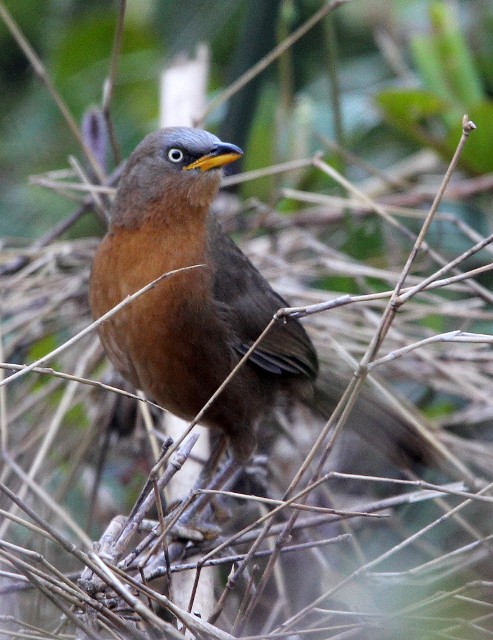
Indian Rufous Babbler spotted in good numbers in Valparai.
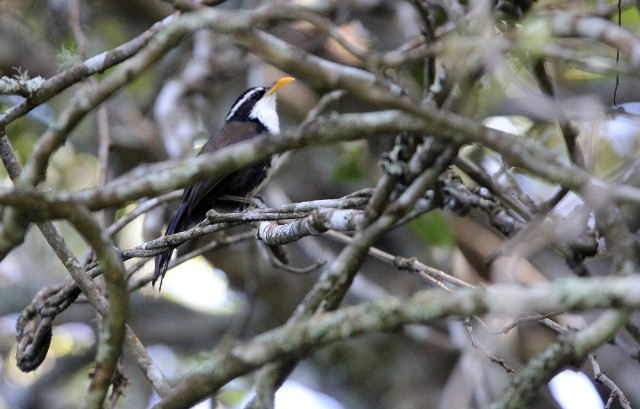
Indian Scimitar Babbler in Pampadum Shola.
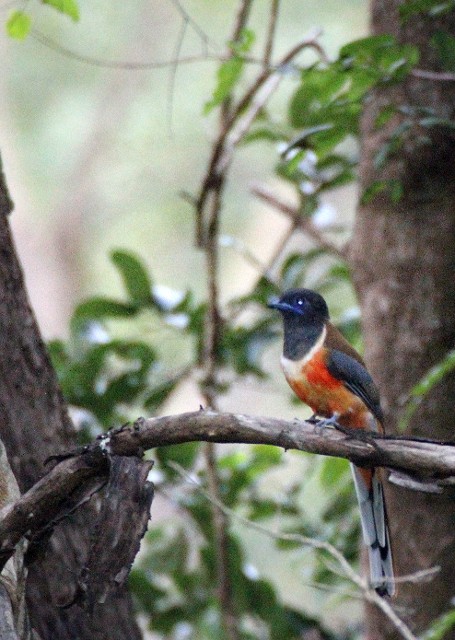
Malabar Trogon in Topslip.
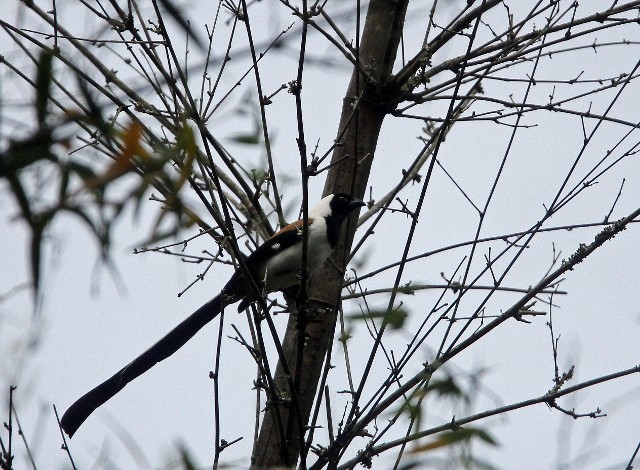
White-bellied Treepie in Topslip - a fairly common endemic.
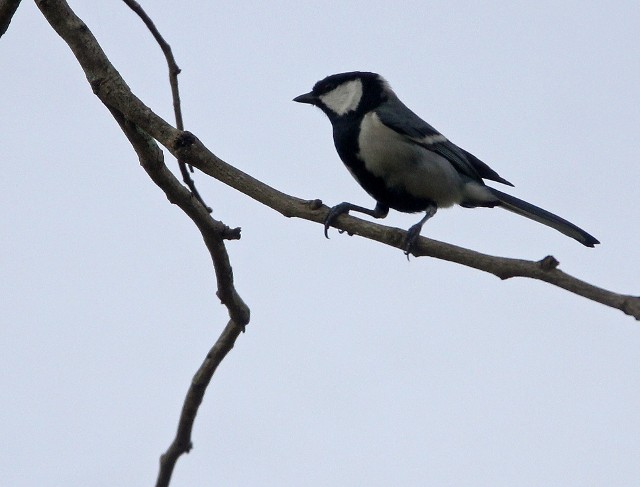
Cinereous Tit seen in Topslip.
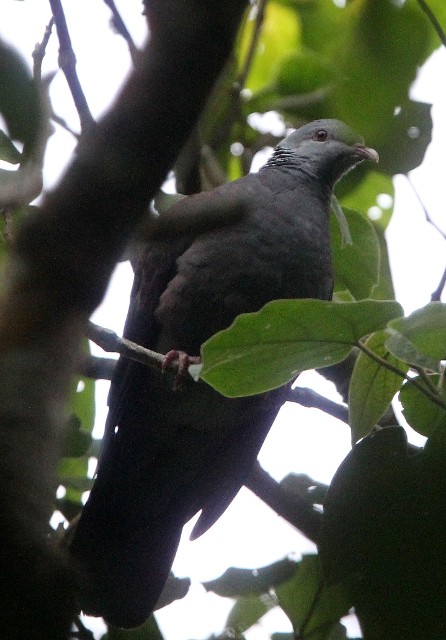
The endemic Nilgiri Wood Pigeon seen in Pampadum Shola.
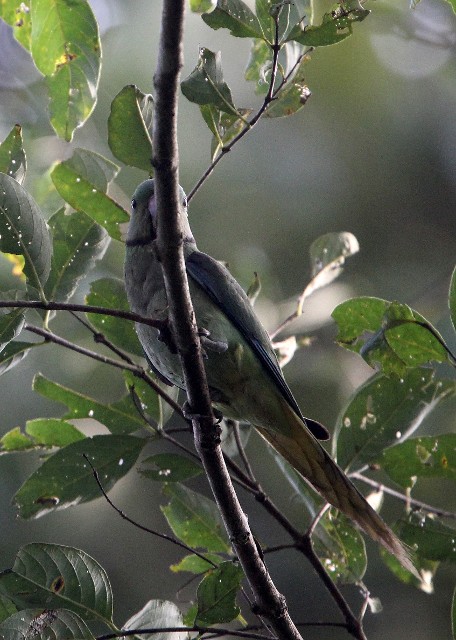
Another endemic - the Malabar Parakeet spotted in Topslip.
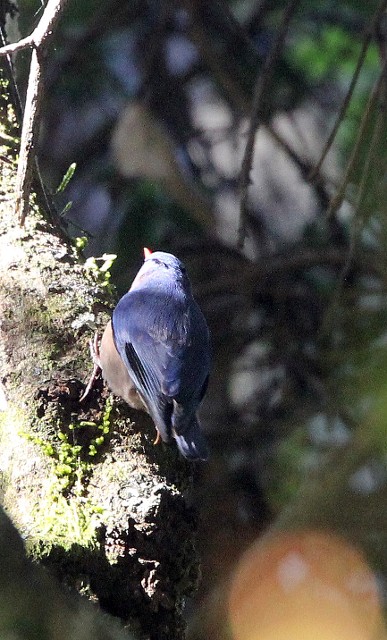
A Velvet-fronted Nuthatch spotted in Pampadum Shola!
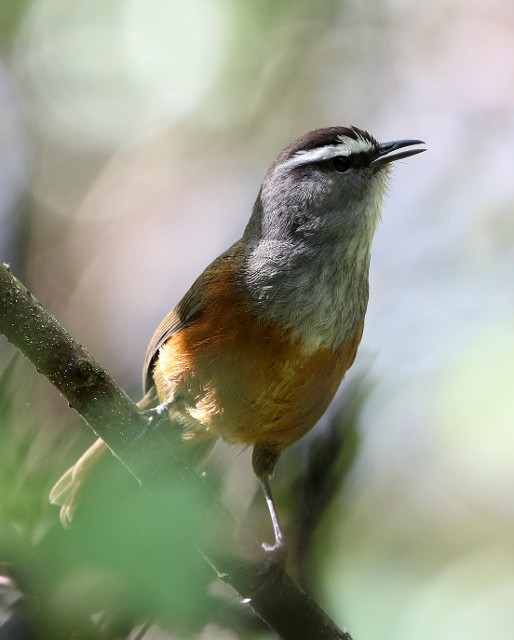
The endemic Kerala Laughingthrush seen in very good numbers at Pampadum Shola National Park.
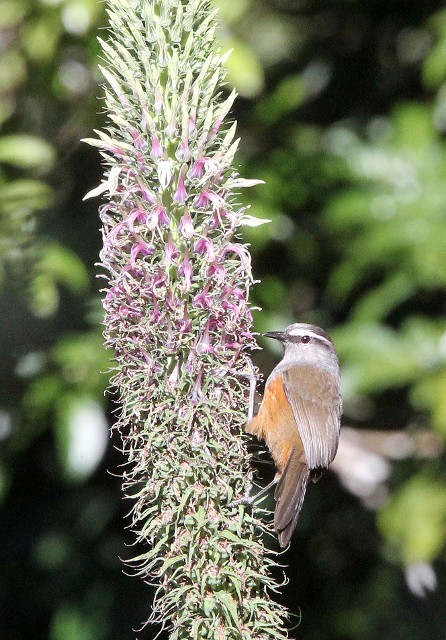
Kerala Laughingthrush spotted on an endemic Lobelia in Pampadum Shola.
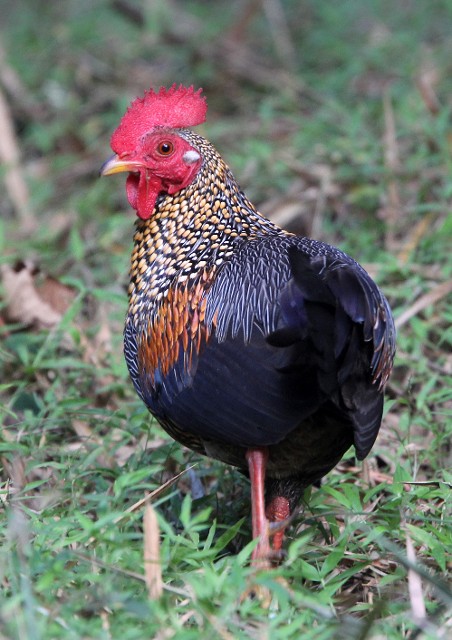
The endemic species of Grey Junglefowl in Topslip.
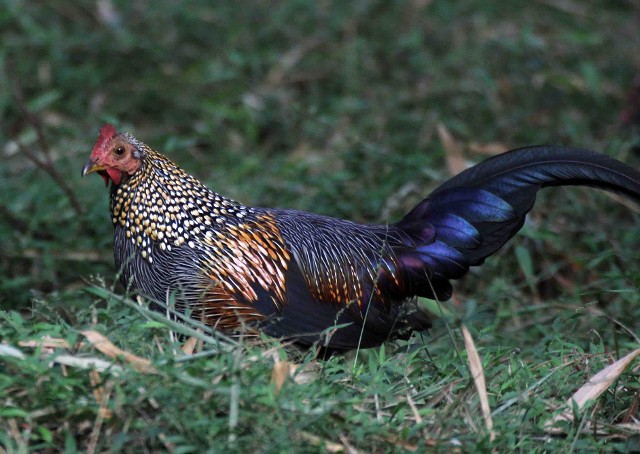
Grey Junglefowl.
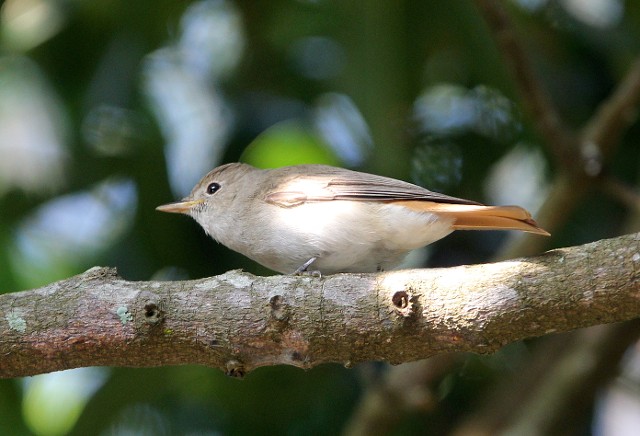
Rusty-tailed Flycatcher spotted in Valparai.
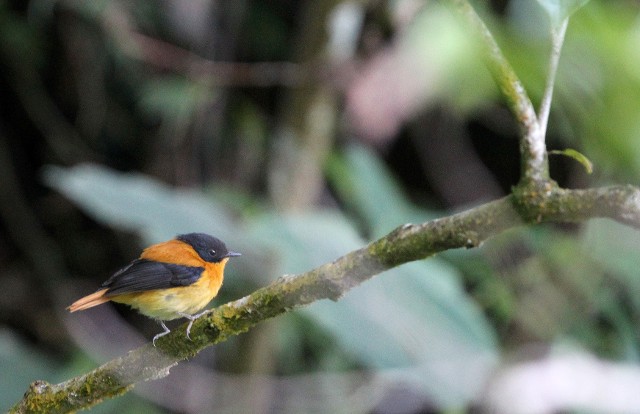
Black-and-Orange Flycatcher, another rare endemic spotted in Pampadum Shola.
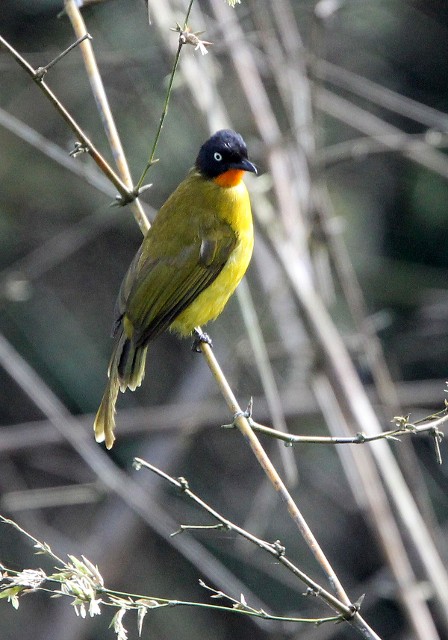
The endemic Flame-throated Bulbul seen in good numbers at Topslip.
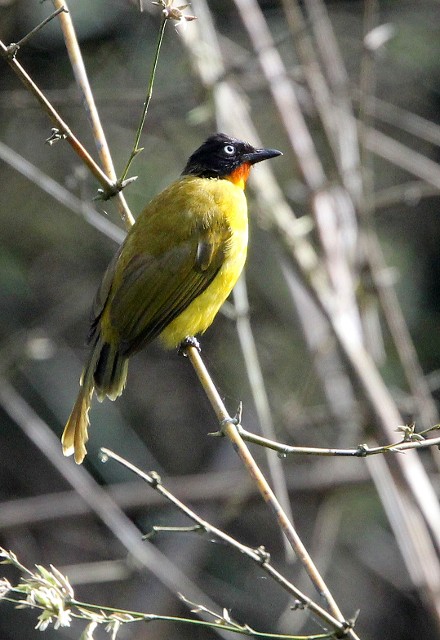
Flame-throated Bulbul
Other Birds
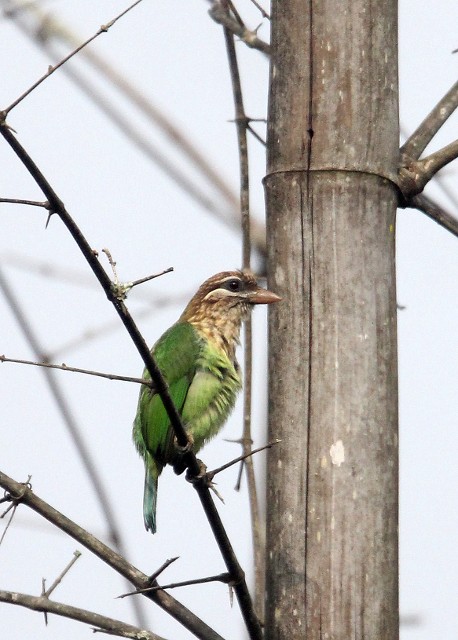
White-cheeked Barbet in Tholpetty.
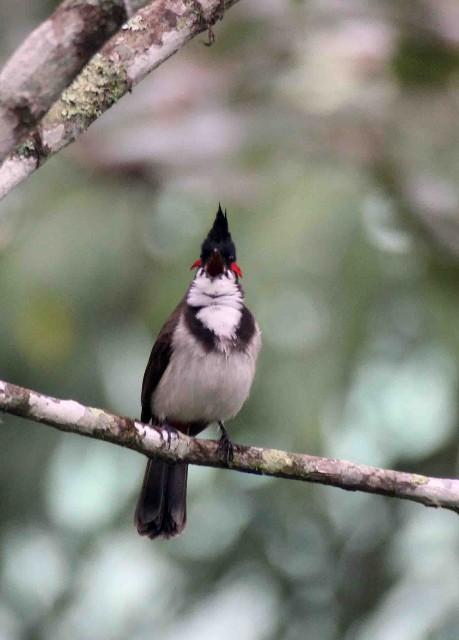
Red-whiskered Bulbul in Tholpetty.
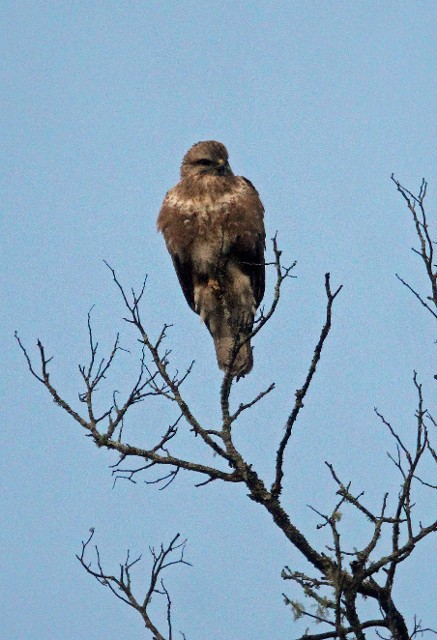
Himalayan Buzzard in Pampadum Shola.
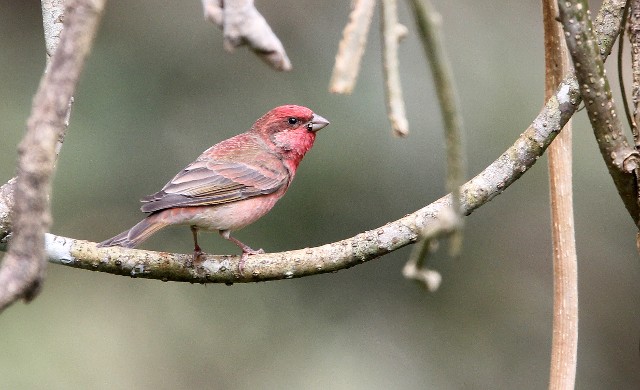
Common Rosefinch in Tholpetty.
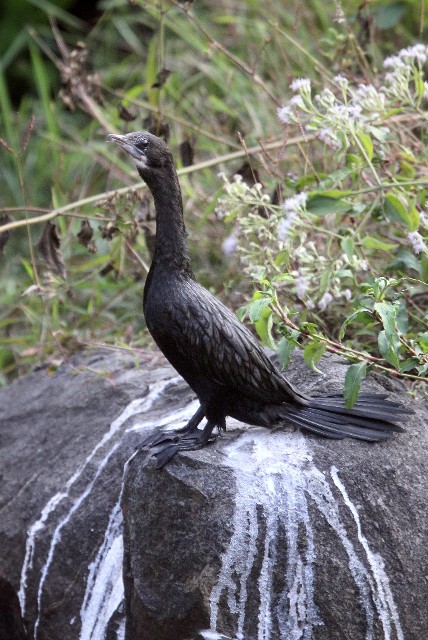
Little Cormorant seen in Tholpetty.
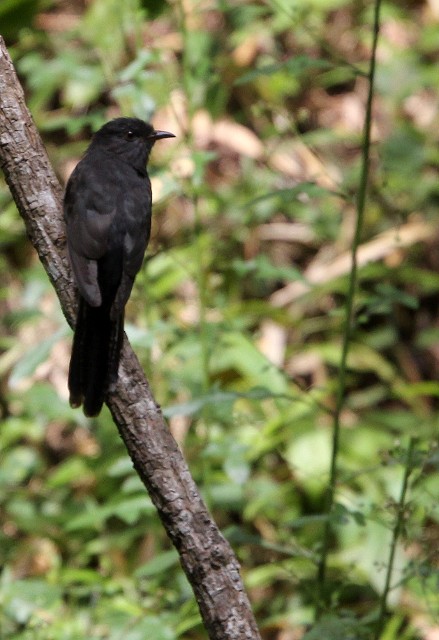
Drongo Cuckoo seen in Topslip.
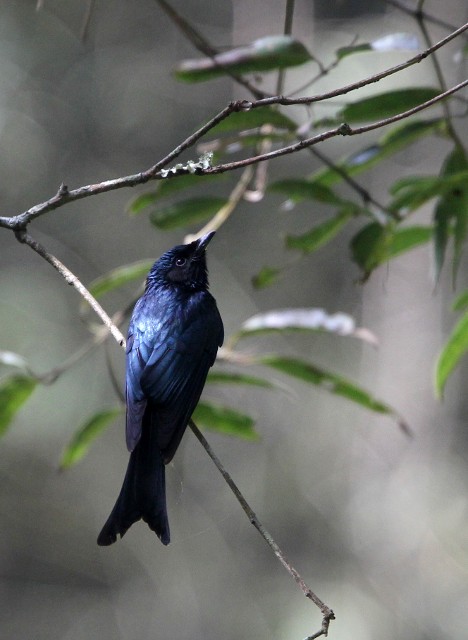
Bronzed Drongo spotted in Topslip.
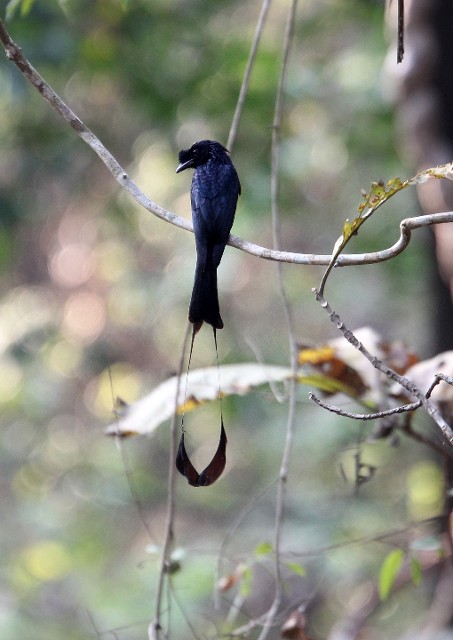
Greater Racket-tailed Drongo seen in good numbers in Thattekad.
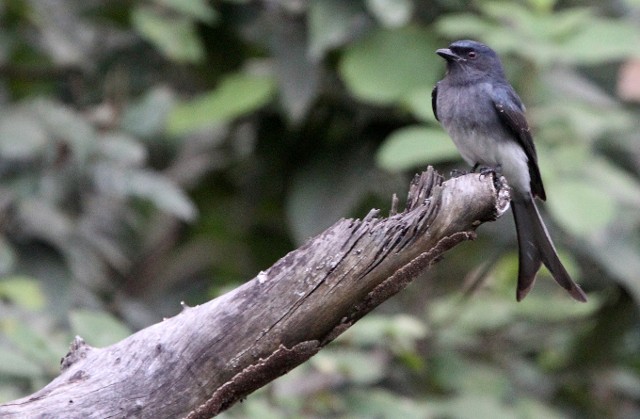
White-bellied Drongo seen in Topslip.
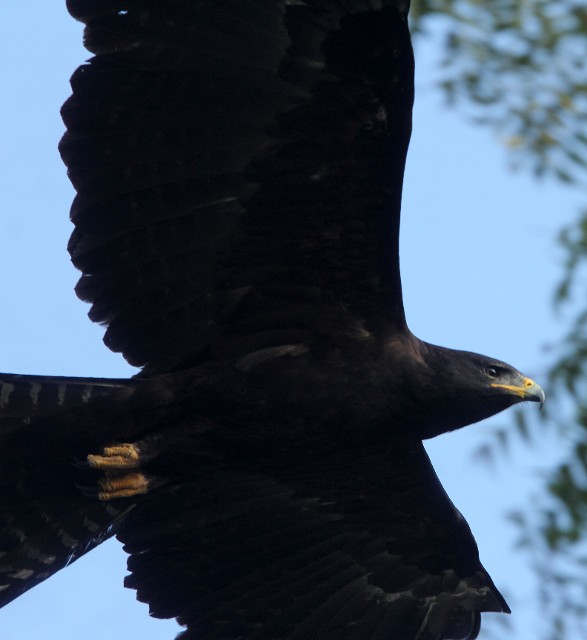
This Black Eagle came out of nowhere in Valparai and swooped down on us within one meter from us!
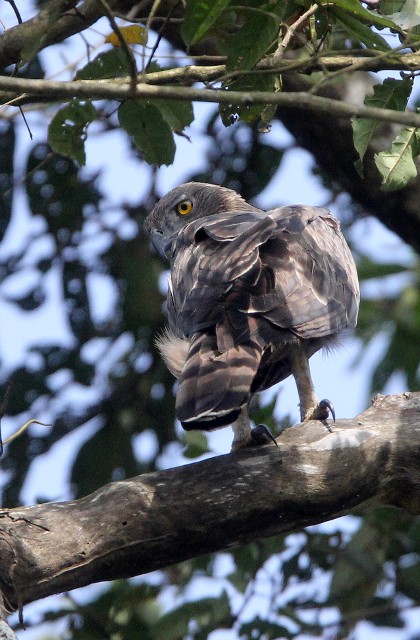
Changeable Hawk Eagle in Topslip.
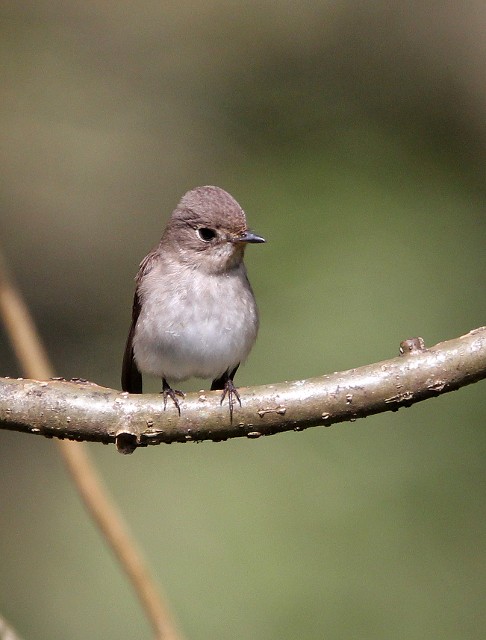
Asian Brown Flycatcher in Tholpetty.
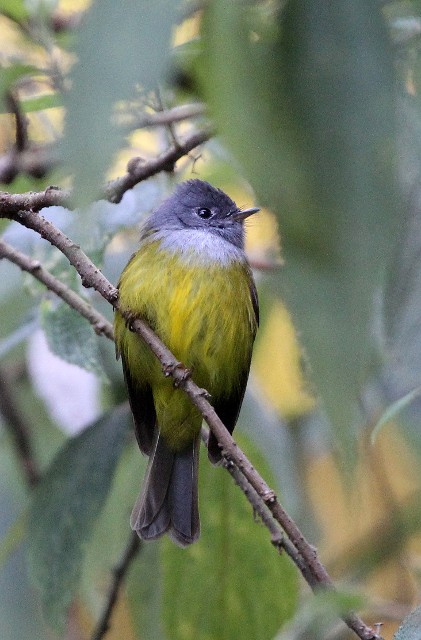
Grey-headed Canary Flycatcher at Pampadum Shola.
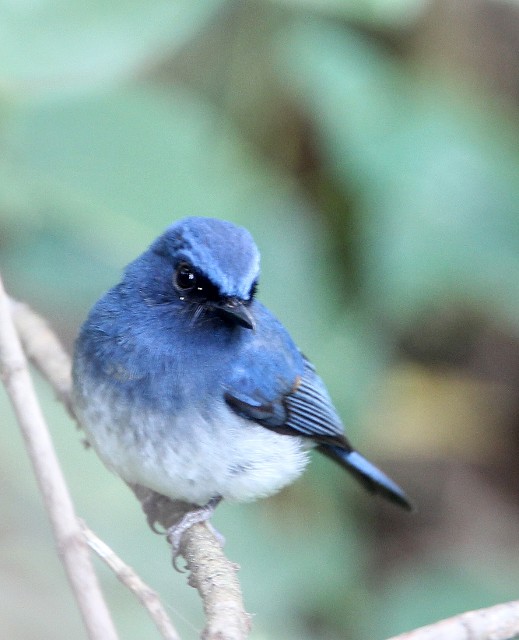
White-bellied Blue Flycatcher at Tholpetty.
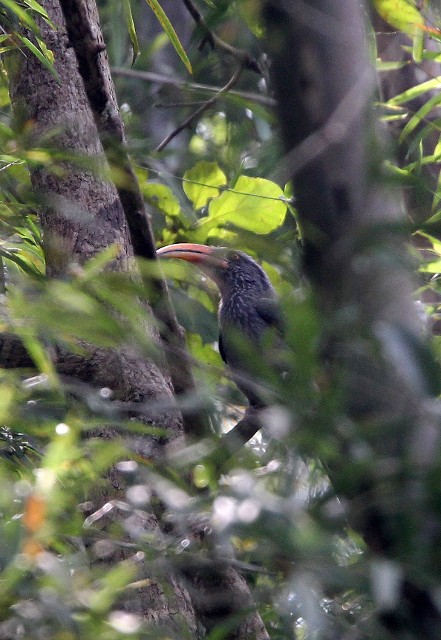
We spotted a small group of the endemic Malabar Hornbill at Topslip during our long trek.
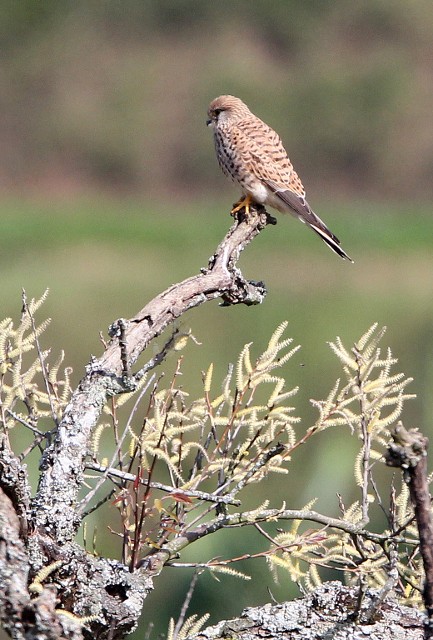
Common Kestrel at Pampadum Shola.
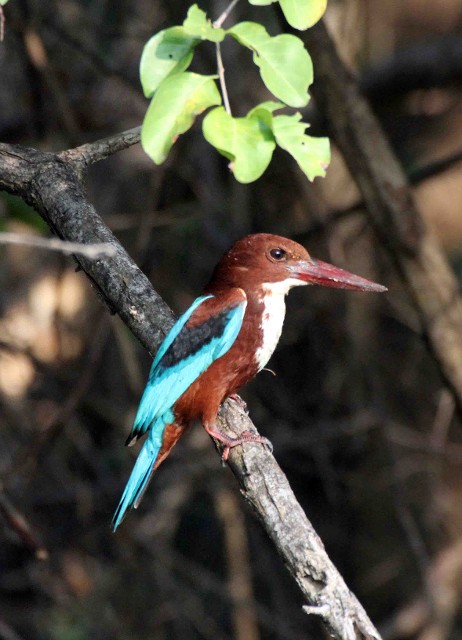
White-throated Kingfisher at Topslip.
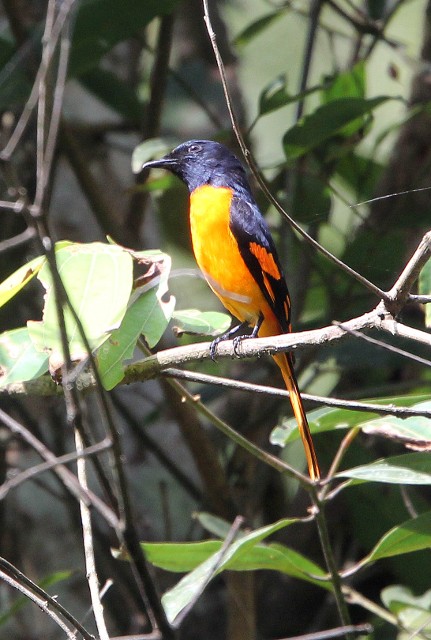
Orange Minivet at Topslip.
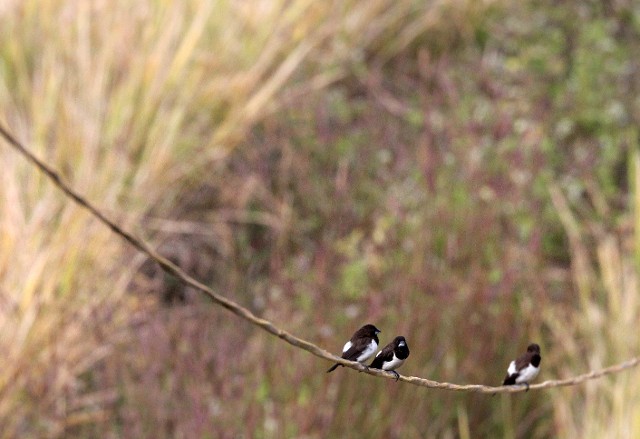
Black-headed Munia at Tholpetty.
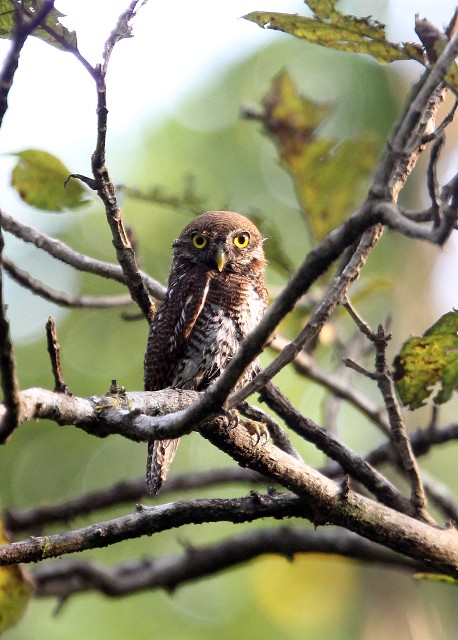
A spectacular little Jungle Owlet at Thattekad.
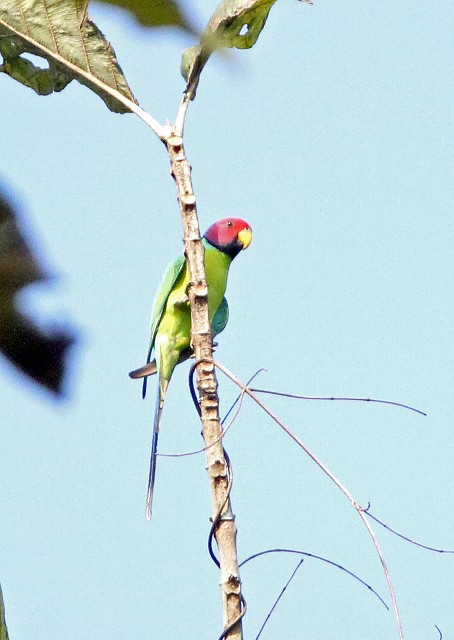
Plum-headed Parakeet at Thattekad.
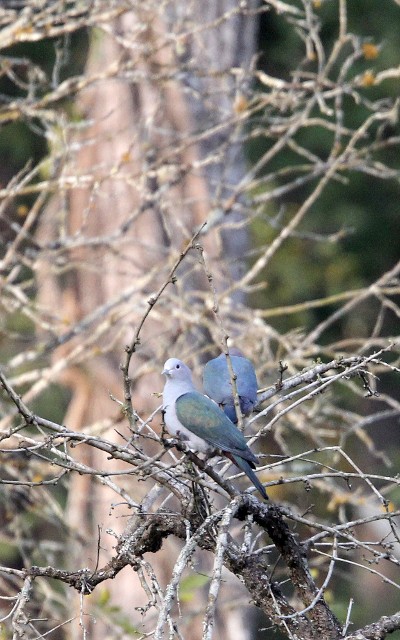
Green Imperial Pigeon at Tholpetty.
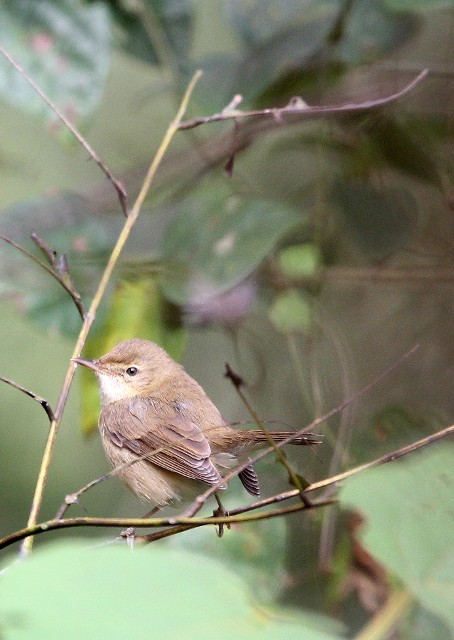
Blythe's Reed Warbler at Topslip.
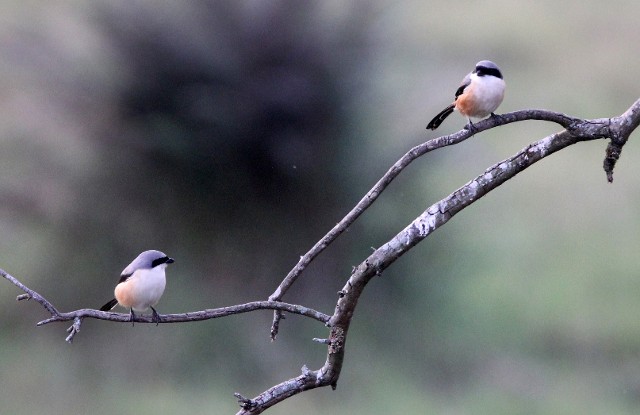
Long-tailed Shrike at Valparai.
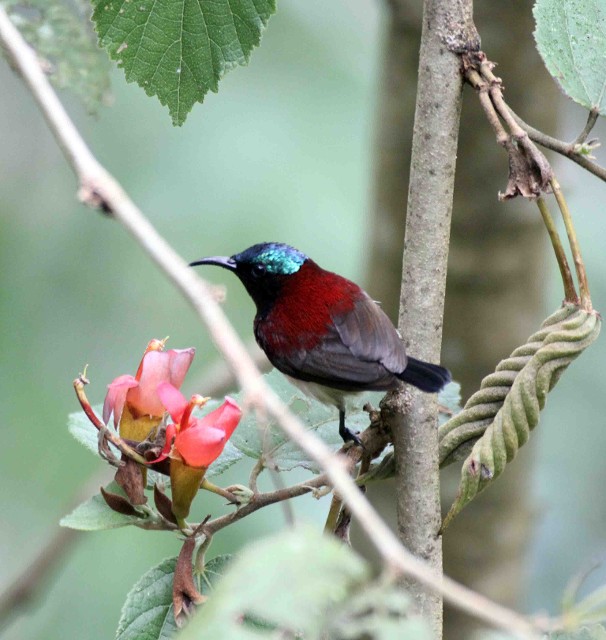
Small Sunbird at Tholpetty.
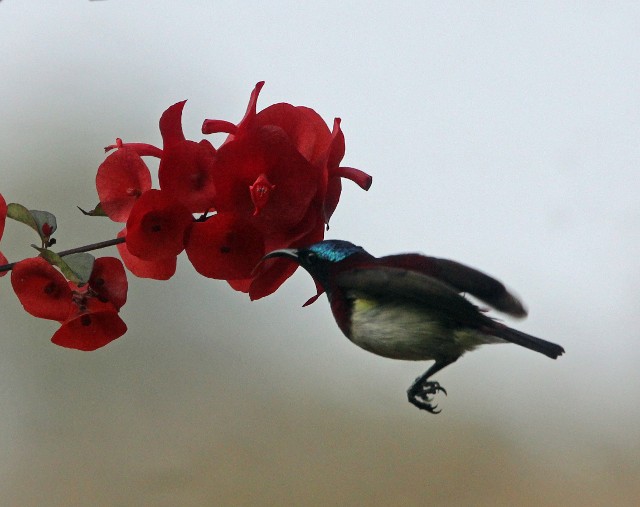
Purple-rumped Sunbird at Silent Valley.
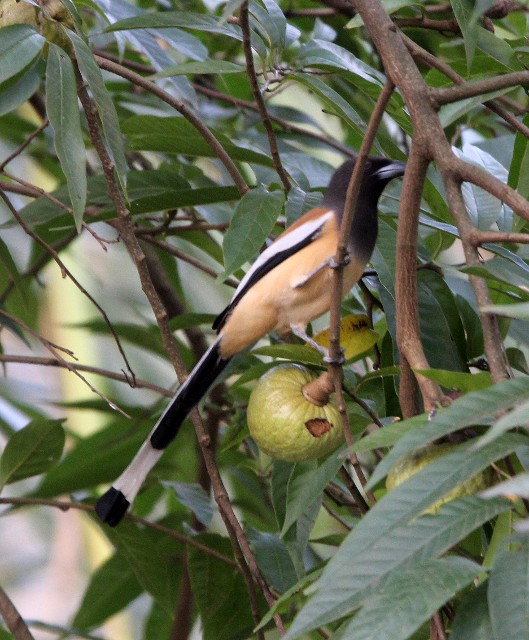
Rufous Treepie at Silent Valley.
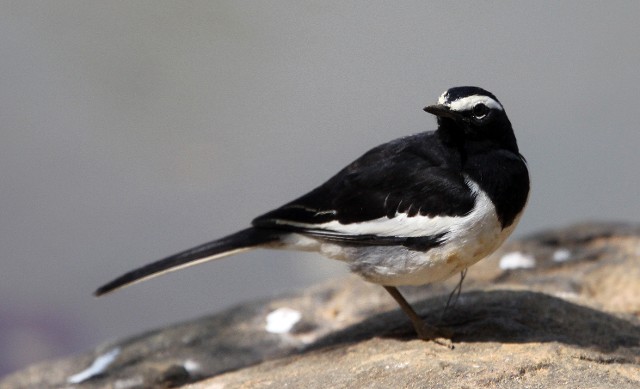
White-browed Wagtail at Tholpetty
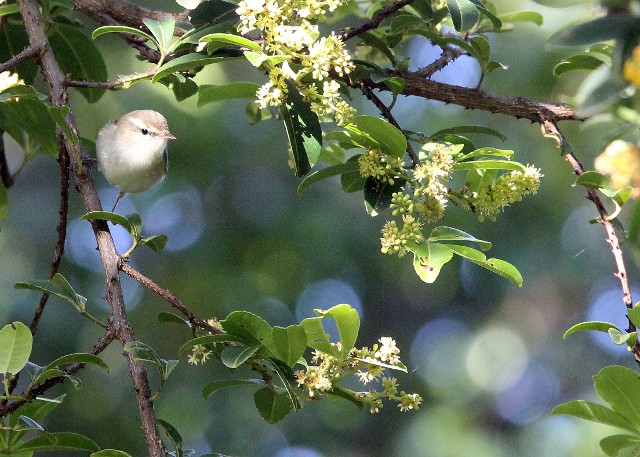
Greenish Warbler at Pampadum Shola.
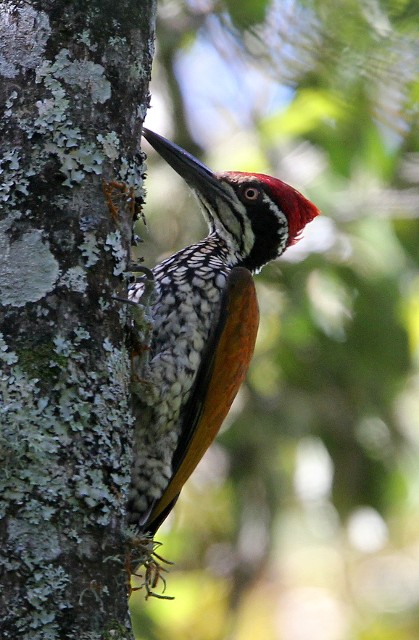
Black-rumped Flameback at Pampadum.
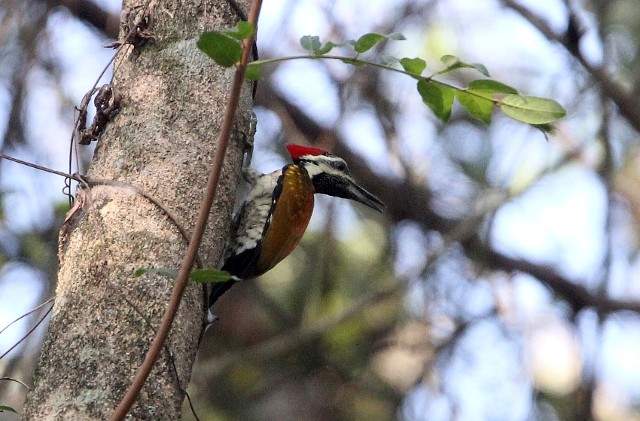
Black-rumped Flameback at Thattekad.
Western Ghats Bird List
- Grey Francolin (Francolinus pondicerianus)
- Red Spurfowl (Galloperdix spadicea)
- Grey Junglefowl (Gallus sonneratii)
- Indian Peafowl
- Cotton Pygmy Goose
- Spot-billed Duck
- Garganey
- Indian Pygmy Woodpecker (Dendrocops nanus) Voice Only
- White-bellied Woodpecker (Voice Only)
- Lesser Yellownape
- Streak-throated Woodpecker (Picus xanthopygaeus)
- Common Flameback
- Black-rumped Flameback (Dinopium benghalensis)
- White-naped Woodpecker (Chrysocolaptes festivus)
- Greater Flameback
- Heart-spotted Woodpecker (Hemicircus canente)
- Brown-headed Barbet (Megalaima zeylanica)
- White-cheeked Barbet (Megalaima viridis)
- Malabar Grey Hornbill (Ocyceros griseus)
- Great Hornbill
- Eurasian Hoopoe
- Malabar Trogon (Harpactes fasciatus)
- Indian Roller
- Common Kingfisher
- Stork-billed Kingfisher
- White-throated Kingfisher
- Pied Kingfisher
- Green Bee-eater
- Blue-tailed Bee-eater (Merops philippinus)
- Chestnut-headed Bee-eater (Merops leschenaulti)
- Asien Koel (Eudynamys scolopacea)
- Blue-faced Malkoha (Phaenicophaeus leschenaultia)
- Greater Coucal
- Vernal Hanging Parrot (Loriculus vernalis)
- Roes-winged Parrot
- Plum-headed Parrot
- Malabar Parrakeet (Psittacula columboides)
- Indian Swiftlet (Aerodramus unicolor)
- Asian Palm Swift
- Crested Treeswift
- Indian Scops Owl (Otus bakkamoena)
- Brown Fish Owl (Ketupa zeylonensis)
- Jungle Owlet
- Brown Hawk Owl (Ninox scutulata)
- Jerdon’s Nightjar (Caprimulgus atripennis)
- Nilgiri Wood Pigeon (Columba elphinstonii)
- Spotted Dove
- Emerald Dove
- Green Imperial Pigeon
- White-breasted Waterhen
- Common Coot
- Green Sandpiper
- Pheasant-tailed Jacana
- Bronze-winged Jacana
- Red-wattled Lapwing
- Whiskered Tern
- Oriental Honey Buzzard
- Black-shouldered Kite
- Black Kite
- Brahminy Kite
- Crested Serpent Eagle
- Shikra
- Himalayan Buzzard (Buteo refectus)
- Crested or Changeable Hawk Eagle
- Common Kestrel
- Little Grebe
- Little Cormorant
- Grey Heron
- Purple Heron
- Great Egret
- Intermediate Egret
- Little Egret
- Cattle Egret
- Indian Pond Heron
- Black-headed Ibis
- Indian Black Ibis (Psuedibis papillosa)
- Glossy Ibis
- Panted Stork
- Asian Openbill
- Woolly-necked Stork
- Asian Fairy Bluebird
- Jerdon’s Leafbird (Chloropsis jerdoni)
- Golden-fronted Leafbird (Chloropsis aurifrons)
- Brown Shrike
- Long-tailed Shrike
- Rufous Treepie
- White-bellied Treepie (Dendrocitta leucogastra)
- House Crow
- Jungle Crow
- Ashy Woodswallow
- Eurasian Golden Oriole
- Black-naped Oriole
- Black-hooded Oriole
- Large Cuckoo-shrike (Coracina macei)
- Black-headed Cuckoo-shrike (Coracina melanoptera)
- Rosy Minivet (Pericrocotus cinnamomeus)
- Orange Minivet (Pericrocotus flammeus)
- Bar-winged Flycatcher-shriker (Hemipus picatus)
- Black Drongo
- Ashy Drongo
- White-bellied Drongo (Dicrurus caerulescens)
- Bronzed Drongo
- Greater Racket-tailed Drongo
- Asian Paradise Flycatcher
- Large Woodshrike (Tephrodornis gularis)
- Malabar Woodshrike (Tephrodornis sylvicola)
- Malabar Whistling-thrush (Myiophonus horsfieldi)
- White-bellied Blue Robin (Brachypteryx albiventris)
- Eurasian Blackbird
- Nilgiri Blue Robin (Brachypteryx major)
- Asian Brown Flycatcher
- Rusty-tailed Flycatcher (Muscicapa ruficauda)
- Black-and-orange Flycatcher (Ficedula nigrorufa)
- Nilgiri Flycatcher (Eumyias ablicaudata)
- White-bellied Blue-Flycatcher (Cyornis pallipes)
- Tickell’s Blue Flycather (Cyornis tickelliae)
- Grey-headed Canary Flycatcher (Culicicapa ceylonensis)
- Indian Blue Robin (Luscinia brunnea)
- Oriental Magpie Robin
- White-rumped Shama
- Pied Bushchat (Saxicola caprata)
- Malabar White-headed Starling (Sturnia blythii)
- Common Myna
- Southern Hill Myna (Gracula indica)
- Jungle Myna
- Velvet-fronted Nuthatch (Sitta frontalis)
- Great Tit
- Indian Yellow Tit (Parus aplonotus)
- Barn Swallow
- Hill Swallow (Pacific)
- Red-rumped Swallow
- Flame-throated Bulbul (Pycnonotus gularis)
- Red-whiskered Bulbul
- Red-vented Bulbul (Pycnonotus cafer)
- Yellow-browned Bulbul (Iole indica)
- Grey-breasted Prinia (Prinia hodgsonii)
- Plain Prinia
- Oriental White-eye
- Blyth’s Reed Warbler (Acrocephalus dumetorum)
- Common Tailorbird
- Tickell’s Leaf-warbler (Phylloscopus affinis)
- Greenish Warbler (Phylloscopus trochiloides)
- Tytler’s Leaf-warbler (Phylloscopus tytleri)
- Wynaad Laughingthrush (Garrulax delesserti)
- Kerala Laughingthrush (Trochalopteron fairbanki)
- Indian Scimitar-babbler (Pomatorhinus horsfieldi)
- Dark-fronted Babbler (Rhopocichla atriceps)
- Large Grey Babbler
- Indian Rufous Babbler (Turdoides subrufus)
- Jungle Babbler
- Brown-cheeked Fulvetta (Alcippe poiocephala)
- Malabar Lark (Galerida malabarica)
- Purple-rumped Sunbird (Leptocoma zeylonica)
- Crimson-backed Sunbird
- Loten’s Sunbird (Cinnyris lotenius)
- White-browed Wagtail (Motacilla madaraspatensis)
- Grey Wagtail
- White-throated Munia (Lonchura malabarica)
- Black-throated Munia (Lonchura kelaarti)
- Common Rosefinch (Carpodacus erythrinus)
Other Critters from the Western Ghats!
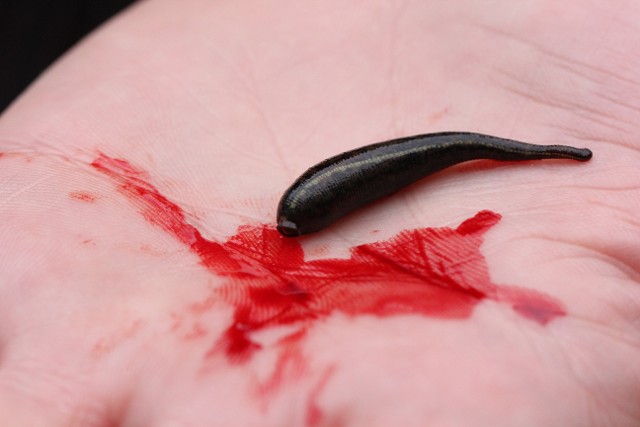
We all had our fair share of leeches while trekking the Western Ghats...
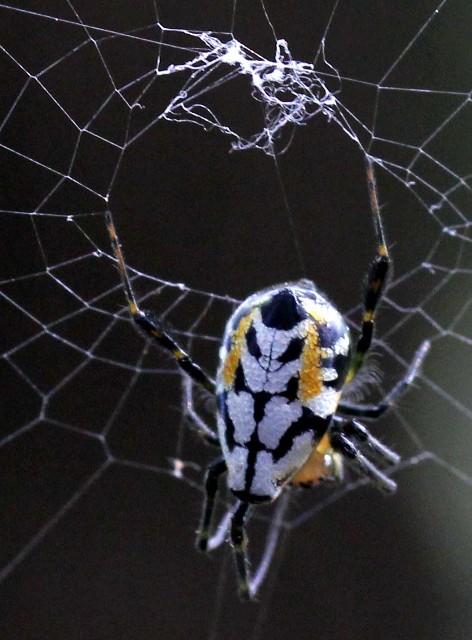
Som and her tiny critters!
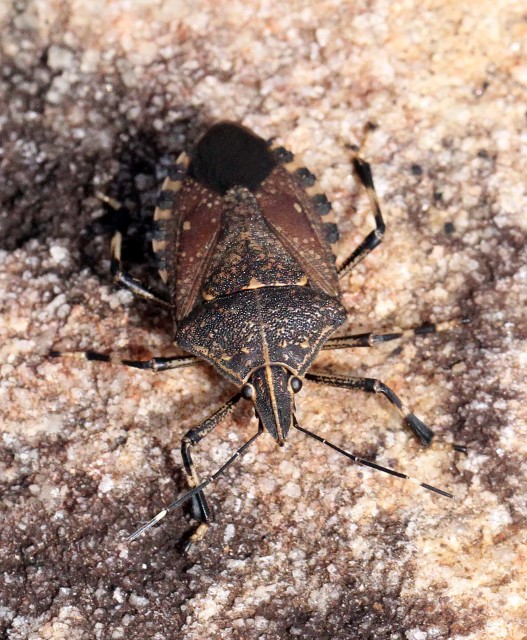
A true bug captured by Som in Valparai.
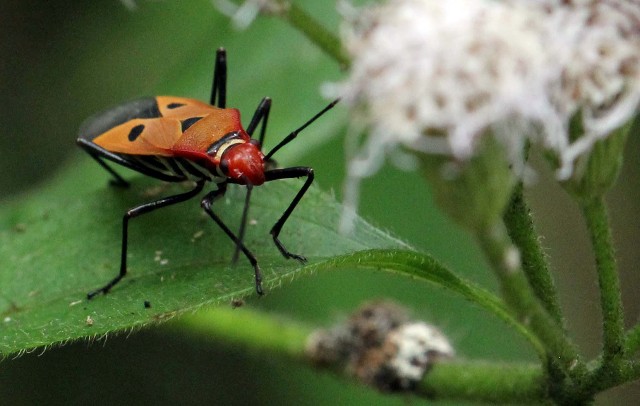
Another true bug spotted by Som in Topslip.
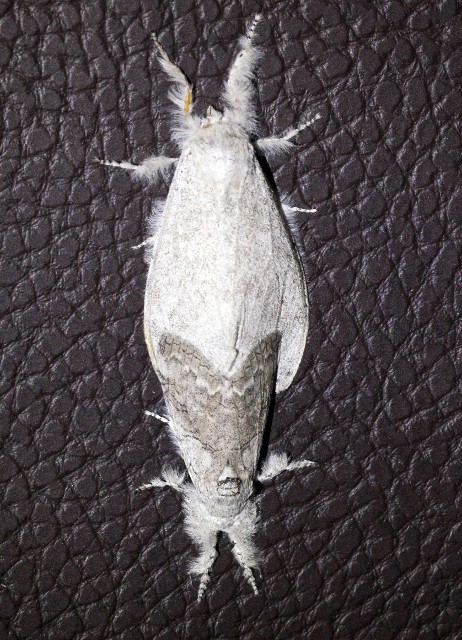
At first Som thought this was some sort of weird mammal....
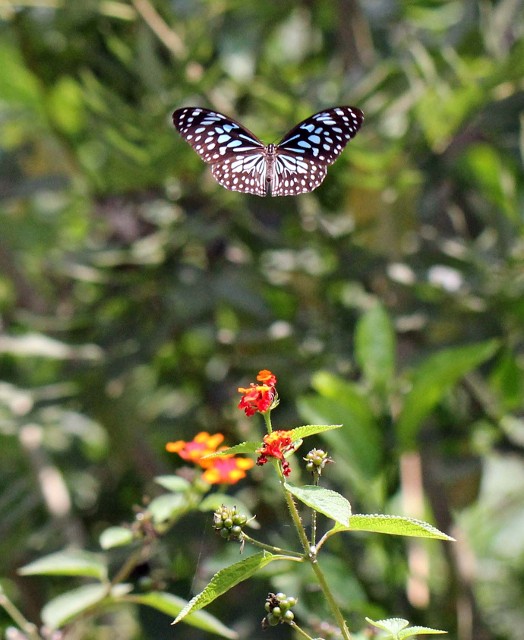
Nice shot Som!
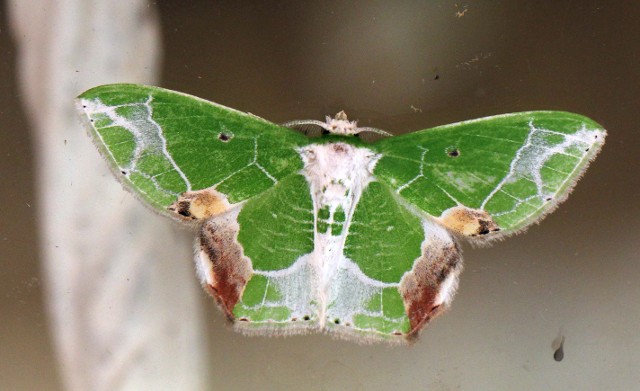
Great leps at Valparai!
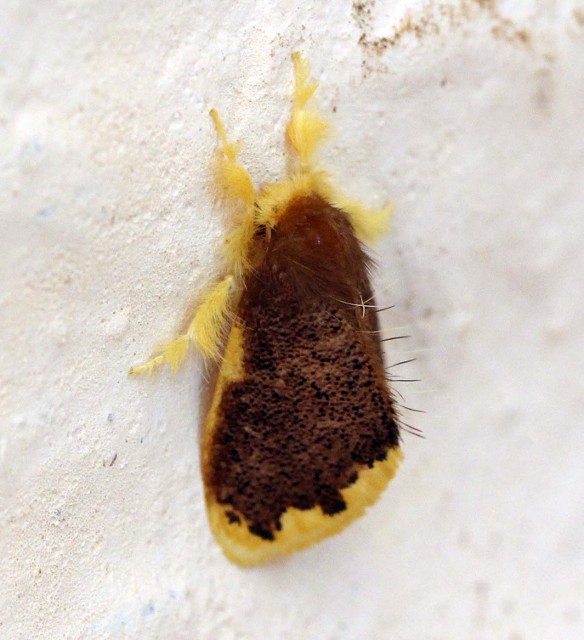
Furry moth in Valparai.
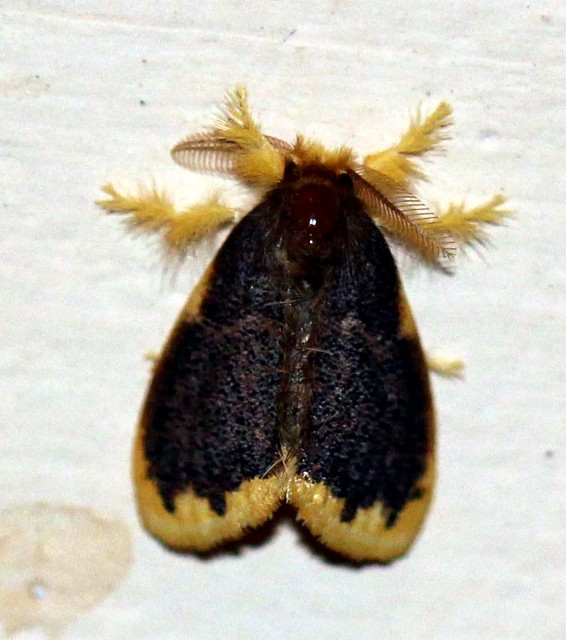
Not sure of the family - perhaps Arctiidae?
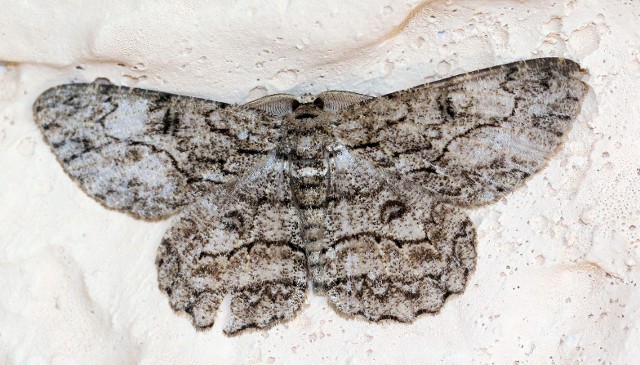
Moth in Valparai.
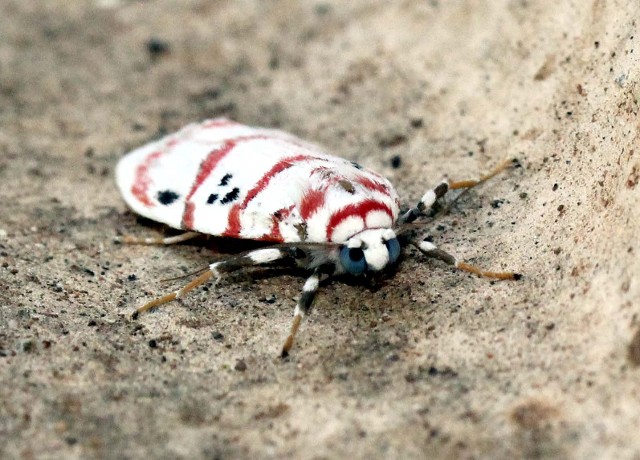
Spectacular little Arctiid.
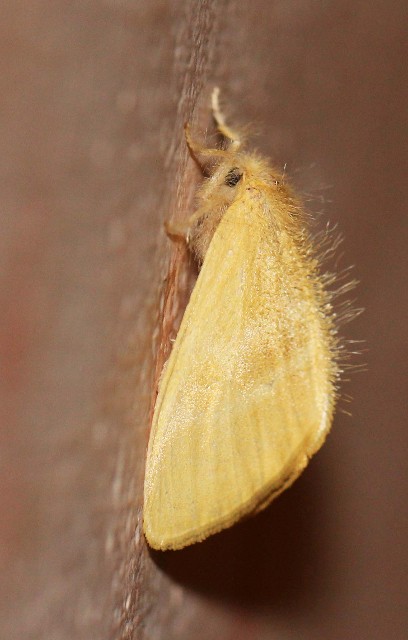
Som was in moth central in Valparai!
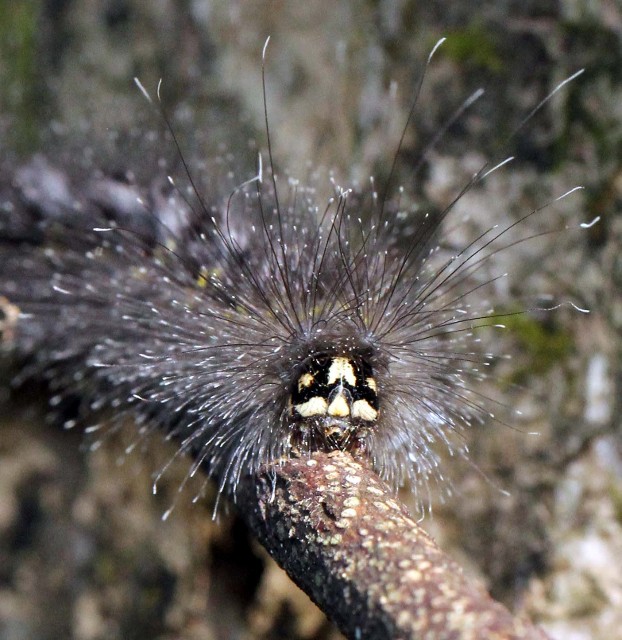
Amazing.
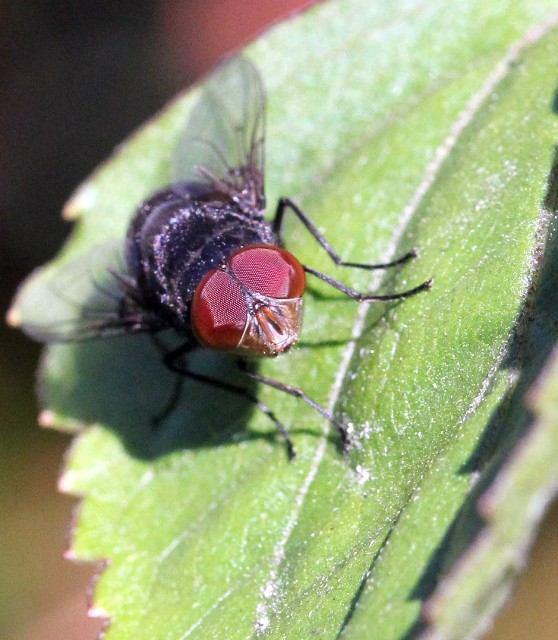
Fly!
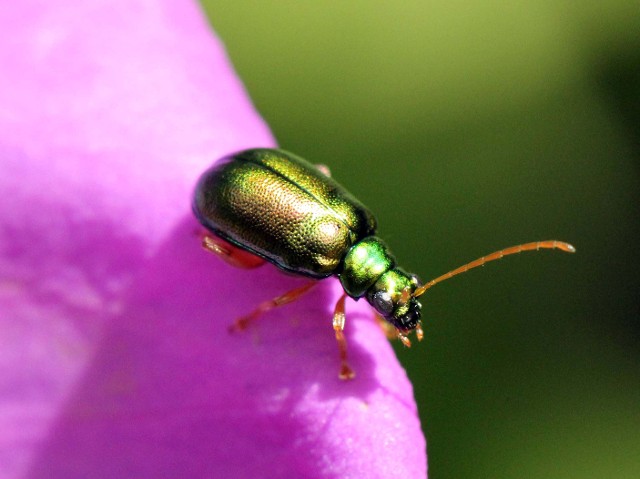
Spectacular Chrysomelid Leaf-beetle in Pampadum Shola.
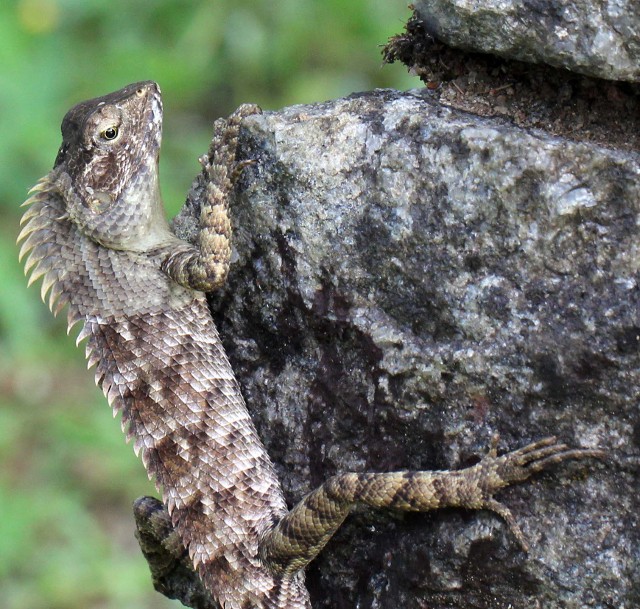
Calotes Garden Lizard in Thattekad.
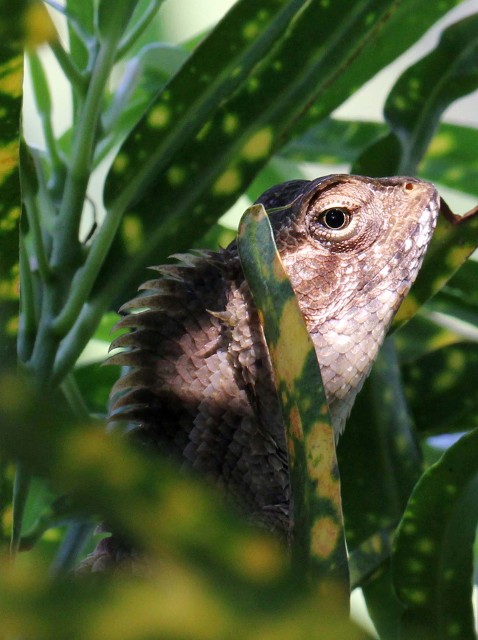
Garden Lizard in Thattekad.
More Stuff!
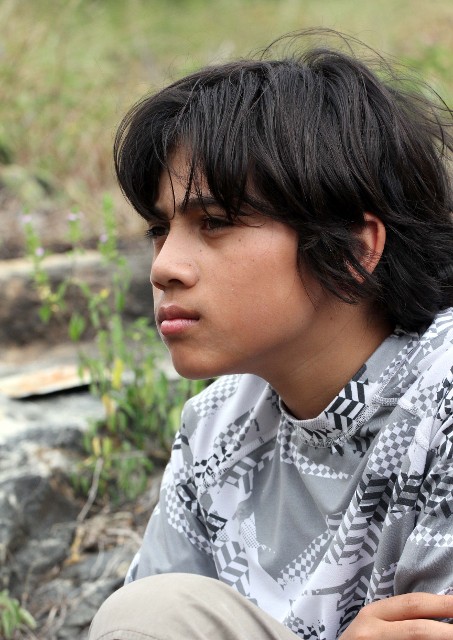
My little (well not so little anymore!) intrepid traveler....
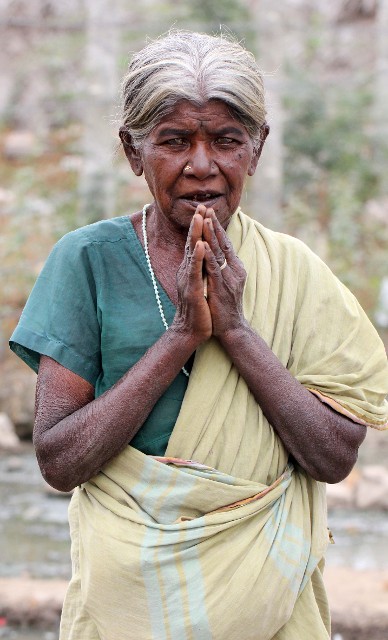
A lovely lady in Chinnar.
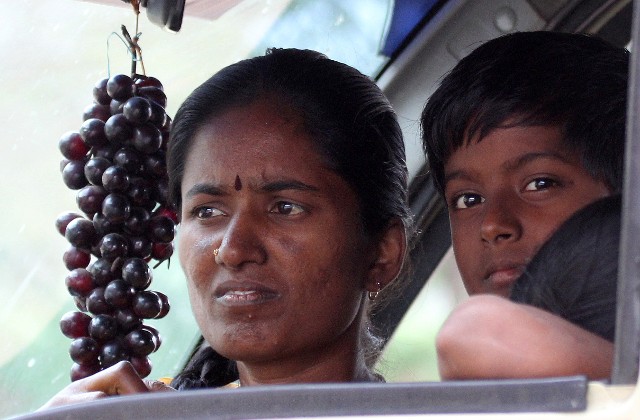
Sharing time at a petrol station in Tamil Nadu...
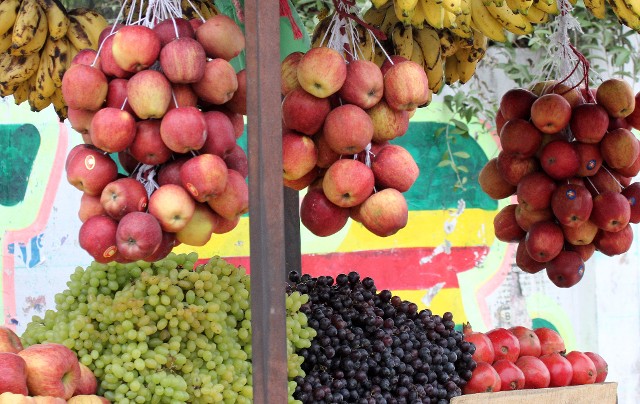
Fruit for sale near Chinnar.
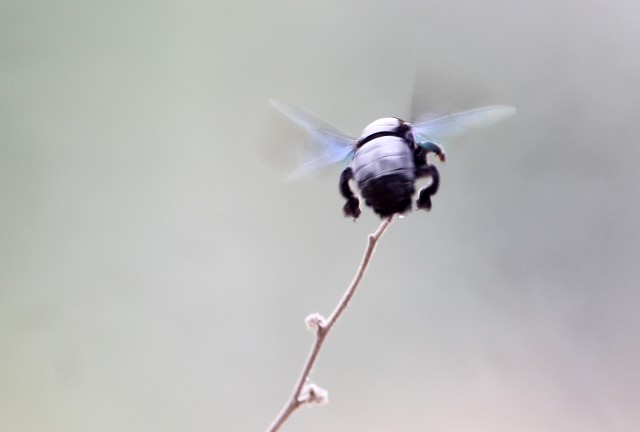
Som is getting much better at the macro photography!
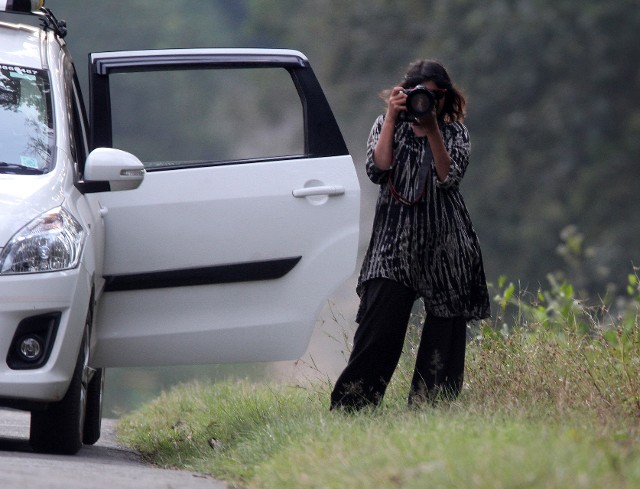
Smile!
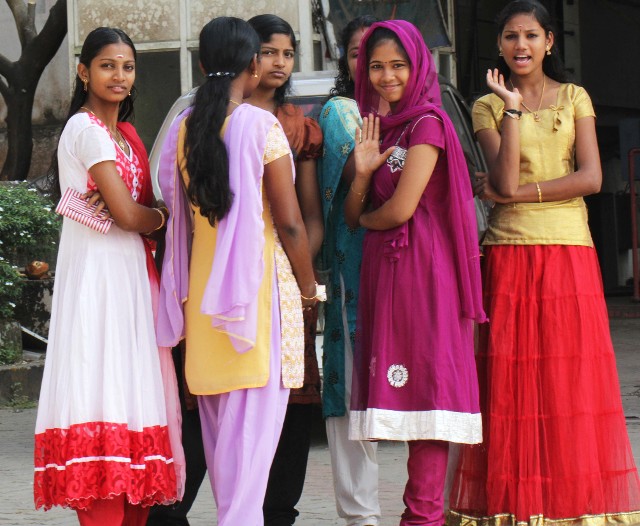
Nice saris!
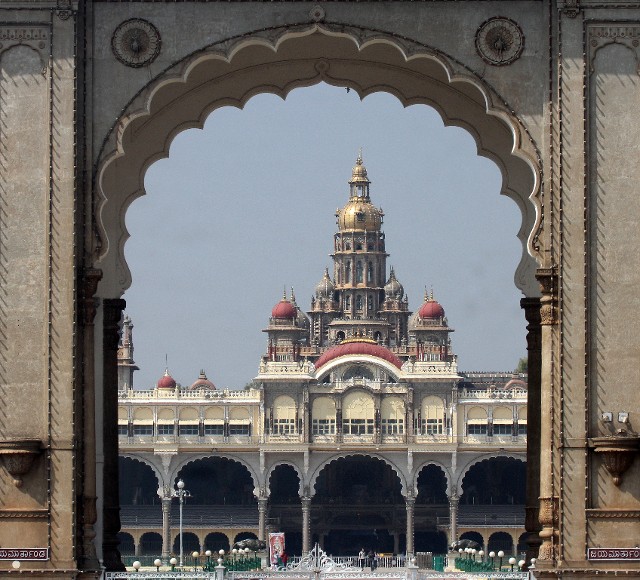
Spectacular Mysore Palace seen briefly on our final day in India.
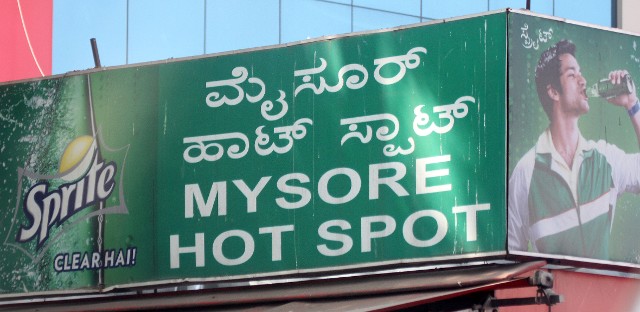
I could not resist...
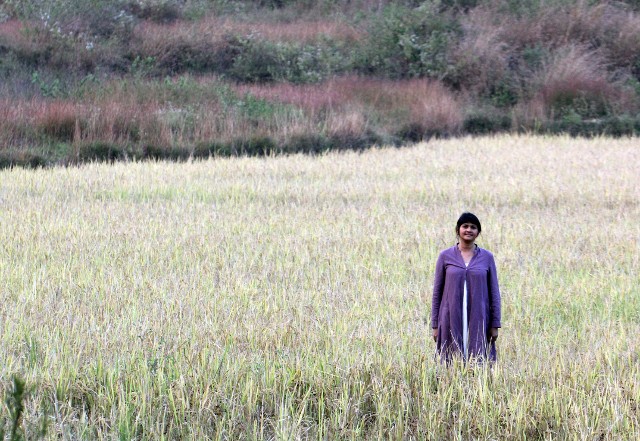
Som just cannot resist posing in fields around the world.... This one was just outside Tholpetty in Tamil Nadu.
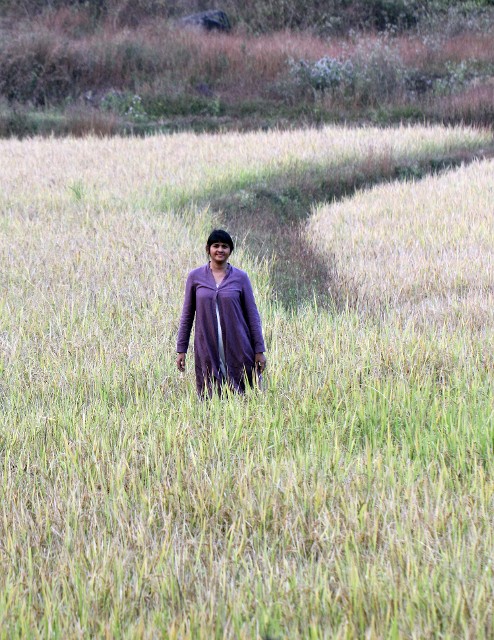
Fields of Som!
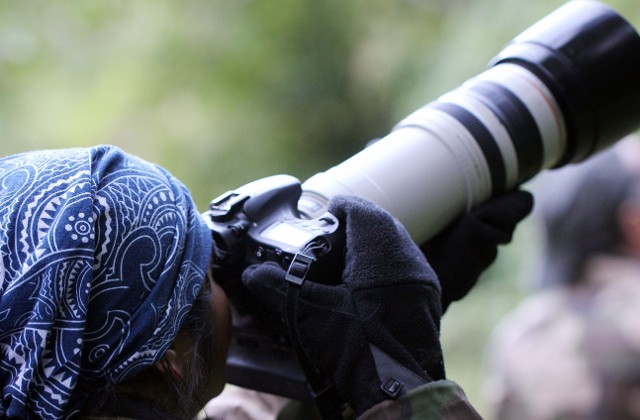
Som getting something on the sensor!
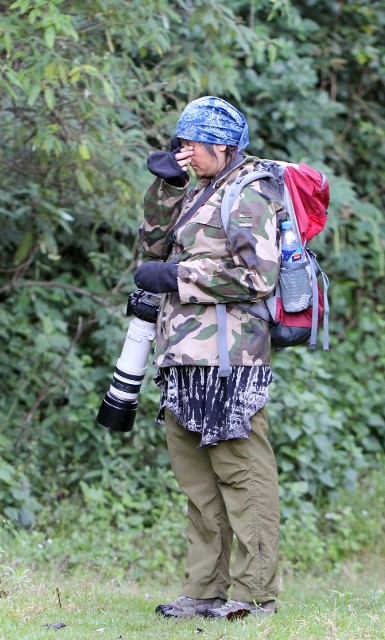
We worked pretty hard and got up pretty early....All good fun though.
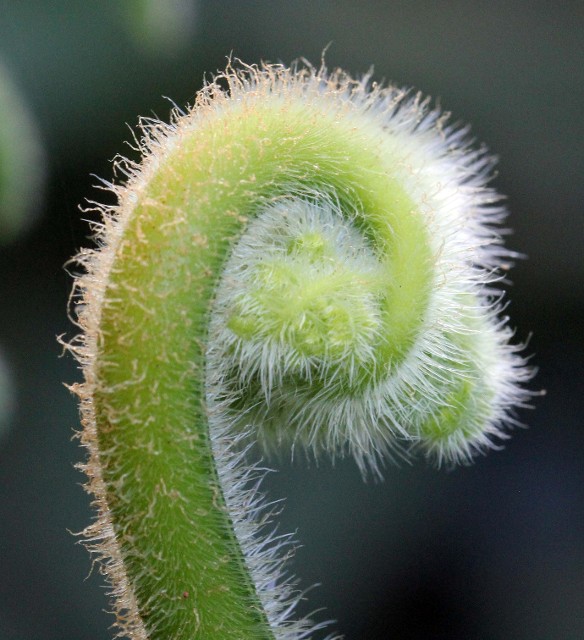
A fern fiddlhead at Pampadum Shola.
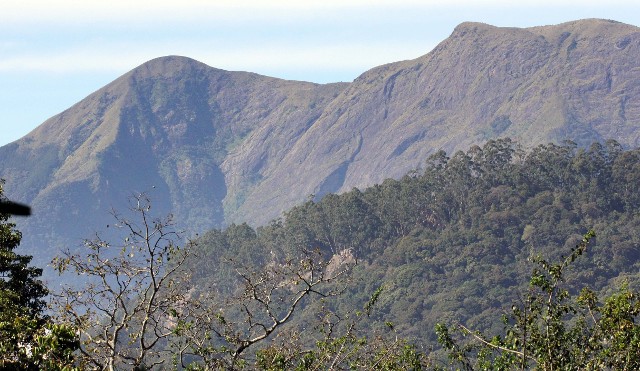
Amazing views at Pampadum Shola.
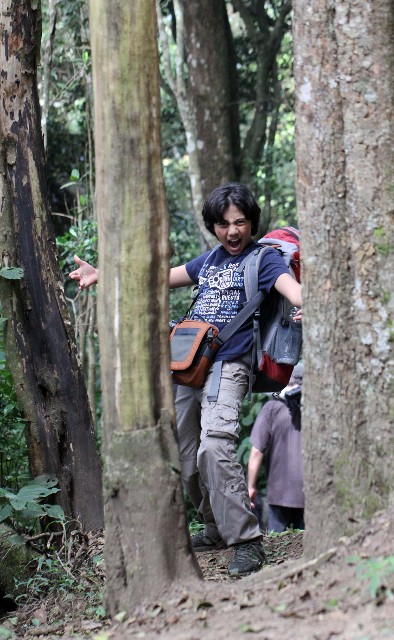
Cokie getting goofy at Pampadum Shola.
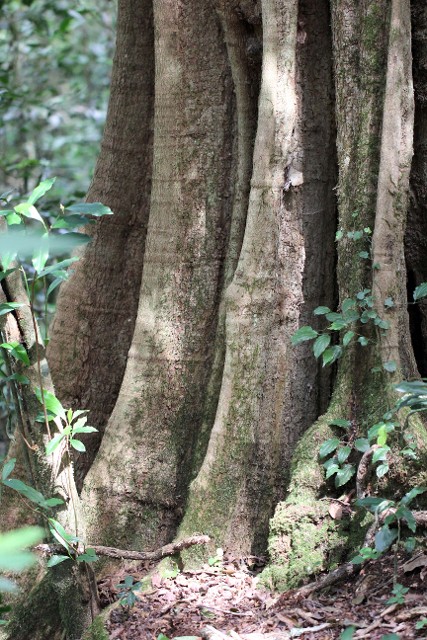
A forest giant at Pampadum Shola.
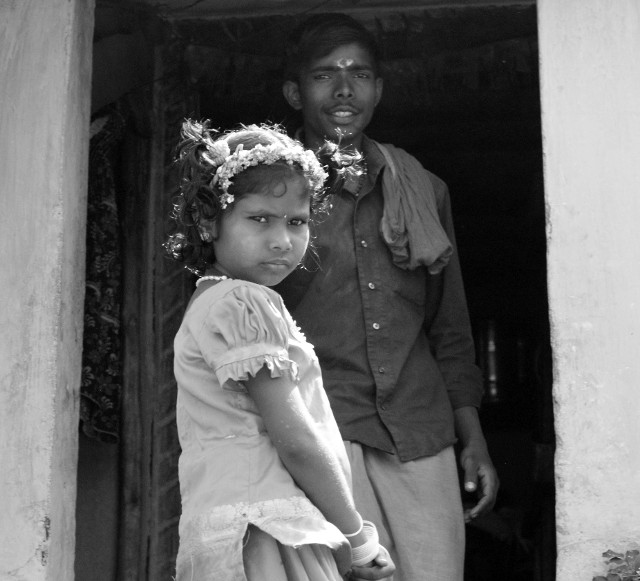
Little girl near Pampadum Shola.
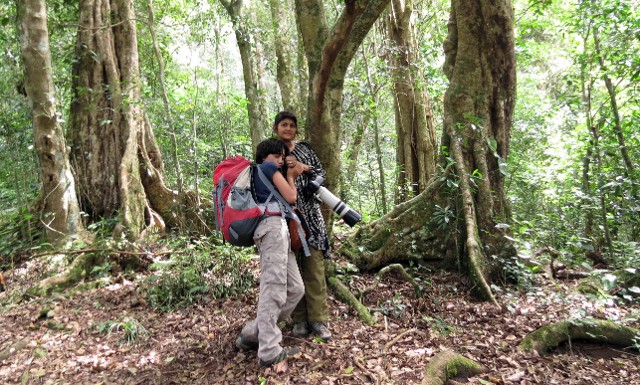
Smooch time in Pampadum Shola!
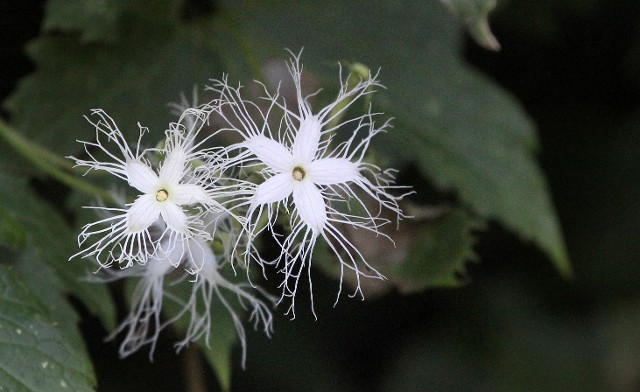
Although I have no idea on its ID, this species was common and in bloom at Pampadum Shola.
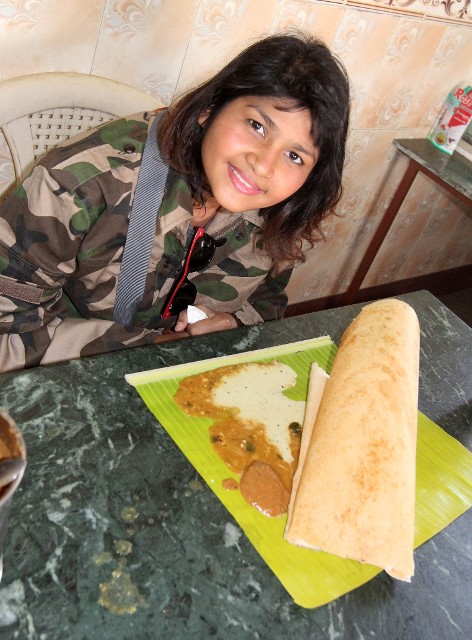
One of our best meals in the Western Ghats region! Dosa breakfast in Pollachi, Tamil Nadu.
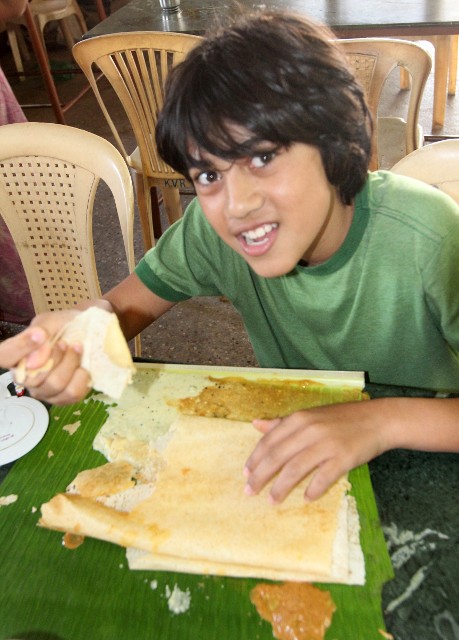
Cokie got in to it too!
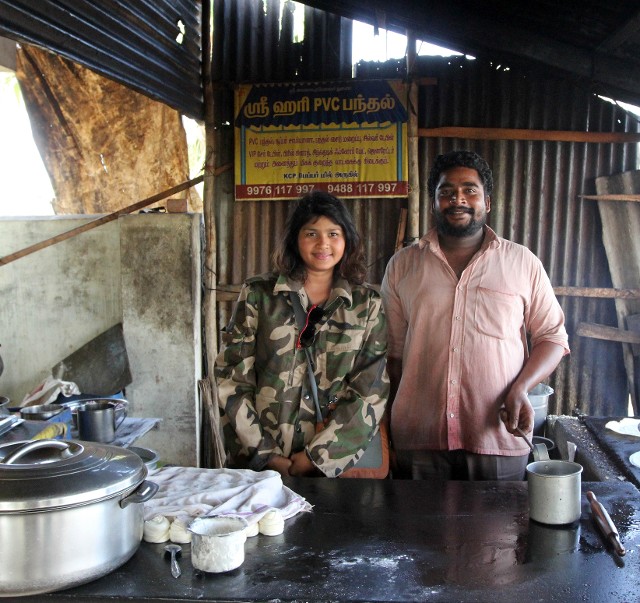
Our Dosa chef in Pollachi!
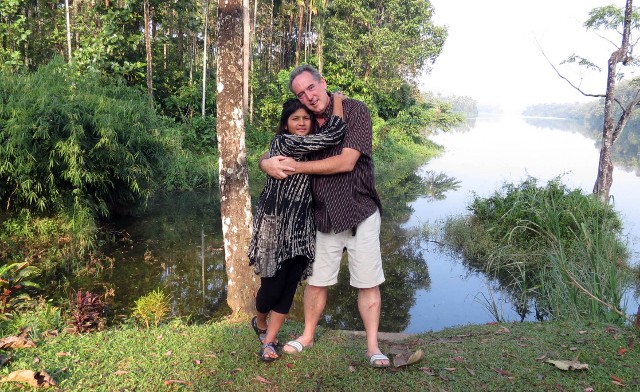
Twelve years with my little Orange! December 21, 2014.
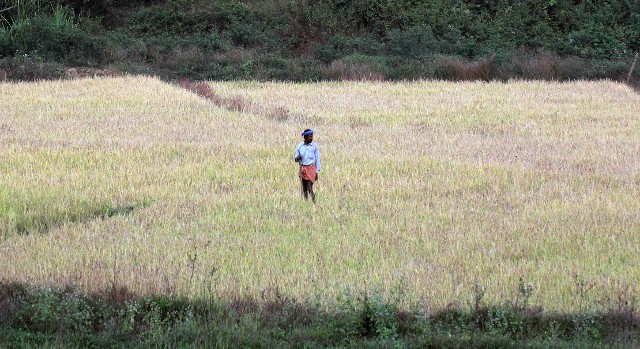
Villager in a rice paddy near Tholpetty.
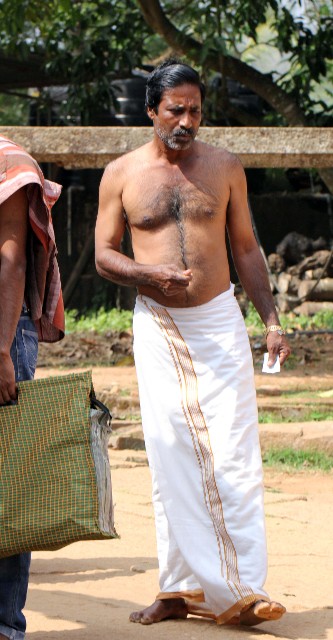
Hindu pilgrim at Thirunelly Temple.
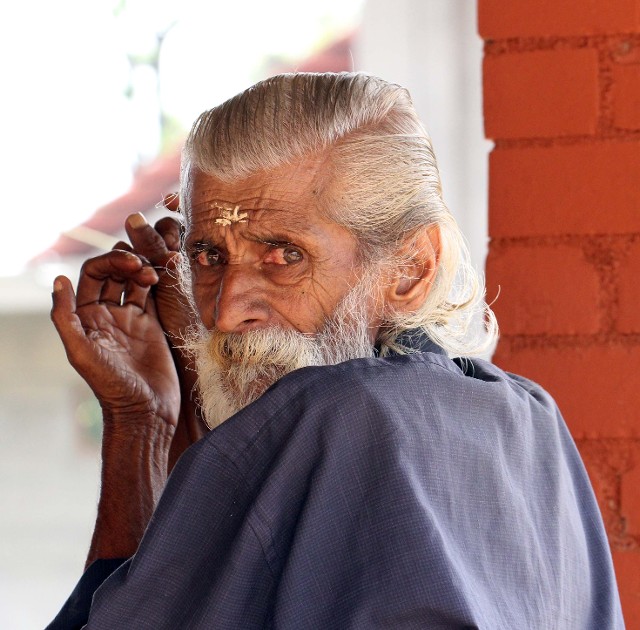
Hello!
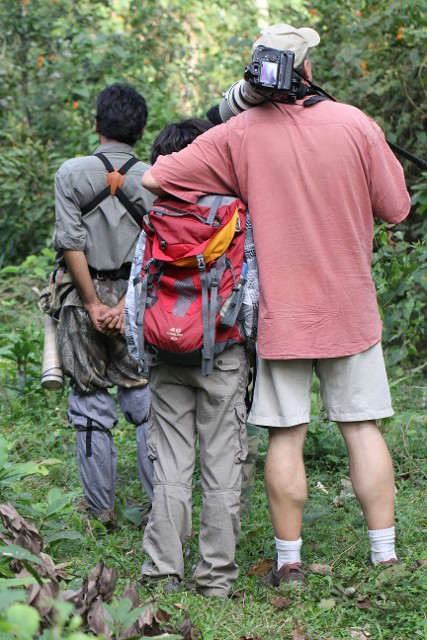
My best friend.
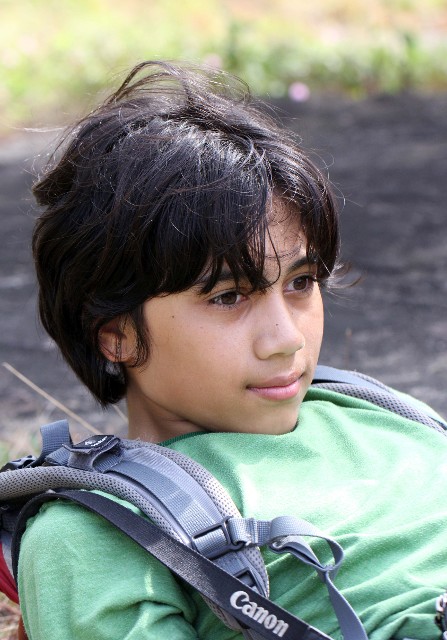
Cokie relaxing in Topslip.
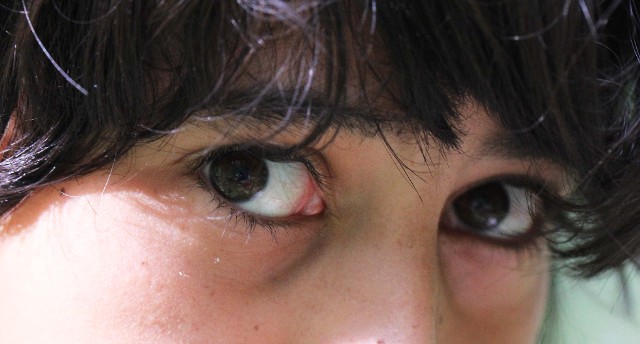
Cokie
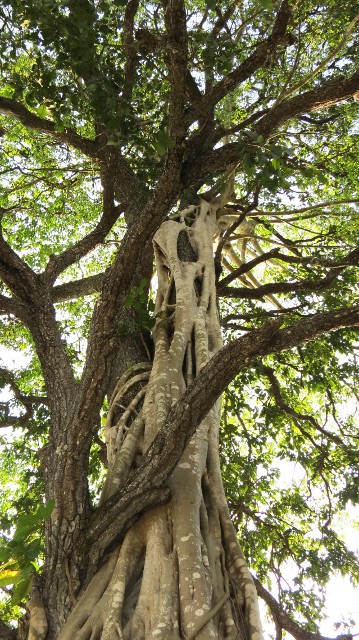
Strangler Ficus in Topslip.
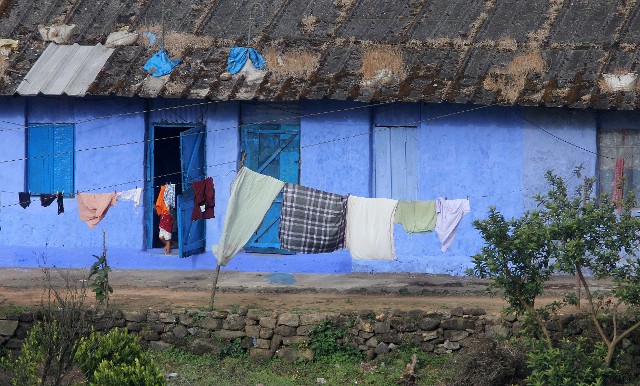
Workers' home in Valparai.
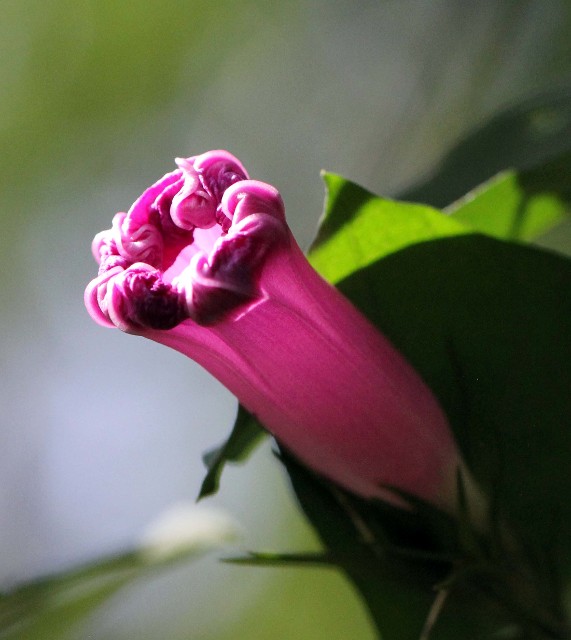
One of Som's nice flower shots at Valparai.
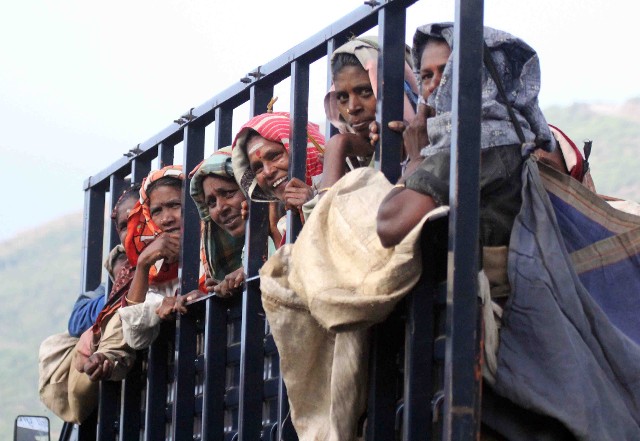
Tea workers at Valparai.
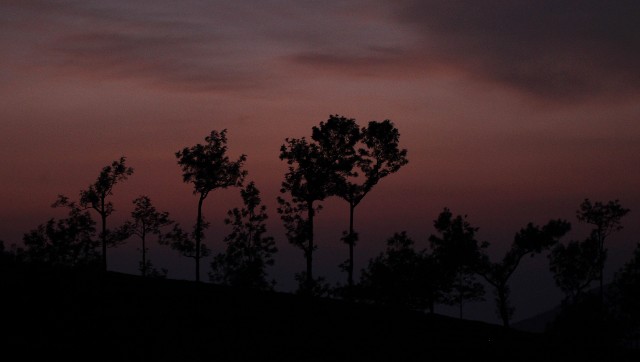
Lovely Valparai sunset.
Check out our Pbase galleries (Click Here) for more images from the Western Ghats!
